
5 Best Watermakers for Sailboats

Last Updated by
Daniel Wade
June 15, 2022
With the right Watermaker, the ocean becomes an almost immeasurable supply of fresh and clean drinking water to keep you hydrated during your offshore sailing adventures.
Many sailors do spend a lot of their time and money on various parts of the sailboat including the sails, engine, electronics, and generators especially when preparing for long-distance voyages.
While there's absolutely nothing wrong with this, they often overlook one crucial part of general human survival: having an ample supply of fresh drinking water.
Whether you have freshwater drinking tanks on your sailboat or planning to cruise in areas where you can easily access clean drinking water, the hassle involved in having to come to the dock to fill the water tanks can be quite overwhelming.
This is exactly why you need to find the best watermakers for sailboats.
Like many other nautical technologies, watermakers have significantly advanced in the last few decades to become very efficient and more reliable. They're no longer a luxury on your sailboat but a necessity. Better still, watermakers have become relatively affordable and are meant to keep you hydrated as you explore areas that do not have clean and fresh drinking water.
In this article, we'll take a look at how watermaker systems work, highlight its benefits, and highlight the best sailboat watermakers on the market right now. At the end of this read, you should be able to choose the best watermaker for your sailboat.
Table of contents

Benefits of Having a Watermaker on Your Sailboat
The freedom and security that come with having full water tanks on your sailboat are of immense importance, especially if you're cruising in an area where fresh drinking water is hard to come by and quite expensive when you do. As such, having a watermaker aboard your sailboat is no longer a luxury like it used to be in the past. With a steady supply of fresh and clean water, your life on the sailboat will be a lot better. This is because you'll have enough clean water to drink, cook, wash, and shower, which is beneficial if you want to enjoy your sailing adventures.
Honestly speaking, many sailors do not actually need a watermaker. Well, if you're planning to sail just near the shores, then there's a chance that you can easily access fresh and clean water by the dock. But this can be limiting if you've been dreaming of going off the grid and sailing to some exotic and unknown places in the world.
With that in mind, a watermaker makes a lot of sense to most sailors. You won't have to worry about having to carry aboard gallons of fresh water for cooking and drinking during your voyage. You won't have to treat freshwater as a precious commodity that must last until you can refill at the next port. With a watermaker, you can simply go ocean crossing without worrying about running out of water.
A watermaker allows you to have a steady supply of fresh and clean water to keep everybody well-hydrated and healthy. You can clean the water anytime you feel like and all you have to do is replace the filter once in a while and you'll be good to go. In essence, a watermaker is probably one of the most important equipment to have aboard your sailboat, so installing it is of great importance if you're a serious sailor.
The Basics of Modern Marine Watermakers
Modern marine watermakers essentially follow the principle of reverse-osmosis to produce pure, drinking water from seawater. During this process and through very high pressure, seawater is forced through a semipermeable membrane that only allows freshwater molecules to pass through it but not salt, bacteria, or any other organic material. The newly made pure, drinking water is then piped to the sailboat's water tanks while the leftover (brine) is discharged overboard.
Even though marine watermakers may differ in the type of pump that's employed and how it is driven, this is one of the most important features in every watermaker. In most cases, water can be electrically pumped or powered directly off the boat's engine. If you have an AC generator or alternator on your boat, it would make much sense to use the AC output to drive the watermaker directly. You can also choose the DC-powered models if you rely on renewable energy from solar or wind. Alternatively, you can still go for AC-powered watermakers but you'll have to buy an inverter.
All in all, DC-powered watermakers are more efficient since they integrate a power-saving energy recovery system (ERS). You must, however, keep in mind that your energy consumption levels might be quite high if you're sailing in colder and saltier areas. This is because the water purification process might be a bit slower in such areas. As such, you should consider investing in a more high-powered watermaker system if you will be sailing in colder and saltier areas than if you're planning to sail more in warm and less salty areas.
As far as an engine-driven watermaker is concerned, you should mount the high-pressure pump on the engine so that it can be belt-driven using an automatic clutch. An engine-driven watermaker should be your first option if you want large quantities of fresh drinking water. This is more productive than AC or DC-powered watermakers. Even with a relatively small engine, this setup has an automatic regulator that constantly pumps the water. With that in mind, engine-driven watermakers are ideal if you want to reduce your energy consumption. To put it into perspective, an engine-driven watermaker can lower energy consumption by an enormous 80%, especially when compared with conventional AC or DC-powered watermaker systems.
How to Choose the Best Watermaker for Your Sailboat
There are many factors to consider when looking for the best watermakers for your sailboat. Here are the most important things to consider.
Your Freshwater Needs
One of the most important things to consider before spending your money on a watermaker is your freshwater needs. What quantity would be enough to keep you going on your sailing adventure? While the quantity might differ from one sailor to the other or from one boat to the other, you should consider the number of gallons that a particular watermaker can produce per day. This will help you in choosing the ideal watermaker; a model that will ensure that you never run out of water. Do not underestimate your water needs, especially if you're planning to sail with your children or if you're planning to stay on the boat for an extended period of time.
Do you have enough space on your vessel to accommodate the type of watermaker you're looking to buy? While most watermakers are designed to fit in the smallest of space, you should consider the actual size of the watermaker and find out whether you have enough space on your vessel to fix it.
Watermakers can run on electricity, renewable energy such as wind and solar (if you have them on your vessel), or both. When looking for the perfect watermaker, you should consider how to power it and whether or not the watermaker has low-energy consumption, which is definitely a great feature. Again, there are also engine-driven watermakers, so it's important to know exactly what you're going for.
Maintenance
Watermakers have a reputation for being difficult to maintain. Fortunately, the equipment and components have improved in the last few years so you should go for a model that's easy to maintain. You should use the watermaker in water bodies that look good, You should avoid using the watermaker in dirty harbors as you may have to change the filters every so often or even damage your watermaker altogether.
Best Watermakers for Sailboats
Let's take a look at the best watermakers available on the market right now.
The Ultra Whisper
Engineered by limited electrical options that can run on either DC or AC, THE Ultra Whisper by Sea Recovery is one of the best watermakers currently available on the market. In addition to being very quiet, this watermaker features an automatic operation that requires very minimal operator adjustment.
This watermaker is ideal for small powerboats and sailboats since it can serve as an efficient water supply. This model boasts about a 75% reduction in power consumption, especially when compared to other models.
- Smooth and quiet water production
- Can produce up to 2,280 liters per day
- Ideal for small boats
- It is energy efficient
- It might not be perfect for large boats
Echotec Watermaker
If you want a watermaker model that can produce 60 liters per hour flawlessly and with no maintenance apart from changing the filters, look no further than the Echotec Watermaker. This model is designed for ultra-reliable performance and easy customer installation.
This watermaker is made from high-quality components that can withstand the continuous harsh marine environment, making it one of the most durable watermakers on the market. This is essentially a series of modular watermakers ranging from 12-volt to 24-volt DC-powered models. They bring forth energy efficiency, a computerized energy recovery system, and ultimate reliability to ensure that you never run out of fresh drinking water while out there on the sea.
- Energy efficient
- Cost-effective
- Comes with a very low speed
- Not ideal for large boats
Spectra Katadyn PowerSurvivor
As a compact and energy-efficient watermaker, the Spectra Katadyn PowerSurvivor is arguably the most affordable watermaker currently available on the market. We are talking about a model that only requires 4 amps to desalinate water for your sailboat. It can produce 1.5 gallons of fresh drinking water per hour, which is an excellent return for a watermaker of its size.
It is also one of the most portable watermakers around. You can choose to either install it permanently or temporarily in case you want to take it somewhere else. This portability is also essential if you're looking for a space-saving model that can fit in the smallest of compartments. Its simple but rugged design is essential in ensuring that it can perform at its best even in harsh marine conditions. In terms of its power capabilities, this is the only model on the market that will convert to a hand-operated system or manual power if there's a power shortage.
- Portable and lightweight
- Rugged design to withstand harsh marine environments
- Efficient and reliable
- Can revert to manual power if there's a power shortage
- Perfect for off-grid sailing
- Gasoline or diesel can easily damage the semi-permeable membrane
Village Marine - Little Wonder Series
Whether you're looking for a watermaker for your small sailboat or looking for a watermaker that can efficiently serve those huge yachts, the Village Marine Little Wonder Series provides everything. This model is meant for experienced sailors who are looking for various capacity options. This watermaker weighs just about 69 pounds but can produce nearly 180 gallons of fresh drinking water each day.
Designed with a low RPM high-pressure pump, this model remains one of the most efficient and economical watermakers on the market. That's not all; this watermaker is designed with corrosion-resistant features and is one of the most serviceable watermakers in the game. It is reliable, quiet, and portable; all factors that make a watermaker great.
- Easy to operate
- Corrosion-resistant
- Easy to maintain
- Quiet and versatile
- It doesn't have automatic adjustment controls
Ventura 150 Watermaker
This is one of the most versatile watermakers on the market. It can use both electricity and renewable energy. This model is engineered to be lightweight and energy-efficient and its compact and modular design makes it a great option if you're looking for a watermaker that's easy to use and install in confined spaces.
The Ventura 150 watermaker is highly efficient as it can produce over 6 gallons of water an hour, which makes it quite perfect for small vessels. This sailboat watermaker features a controller that allows you to operate and monitor the device remotely. It also has the auto store button that will automatically flash the system after every five days.
This watermaker is quiet and surprisingly compact despite its ability to produce about 150 gallons of water per day. It also gives you the option of going for the automated manual or manual model.
- Very versatile
- Can use both electricity and renewable energy power
- It is smooth and quiet
- It is compact and lightweight
- The manual model has analog controls
To this end, it's easy to see that having an ideal watermaker aboard your vessel is one of the first crucial steps towards being self-sufficient and sustainable. With a watermaker, you'll be able to access fresh drinking water at all times when sailing even in far-flung places. Most of these models are well-constructed and incorporate some of the best technologies that make them efficient, reliable, and easy to install, use, and maintain.
So when it comes to choosing the best watermaker for your sailboat, it may all come down to what is ideal for you in terms of energy consumption, efficiency, the quantity of water produced, among many other things. With an ideal watermaker, you can remain off the grid for as long as you want without ever worrying about running out of water and this is of great importance in enjoying your sailing adventures.
Related Articles
I've personally had thousands of questions about sailing and sailboats over the years. As I learn and experience sailing, and the community, I share the answers that work and make sense to me, here on Life of Sailing.
by this author
Sailboat Upgrades
Most Recent

What Does "Sailing By The Lee" Mean?
October 3, 2023

The Best Sailing Schools And Programs: Reviews & Ratings
September 26, 2023
Important Legal Info
Lifeofsailing.com is a participant in the Amazon Services LLC Associates Program, an affiliate advertising program designed to provide a means for sites to earn advertising fees by advertising and linking to Amazon. This site also participates in other affiliate programs and is compensated for referring traffic and business to these companies.
Similar Posts

How To Choose The Right Sailing Instructor
August 16, 2023

Cost To Sail Around The World
May 16, 2023

Small Sailboat Sizes: A Complete Guide
October 30, 2022
Popular Posts

Best Liveaboard Catamaran Sailboats
December 28, 2023

Can a Novice Sail Around the World?
Elizabeth O'Malley

4 Best Electric Outboard Motors

How Long Did It Take The Vikings To Sail To England?

10 Best Sailboat Brands (And Why)
December 20, 2023

7 Best Places To Liveaboard A Sailboat
Get the best sailing content.
Top Rated Posts
Lifeofsailing.com is a participant in the Amazon Services LLC Associates Program, an affiliate advertising program designed to provide a means for sites to earn advertising fees by advertising and linking to Amazon. This site also participates in other affiliate programs and is compensated for referring traffic and business to these companies. (866) 342-SAIL
© 2024 Life of Sailing Email: [email protected] Address: 11816 Inwood Rd #3024 Dallas, TX 75244 Disclaimer Privacy Policy
- New Sailboats
- Sailboats 21-30ft
- Sailboats 31-35ft
- Sailboats 36-40ft
- Sailboats Over 40ft
- Sailboats Under 21feet
- used_sailboats
- Apps and Computer Programs
- Communications
- Fishfinders
- Handheld Electronics
- Plotters MFDS Rradar
- Wind, Speed & Depth Instruments
- Anchoring Mooring
- Running Rigging
- Sails Canvas
- Standing Rigging
- Diesel Engines
- Off Grid Energy
- Cleaning Waxing
- DIY Projects
- Repair, Tools & Materials
- Spare Parts
- Tools & Gadgets
- Cabin Comfort
- Ventilation
- Footwear Apparel
- Foul Weather Gear
- Mailport & PS Advisor
- Inside Practical Sailor Blog
- Activate My Web Access
- Reset Password
- Customer Service

- Free Newsletter

Mason 33 Used Boat Review

Beneteau 311, Catalina 310 and Hunter 326 Used Boat Comparison

Maine Cat 41 Used Boat Review

Cheoy Lee Clipper 36 & 42 Used Boat Review

Tips From A First “Sail” on the ICW

Tillerpilot Tips and Safety Cautions

Best Crimpers and Strippers for Fixing Marine Electrical Connectors

Thinking Through a Solar Power Installation

Stopping Mainsheet Twist

Working with High-Tech Ropes
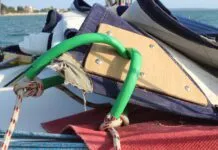
Getting a Clue for the Blown-Out Clew
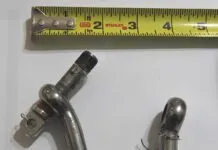
Monel Seizing Wire is Worth the Extra Cost

Fuel Lift Pump: Easy DIY Diesel Fuel System Diagnostic and Repair

Ensuring Safe Shorepower

Sinking? Check Your Stuffing Box

The Rain Catcher’s Guide

Boat Maintenance for the Technically Illiterate: Part 1

Whats the Best Way to Restore Clear Plastic Windows?

Mastering Precision Drilling: How to Use Drill Guides

Giving Bugs the Big Goodbye

Galley Gadgets for the Cruising Sailor

Those Extras you Don’t Need But Love to Have

UV Clothing: Is It Worth the Hype?

Preparing Yourself for Solo Sailing

How to Select Crew for a Passage or Delivery

Preparing A Boat to Sail Solo

On Watch: This 60-Year-Old Hinckley Pilot 35 is Also a Working…

On Watch: America’s Cup

On Watch: All Eyes on Europe Sail Racing

Dear Readers

Chafe Protection for Dock Lines
- Belowdecks & Amenities
- Marine Electronics
- Systems & Propulsion
Test of Six 12-volt Watermakers
While at first blush all appear about the same size, we find important differences in output and current consumption. the spectra 180 is amazingly efficient but expensive. of the six, village marine tec's little wonder seems the most tried and true..
Last month we took an overview of the pros and cons of 12-volt watermakers. This month, we look at high-output machines from five manufacturers, ranging from systems from industry giants such as Village Marine to small shops such as SK Engineering. All of the watermakers we looked at were production models, although the Spectra 180 we tested had been re-configured to serve as a demonstration model.
As we began our market survey and field testing, we discovered that a number of other manufacturers are jumping into the fray, realizing that 12-volt watermakers constitute a small but growing segment of the market. Most notable among these new players is HRO-another industry giant-which has been promising a state-of-the-art, computer-controlled, self-contained 12-volt watermaker for more than a year. We saw the literature a year ago at the Miami Boat Show. We saw a non-operational mockup last fall at the Southampton, England boat show. We have yet to see a functional machine in the flesh.
With the assistance of Andy Cortvriend of Ocean Link, a knowledgable Portsmouth, Rhode Island, marine servicing company, we tested product output, water quality, and electrical consumption of all the watermakers. Electrical consumption was measured with a Cruising Equipment amp-hour meter, using gel cell batteries maintained at full capacity by a Heart inverter/charger between tests.
Saltwater was pulled from lower Narragansett Bay into a large storage tank maintained at a constant temperature during the tests. The waters at our Little Harbor test facility are not as clean as open ocean waters, but are closer to the reality of the watermaking most cruisers will experience. This was not a pure laboratory test with manufactured sea water of exactly the right total dissolved solids (TDS).
We then examined each machine carefully on the bench, looking for weak points, strong points, potential installation or maintenance hang-ups, and general quality of construction.
The quality of output water was tested with a TDS meter and all machines easily met standards for potability.
The real test of any watermaker is how it performs over time-not just months, but years. Because maintenance is a key factor in longevity and trouble-free operation, the owner/operator will bear a large portion of the responsibility for the long-term success of any watermaker installation.
Here are our findings.
Village Marine Little Wonder When Village Marine Tecs Little Wonder was introduced almost a decade ago, it was the first 12-volt watermaker that actually had the capacity to supply the water needs of a medium-sized cruising sailboat without almost continual running. More than 1,500 of these compact, well-made machines have been produced, and there have been virtually no changes to the design or components over the entire production run.
Both 12-volt and 24-volt models are available, with the higher voltage model producing slightly more product flow.
The standard model is totally self-contained in a well-designed package, with all components bolted to a heavy aluminum chassis, topped off with a removable aluminum cover. Mounting requires drilling through the chassis for suitable through-bolts.
The three plumbing connections-feed water, product water, and brine discharge-are pre-plumbed through one end of the case. The wiring junction box also contains connections for an optional feed water boost pump, and an internal 25-amp breaker to protect the electrics.
Although the package is tightly plumbed, there is reasonable space between components for service.
Power for the high-pressure pump is provided by a continuous-duty 1/4-hp. Pacific Scientific motor, rated at 21.5 amps at full power. The motor is connected to the high-pressure pump by a lightweight cogged belt.
The heart of the Little Wonder is its proprietary high-pressure pump, specially made by Village Marine for this machine. It features a titanium pump head with ceramic plunger-a combination which should be corrosion-proof for the life of the watermaker. All wetted parts in the pump are titanium, type 316 stainless steel, or ceramic. High-pressure plumbing and connectors are type 316 stainless.
Monitoring includes a high-pressure gauge and product flow gauge. System pressure can be adjusted if necessary using an open-end wrench, although the factory pre-set pressure of 800 psi should be correct for most watermaking situations. The pressure regulator is a high-quality regulator, rather than the more commonly seen needle-valve adjuster.
The fiberglass pressure vessel and the standard-sized 2521 membrane are both manufactured by Village Marine, although they are industry-standard in size.
In our tests, the Little Wonder produced a product flow of 5.8 gph at 13 volts, drawing 16.7 amps-about 37.4 watts per gallon. This does not include the 1-amp current draw of the small optional booster pump, which is required for above-the-waterline installations, long feed water runs, or installations containing multiple pre-filters.
The water produced by the machine we tested was very high quality. The noise level of 79 dB, with the cover removed, was louder than the two quietest machines tested, but was not loud enough to be objectionable.
The self-contained unit is 25.5″ long, 11″ wide, and 9.25″ high, and requires a slightly larger mounting space to accommodate plumbing connections and allow access for removal of fastenings holding the cover. For tight installations, a modular version is available, which does away with the mounting chassis and uses flexible high-pressure hoses rather than rigid stainless steel tubing. Obviously, installation of the modular unit requires slightly more time, but offers a lot of flexibility-very desirable in field installations aboard the typical cruising sailboat, in which locker or shelf space is at a premium.
Documentation is excellent, with a 35-page manual covering installation, operation and maintenance.
The warranty is somewhat complex. The membrane has a three year warranty, the pressure vessel a lifetime warranty, the high pressure pump a one-year warranty-although some of its internal components have only a 90-day warranty-and the electric motor 12 months. You need a flow chart to keep it straight.
The Little Wonder comes with pre-filter, three-way cleaning valve, basic plumbing connectors, and a membrane cleaning kit. You supply PVC hose, hose clamps, and the wiring connection. Options include the boost pump (standard with the modular version, $144 for the self-contained version), a three-way sampling valve ($38), a pre-plumbed fresh water flushing system ($150), hand-held salinity meter ($49), and spares kit for extended cruising ($199). For long-range cruising, all of these options are nearly essential for any properly installed watermaker.
List price of either the self-contained or modular 12-volt Little Wonder is $3,195. It is available at slight discounts through some mail-order catalogs, and there are periodic promotions at boat shows featuring special prices and thrown-in options.
Weight of the self-contained system is 63 lb. (The modular system weighs 48 lb.)
Village Marine will soon introduce a higher-output version of the Little Wonder, a 1/3-hp. watermaker in almost the same package size. Current draw, however, will be about 26 amps, requiring heavier wiring and perhaps a look at your battery capacity and charging capabilities.
Bottom Line: There are quieter 12-volt machines, more efficient ones, cheaper ones, and others that put out more water. The Little Wonder, however, has a combination of features-ease of installation, relatively low current draw, high quality components, and a 10-year track record-that is hard to beat. You can’t go wrong with this watermaker.
SK Engineering DC 150 SK Engineering is a small watermaker manufacturer based in Ft. Pierce, Florida. They do virtually no advertising, go to few boat shows, and have a very low-overhead operation geared to the Florida market. While most of their units are AC-powered, their DC 150 is a 12-volt model with a nominal output of 6 gallons per hour.
The DC 150 is powered by a 1/3-hp. continuous-duty Pacific Scientific motor rated at 26 amps. This is a larger version of the motor that powers the Village Marine Little Wonder.
The membrane is a standard 2521, and the pressure vessel appears identical to that used by Village Marine. All high-pressure fittings are type 316 stainless, as is the rigid high-pressure plumbing.
A Giant high-pressure pump provides pressure for the system. This is a standard industrial pump with a stainless steel pump head. A complete servicing manual for the pump is provided.
This is an open-frame system, with the components mounted on a heavy aluminum chassis. The footprint is 18.5″ x 12.5″, with a height of 8.5″. The pressure vessel is mounted on the outside of the chassis, increasing overall dimensions to about 25″ long outside the footprint of the mounting frame. Rubber vibration mounts are provided to isolate the chassis, reducing noise and vibration.
System pressure is user controllable via a knob-operated valve on the panel. Monitoring capabilities include system pressure and product water flow.
In operation, the DC 150 was one of the quietest machines tested, producing a maximum of 72 dB of noise. Product flow of the test machine was 6.5 gallons at 800 psi, with the motor drawing 21.3 amps at 13 volts. This translates into electrical consumption of 42.6 watts per gallon of water produced. As with other systems, adding a booster pump for above-waterline installations would add to total current draw. SK states that the system will operate without a booster pump in installations up to 2′ above the waterline.
One of the nicer features of this machine is the availability of a remote operating panel. This option allows routine operation of the system without direct access to the watermaker itself, which greatly increases installation flexibility.
The system is supplied with a pre-filter with a vacuum gauge, allowing you to monitor the condition of the filter without opening the housing. A freshwater flush kit-highly-desirable in any installation-is a $125 option. The 12-volt booster pump, drawing 1 amp, is a $120 option. An extensive cruising kit, including 12 pre-filters, rebuild parts for the high-pressure pump, cleaner, preservative, and other spares, costs $330.
SKs pricing is very competitive. The self-contained DC 150 has a list price of $2,740, but has a discount price-which we suspect would be available to most sailors who approach the manufacturer directly-of $2,350. The remote panel version has a discount price of $2,450, although the list price jumps to $3,140.
The system documentation is basic, but adequate. Total system weight is 74 lbs.
Being a small manufacturer, SK has a limited network of regular servicing dealers, but since all the system components are essentially off-the-shelf items, any good watermaker technician could repair the unit if necessary.
This is a quiet system with high-quality components and a great deal of installation flexibility when coupled with the optional 8″ x 8″ remote panel. Its open-frame design is easily serviced, although the package is not as neat as a totally enclosed package like the Little Wonder.
Bottom Line: With its 1/3-hp. motor, electrical installation will require careful thought, and you will need to look at your entire charging system and battery capacity a little more closely than you would with a 1/4-hp. machine.
The low price makes this system worth looking at. It is simple, soundly engineered, and utilizes good quality, standard components that are easily serviced. The only potential drawback is the small size of the manufacturer, which might limit long-term support.
PUR PowerSurvivor 160E The PowerSurvivor 160E is PURs entry into the high-output 12-volt watermaker market. It is the latest in a long line of machines that dates back to the PowerSurvivor 35, the first practical small 12-volt watermaking system.
The 160E uses a standard 2521 membrane in a proprietary housing. It is a dead-simple modular system, utilizing a Leeson 1/3-hp. motor directly coupled to a proprietary stainless steel high-pressure pump. Flexible high-pressure hose between the pump and the pressure vessel allows a great deal of mounting versatility, including bolting the entire system to a bulkhead. All high-pressure fittings are 316 stainless steel.
At 54 lbs. for the entire system, this is one of the lightest high-output watermakers we tested.
When we say dead-simple, we mean it. Other than the pressure bypass valve and the on-off switch-which you provide-there are no gauges to monitor, no product flow meter, and no means of adjusting system pressure, which is pre-set at the factory and is not intended to be user-adjusted. You would still, of course, install the product sampling valve, cleaning valve, and pre-filter, just as with all other units.
The 160E is a gravity feed system, and can only be installed below the waterline.
Our test machine produced 6.5 gallons of water per hour, drawing 17.3 amps at 13 volts-less than we would expect for a 1/3-hp. system. This yields an energy consumption of 34.6 watts per gallon of water-more efficient than average for the watermakers in our tests.
There are several drawbacks to the PowerSurvivor 160E. First, the system is the noisiest of any we tested, putting out 80 dB at our standard test distance of 1′. Furthermore, the reciprocating drive system of the high-pressure pump produces not a steady noise, but one punctuated by a loud popping sound at one stage of the piston stroke. We would recommend mounting this watermaker in a sound-insulated compartment if possible.
The reciprocating pump also produces pulsing in the systems hoses, which should be well-secured to prevent fatigue over time.
This is one of the more expensive watermakers we tested, with a list price of $4,440. Several discount marine catalogs sell the 160E for as low as $3,800. Options include a repair seal kit ($80), an extended cruise kit ($200), and an extensive preventative maintenance package ($420).
On the plus side, routine service of the system, including replacement of high-pressure pump seals-a requirement every 1,000 hours of operation-is simple and well-documented in the excellent instruction manual.
We also looked at two other units from PUR, the PowerSurvivor 80II modular and the newly-designed PowerSurvivor 40E. The 80II is very similar to the 160E, simply scaled down. We did not test it, but since all the other PUR machines met the manufacturers specifications, we expect this one to do the same. The smaller-diameter membrane of the 80II limits you to membranes from the machines manufacturer. It lists for $3,330, and is routinely discounted to about $2,950-about the same as the higher-output Little Wonder.
The PowerSurvivor 40E is the totally re-designed successor to the PowerSurvivor 35, the original high-output 12-volt watermaker. In our tests, its 1/18-hp. motor drew 4.8 amps, producing about 1.6 gallons per hour, consuming 39 watts per gallon of water. It is very compact, and like all PUR watermakers, easy to service and operate.
At 72 dB, its noise level was the equivalent of the quieter large 12-volt machines.
With its light weight (25 lbs.) and tiny footprint-about 15-1/2″ x 15″ x 6″ high-the 40E would be the most suitable watermaker for a single sailor or a couple cruising on a small or very light boat-a multihull, for example-with limited electrical generating capacities, perhaps just a few solar panels and small batteries.
In an emergency, the motor can be disconnected from the 40E, and it can be operated manually by a handle, just like its Survivor 35 predecessor. Because virtually all the parts of the 40E are proprietary, including the pressure vessel, membrane, and pump, you will only be able to service the units with parts from PUR.
List price of the 40E is $2,220/$1,900 discount, with options analogous to those available for larger PUR machines.
Bottom Line: All three of these smaller watermakers are actually the core business for PUR, and fill specific niches where there is no competition. Although the 160e is an easily serviced watermaker, and is more efficient than average, its high price and noisy operation are drawbacks. If the installation flexibility of the 160E is not essential to you, we think there are other 12-volt watermakers of similar capacity and quality of construction that offer better value.
Caribbean Technology The Caribbean Technology YM-200 DC 12 made by Great Water is the highest-capacity 12-volt watermaker we tested. Its rated output of 10.2 gph at 800 psi significantly exceeds that of most of the watermakers in our test.
In many ways, this modular system mimics both the output and sophistication levels of more mainstream engine-driven or 110-volt systems, including a direct drive high-pressure pump, high and low pressure automatic shutoff, and a sophisticated remote operating panel including power switch, pressure regulator, and gauges for system pressure, product water flow, and brine flow.
Power is provided by a 1/2-hp. continuous-duty motor directly coupled to a stainless steel Wanner Hydracell industrial pump. An instruction manual for the pump leads you through the periodic maintenance required. A new oil venting system in the pump claims to have eliminated an earlier tendency of Wanner pumps to weep oil.
A Codeline pressure vessel holds a standard 2521 membrane. Because this is a modular system, high-pressure plumbing includes flexible hose rather than rigid tubing. All fittings are 316 stainless steel.
A Flojet boost pump is standard, allowing the system to be mounted above the waterline. This pump-actually designed as a shower drain pump-adds 3.6 amps to the current draw of the system.
A product flow rate of 10.2 gph is pretty much the absolute capacity of a 2521 membrane, and our test system had no trouble achieving that rate of flow. The downside is that to achieve this flow, the electrical demands of the system are much higher than any other watermaker we tested: 38 amps at 13 volts, or 48.4 watts per gallon.
You would never run this system without running the engine at the same time. The current draw is high enough to drop system voltage down instantly. In all fairness, for maximum efficiency none of the systems drawing 15 amps or more should be operated without running the engine at the same time.
Because of the high current draw, your charging system should be equipped with a big alternator if you choose this watermaker. To take advantage of the big alternators capacity, youll want a big bank of batteries. The system will probably need a 50-amp circuit breaker separate from the main panel, as many main panels do not have service wiring that is really heavy enough for this type of load.
You will also need heavy wiring between the circuit breaker and the systems electrical relay box. The manufacturer recommends 4-gauge wiring, which is heavy and may in some cases be difficult to run.
Obviously, a great deal of planning and thought is required before installing a system of this capacity and with these electrical requirements.
On the plus side, the fully modular design allows the system to be mounted in a surprisingly small space, essentially little more space than is required by a modular 6-gph system.
Weight of the YM-200 is 83 lbs.
The manual includes excellent system schematics, and reasonably thorough instructions for installation, operation, and maintenance of the watermaker.
As you might expect, the size of the pumps and motors result in a fairly noisy system: 80 dB at a distance of 1′ from the high-pressure pump-the big noisemaker in any system. Due to its weight, electrical needs, and noise, the best location for this watermaker is a sound-insulated engine room or compartment, as close as possible to the ships electrical supply.
Bottom Line: The best application for this system is a larger boat with existing electrical capacity, and lacks a genset or a means of installing an engine-driven watermaker.
With a list price of $3,500-which is sometimes discounted through dealers-this is not an expensive system. In fact, on a dollar cost per gallon of water produced per hour basis, this is the cheapest system of the entire lot to purchase. It is not an electrically efficient system, but if the maximum output in the minimum time is your primary criterion in a 12-volt watermaker, the Caribbean Technology is definitely worth considering.
Spectra 180 The Spectra 180, and a few variations on its basic version, are the only watermakers produced by Edinger Marine Services. It is radically different from other 12-volt watermakers, extracting a lot of freshwater with astonishingly low power consumption.
When you first see the Spectra 180, your first impression is that one component-a big DC motor to power the high-pressure pump-has been left out. In fact, the entire system is powered by a small 12-volt pump and motor-about 1/8-hp.-no larger than the water pressure pump on a 35-footer. This is possible due to the unique design of the Clark pump, a remarkably energy-efficient pump created specifically to power this watermaker.
The Clark pump is totally unlike any other high-pressure pump used in watermakers. To oversimplify, the Clark uses two opposing pistons and cylinders with a single connecting rod. System pressure is created by the connecting rod driving the piston into the opposite cylinder. Without a detailed technical explanation of exactly how any why this works, it is fair to say that compared to other methods of creating adequate pressure for reverse osmosis, this is a remarkably energy-efficient system.
The Spectra 180 is also different from other watermakers in that it uses a standard full-size membrane whose pressure vessel is just over 44″ long-almost twice the length of the pressure vessel containing the 2521 membrane used by all the other high-capacity systems in out tests. Mounting this much longer pressure vessel may present problems in some boats. The Clark Pump housing itself is almost as long as the pressure vessel for a 2521 membrane.
According to the manufacturer, they have torn down Clark pumps after 3,000 hours of operation and found no significant wear. In any case, the pump is easy to overhaul in the field by a reasonably proficient owner. An overhaul manual for the pump is part of the system documentation, which is basic but adequate.
This is a modular system, with a remote control panel that can allow basic operation without direct access to the other system components. Total weight is about 51 lbs.
Our test system was a factory demonstrator, configured as a self-contained frame system with some performance compromises compared to the correct, conventional modular installation. Instead of a single large membrane, our test system utilized two 2521 membranes, similar in flux area to the larger membrane.
From a pure electrical efficiency perspective, the Spectra 180 was the most impressive watermaker we tested. With a current draw of 8.6 amps at 13 volts, our test unit pumped out fresh water at the rate of almost 9.5 gph–almost as much as the Great Water system, which draws almost five times as much power. Thats only 11.8 watts per gallon, by light years the most electrically efficient machine in our test.
In addition, at a noise level of 65 dB, this was the quietest system.
The Spectra 180 is not perfect, however. The system runs at low pressure compared to other systems-just 600 psi with our 70F water temperature-and the product water, although perfectly acceptable, had the highest total dissolved solids in our tests. Since product water quality can vary with different membranes, we are reluctant to attach much significance to this slightly lower water quality, which was still well within standards for drinking water.
We have some concerns about the relatively low feed water flow rate through the big membrane. The more water that passes over a membrane, the better it likes it, according to most manufacturers. The Spectras flow rate of about 90 gph is quite small for the large membrane, and we do not know how the longevity of the membrane might be impacted by this.
The ends of the main block of our systems Clark pump were machined from bronze, and showed some signs of surface oxidation at the interface to the Delrin main block. According to the manufacturer, future editions of the Spectra will have stainless steel components in place of bronze.
Likewise, the pressure relief needle valve on our test system dribbled when it was barely cracked open. We were told that this component has also been re-designed.
Our test system utilized brass high-pressure fittings, rather than the type 316 stainless used by every other manufacturer. Some manufacturers claim that the only reason to use brass is to save money, while others admitted to us, a bit reluctantly, that they had never seen a brass high-pressure fitting with significant corrosion, and stainless was generally used for appearance and galvanic compatibility as much as for longevity purposes.
Given the cost of the Spectra 180, we think you should get type 316 stainless fittings, and type 316 pump block components. The price of the Spectra 180 is $4,650, the highest of any machine we tested. You pay a significant premium for a major increase in electrical efficiency. Service, parts, and options prices are similar to those of other manufacturers: $350 for a long-term offshore service kit, for example. The price of the installation kit-$275-strikes us as a bit high for such parts as the three-way servicing and diverting valves that some other manufacturers include in the price of the basic system.
According to the manufacturer, although the system is fully functional and in production, they are still looking at further developments, including a composite Clark pump that would have no metal components. Relatively few of these machines are in use in the field at this time, as the product is quite new to the market.
Bottom Line: The most attractive feature of this system is its energy efficiency. We are less impressed by its price, and by the fact that it would appear to be a system with some room for refinement. However, if being able to run a watermaker without running the engine at the same time is important to you, and if price is less important than electrical efficiency, the Spectra 180 would be the choice among the systems we tested.
Conclusions/Recommendations Because virtually every cruising boat has different needs, priorities, and installation requirements, no single high-capacity 12-volt watermaker is going to fit the bill for every sailor. These are all well-designed, fully functional machines. Each has specific advantages and disadvantages, which we have described.
All meet their manufacturers performance specifications in terms of electrical consumption and product water output. Variances of +/- 10% to 15% from the manufacturers specifications for performance are normal.
The variations in product water quality we found are not significant. All the watermakers produce water that meets international standards for potability. The quality of the water will vary over time with any watermaker and with any membrane. A simple hand salinity tester-available from most watermaker manufacturers-is all that is required for routine checking of water quality. Most owners who use their watermakers daily don’t even bother testing salinity. They start the machine, let it run for a few minutes, taste the water, and if it tastes good, divert it to the tank.
All watermakers have similar maintenance requirements, and all we tested are reasonably easy to service. Your choice of a specific system will be largely the result of specific requirements for your boat and your cruising. The key questions are the amount and shape of space you have for the watermaker, the existing or planned electrical generating and battery storage capacity of your boat, and the amount of water you must make in a specific time frame.
All watermakers are maintenance-intensive. To a large extent, the long-term, hassle-free operation of a watermaker is a function of where and how it is used, and how religiously routine maintenance is performed. None of these machines will stand abuse.
A freshwater flushing system is an important component of a watermaker installation. Of the machines tested, only Village Marine and SK Engineering offer a ready-made freshwater back flush system as an option. While it is an easy system to design and build for anyone capable of installing a watermaker, it should be offered and recommended as an option by other manufacturers as well.
None of these systems is beyond the installation capabilities of a reasonably handy boat owner. If space permits, a totally self-contained system such as Village Marines Little Wonder will be slightly easier to install, but the total difference in installation time between self-contained and modular systems should not be more than a few hours unless there are vexing component mounting problems to solve. Plumbing and wiring connections are essentially the same for modular and self-contained systems, although a modular system with a remote panel will certainly take the longest time to install because of the number of individual components that must be placed.
All installations require attention to detail, particularly when it comes to wiring. We would not recommend you install a watermaker as the first major project you undertake on your boat, since it will require putting in a through-hull, installing heavy-duty wiring, and completing some plumbing that may in some boats be more difficult than it may first appear.
While all watermakers are covered by manufacturers warranties, all specifically exclude damage due to abuse in operation, poor maintenance, or improper installation.
A watermaker is not a use-it-and-forget-it product. Its for those who live aboard. If you don’t use it regularly and maintain it properly, you are wasting your money, and you shouldnt own one. On the other hand, if you are willing to accept the responsibility of maintaining a fairly demanding piece of equipment, a 12-volt watermaker can give you-particularly if you are a cruising sailor who desires long-term independence from shore-a degree of freedom you may not otherwise find.
Contacts- Edinger Marine Service, Inc., 298 Harbor Dr., Sausalito, CA 94965; 415/332-3780, fax 415/332-8527. Great Water, Inc., 5148 Peach St. Erie, PA 16509; 814/838-0786, fax 814/838-8700. Ocean Link, 52 Maritime Dr., Portsmouth, RI 02871; 401/683-4434. PUR, Recovery Engineering, 9300 75th Ave. North, Minneapolis, MN 55428; 800/845-7873, fax 312/315-5505. SK Engineering, 4256 N. US 1, Suite 1, Ft. Pierce, FL 34946; 800/489-0852, fax 561/489-0808. Village Marine Tec., 2000 West 135th St., Gardena, CA 90249; 800/421-4503, fax 310/538-3048.
RELATED ARTICLES MORE FROM AUTHOR
Excellent article, thank you for the research and detailed info.
Agree! Thank YOU
I really appreciated reading your recommendation, especially power consumption from one manufacturer to the other.
I am some how confused with Spectra manufacturing and Katadyn. I thought it was all Katadyn for some time now. When was this test done?.
Great review, except it would have been helpful to have specific TDS figures for the output in each case.
The contact information for SK engineering is wrong. Went to some health insurance company that sounded like a scam.
LEAVE A REPLY Cancel reply
Log in to leave a comment
Latest Videos

The Perfect Family Sailboat! Hunter 27-2 – Boat Review

Pettit EZ-Poxy – How to Paint a Boat

The Boat From True Spirit – Sparkman & Stephens

Top 5 Boat Hacks – Boat Maintenance Tips and Tricks
Latest sailboat review.

- Privacy Policy
- Do Not Sell My Personal Information
- Online Account Activation
- Privacy Manager
- BOAT OF THE YEAR
- Newsletters
- Sailboat Reviews
- Boating Safety
- Sails and Rigging
- Maintenance
- Sailing Totem
- Sailor & Galley
- Living Aboard
- Destinations
- Gear & Electronics
- Charter Resources
- Ultimate Boat Giveaway

Do You Need a Watermaker for Your Sailboat?
- By Jen Brett
- Updated: October 2, 2019
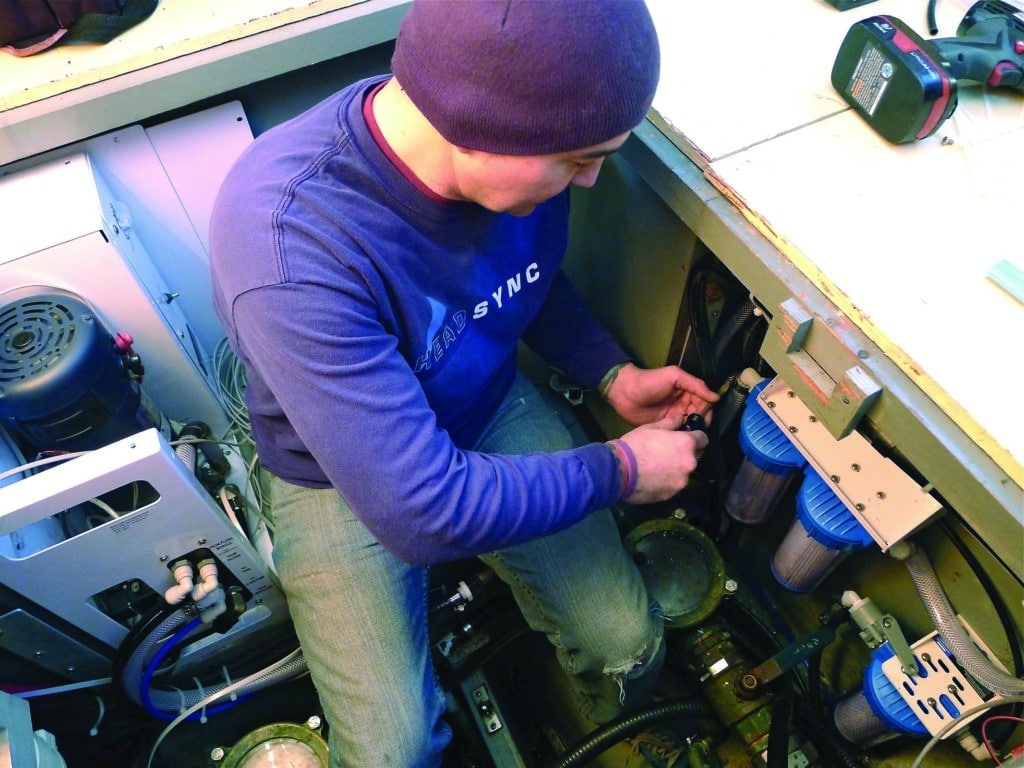
I remember, in the not too distant past, when having a watermaker aboard a cruising boat seemed to be the ultimate luxury. Plenty of sailors considered them too expensive and complicated. Fortunately times have changed. With improved technology and a range of price points on the market, now even average cruising boats of modest means carry a reverse-osmosis system. And really, is there anything that feels better after a day spent sailing and swimming than a hot shower? The freedom and security that come with full water tanks are also a nice bonus, particularly if you’re cruising in an area where fresh water is difficult to come by and pricey when you do.
Choosing a Watermaker
As with any major system, there are many factors to consider when you choose a watermaker. You’ll need to figure out your freshwater needs, the space you have available for the system and how you’re going to power it . Generally speaking, in a reverse-osmosis desalination system the raw water is run through a series of pre-filters, and then a high-pressure pump moves the water through one or more membrane housings. The wastewater, or brine, is released overboard and the product water goes into your water tanks.
Since all of the watermakers that are currently available for cruising sailboats use this process for desalination, the major differences between the systems are how you power the high-pressure pump and the user interface. Powering options include 120/220-volt AC, 12- or 24-volt DC and engine/belt driven. All have their pros and cons.
“The first question I ask a potential customer is ‘Will your boat have a ship’s generator?’” said Rich Boren of Cruise RO Water. “If they plan to have a generator, then the decision to go with a 120-volt high-output watermaker seems natural. While running the generator for battery charging and other loads two to three times per week, they can keep their water tanks full without having to make generator runs just to make water.”
A 12-volt system, such as the Spectra Catalina 300 Mk II or the Horizon Reverse Osmosis Seafari Quest, makes a lot of sense for smaller cruising boats since they don’t need a generator to run and have fairly miserly power consumption. On a breezy, sunny day, a solar panel and/or a wind generator will likely keep up with the demand. “The only difference between 12-volt DC low-output and 120-volt AC high-output watermakers is how the high-pressure pump brings seawater up to the 800 psi needed to drive fresh water through the reverse-osmosis membrane,” Boren said. “The membrane and support equipment, like pre-filtering and plumbing, are the same.”
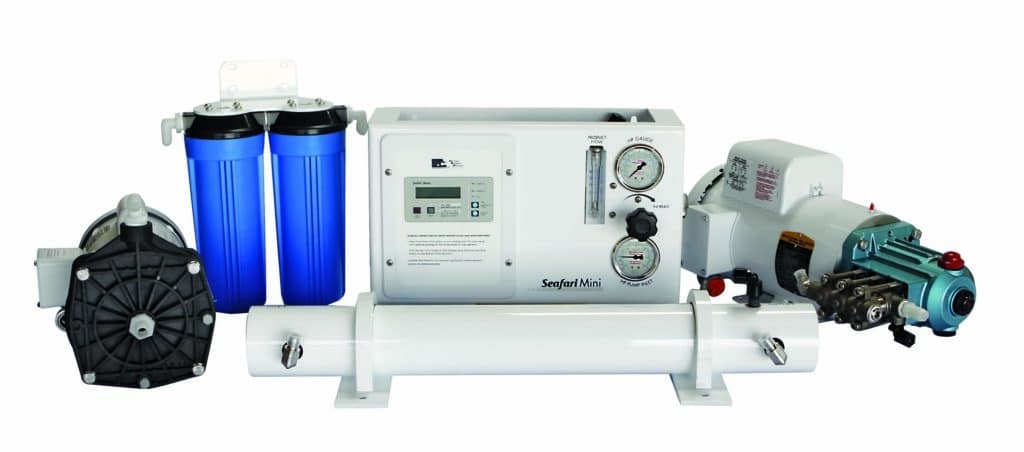
These systems typically produce anywhere from about 6 to 16 gallons per hour, and some units can do so for about a 1-amp-per-gallon power draw.
“Many smaller sailboats, under 45 feet or so, often utilize solar panels,” said Berkeley Andrews of Parker Hannifin, which produces Sea Recovery, Horizon Reverse Osmosis and Village Marine watermaker systems. “Their entire electrical backbone consists of 12-volt or 24-volt. So they must have a watermaker that can operate on low voltage. These customers have limited amp hours on their batteries, so all of their equipment must be suited to handling this.”
In choosing a watermaker, Bill Edinger, owner of Spectra Watermakers, said to be realistic about water needs. “When helping customers decide which system is right for them, first we like to determine their approximate water usage with questions like ‘How many people are aboard normally? Are you going to be living on the boat full time? Do you have a washing machine? Any children? Are you going to be cruising full time or leaving the boat for extended periods?”
A common error people make is choosing a watermaker that is too small for their needs. “The most common mistake I see cruisers making in their watermaker purchase decision is underestimating how much water it will take them to cruise comfortably,” Boren says. “I’m not talking about the minimal amount of water it takes for the crew to stay alive, because there is a big difference between staying alive and comfort. Selecting a watermaker that will only meet their minimal drinking-water needs but not keep up with the comfort needs of the crew can lead to crew tensions and feeling like camping rather than cruising.”
Remember that “watermakers are rated in gallons of production in a 24-hour period,” Edinger said. “So a 300-gallon-per-day watermaker system sounds like a lot of water. The important thing is that it produces about 12 gallons per hour. Normally a system like this will be run three to four hours per day if power is not a critical issue, in this case producing 36 to 48 gallons of water. It’s better for a system to run for a few hours every few days than an hour every day.”
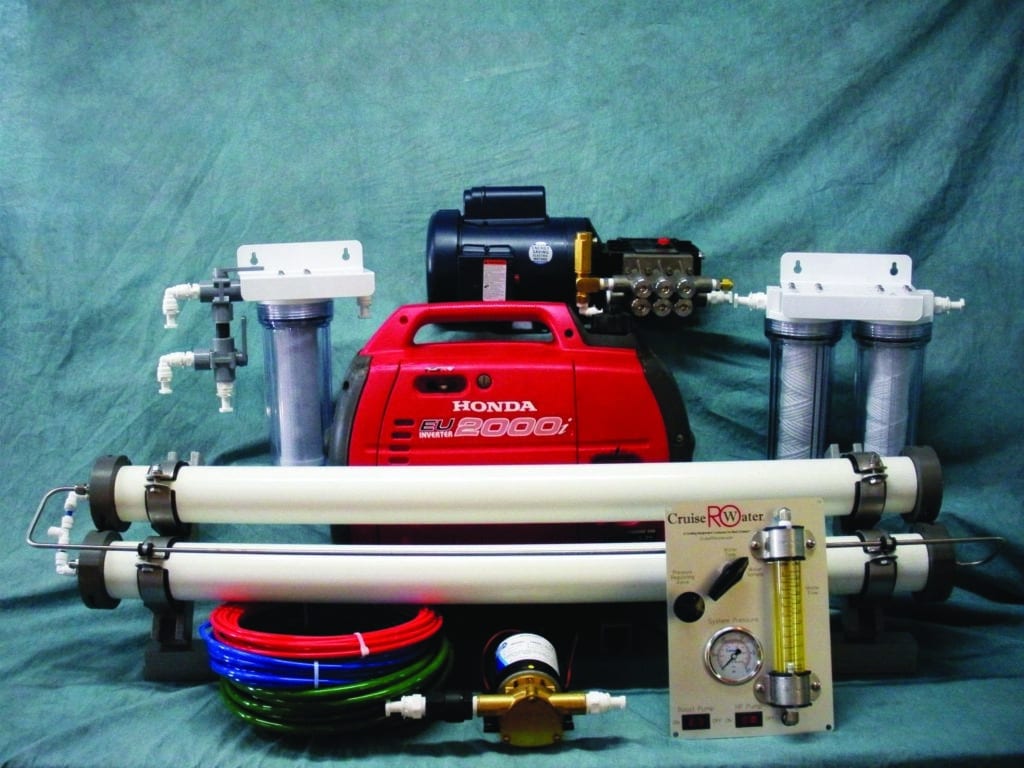
Watermakers for Small Boats
If space is at a premium, consider purchasing a modular system instead of an enclosed one. In a modular system, the components, such as the membranes and filters, can be mounted separately. Another power source for the high-pressure pump is the boat’s diesel engine. In these engine-driven setups , the pump and an additional pulley are mounted on a custom bracket next to the engine. The watermaker can then be run while motoring or using the engine to charge the batteries.
While engine-driven watermakers can produce a large amount of water, 20 or more gallons an hour on average, the downside is that the installation can be more complex than for other systems. “Unlike the 12-volt DC or 120-volt AC watermakers, where you simply bolt the high-pressure pump down and then run the wires and plumbing hoses, the hardest installation aspect of an engine-driven watermaker is finding space. Some boats simply have no room in the engine compartment to mount the 5-pound pump with a 7-inch pulley on the engine while still leaving access to other engine parts that need to remain serviceable,” Boren says.
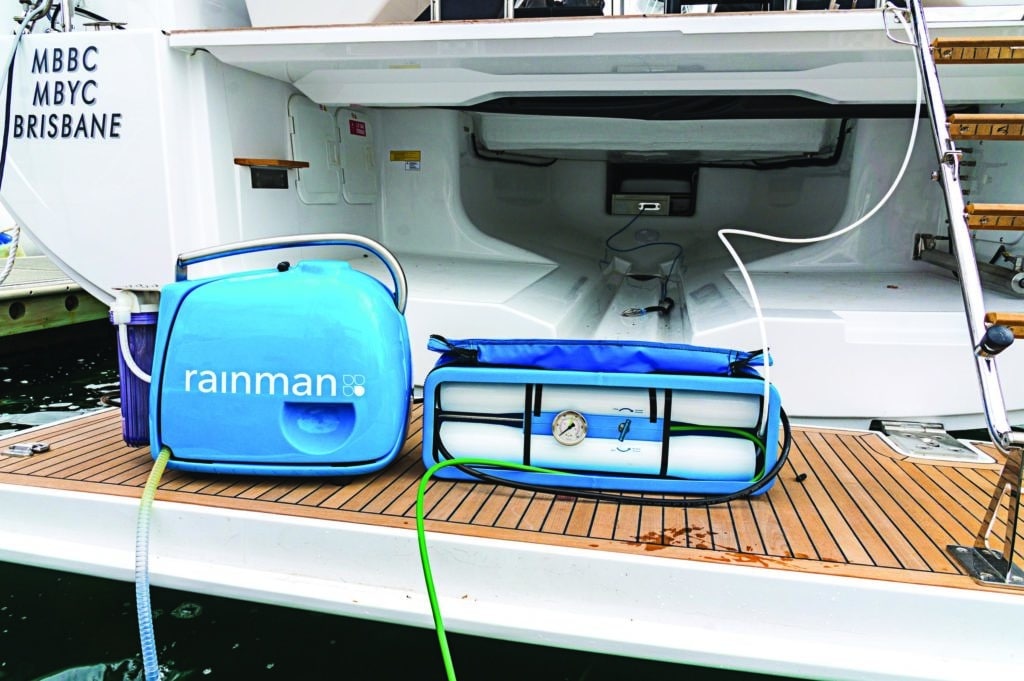
A relative newcomer to the marine market, the portable watermaker is a good solution for cruisers who want the convenience of a watermaker but don’t want to permanently install one. The Rainman is one such system that is available as a self-contained unit driven by a gasoline-powered Honda motor, or as a 115-volt AC-powered unit. “The bulk of our gasoline-powered system customers are sailing yachts between 30 and 50 feet,” said Ron Schroeder of Rainman Desalination. “Our customers seem to prefer to have a simple and somewhat manual system over one that relies on control panels, software and solenoid valves. We are also attractive to those customers who have had bad experiences with the installation process of an installed system.”
The Spectra Passport is another portable system. Edinger said it has already proved popular with offshore race crews and cruisers who need a watermaker for only a limited time.
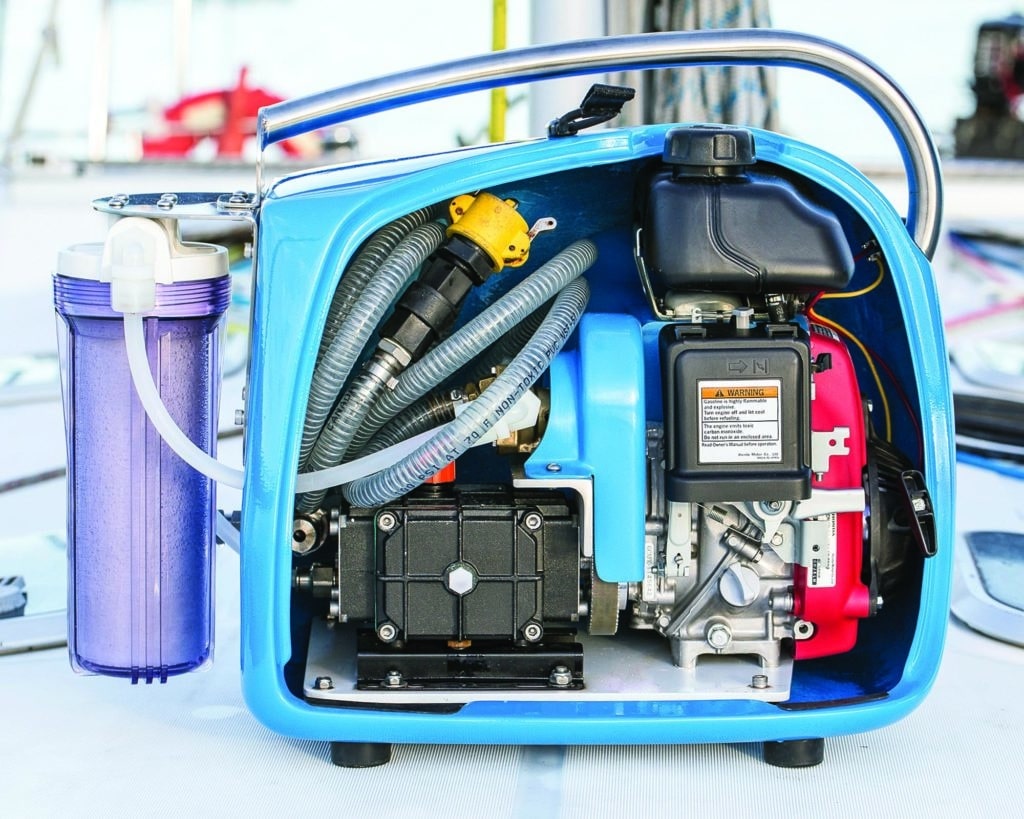
Maintenance for Watermakers
Watermakers have long had a reputation for being difficult to maintain, but the equipment has improved over the years and overall, routine maintenance isn’t more challenging than with other onboard systems. “The best rule of thumb is to operate the watermaker in water that looks good,” Andrews said. “There are a few factors in the feed-water condition that come into play. Operating a watermaker in dirty harbors will most certainly result in repeated pre-filter changes and a clogged sea strainer. If you have extra filters on board, you can get by, but it’s not recommended. The environment in the open ocean and remote anchorages is much better. Also consider how shallow the water is where you’re anchored. Sometimes there can be a lot of tidal movement, which can kick up fine particulate and sediment. This too can also contribute to more frequent filter changes and even damage other components. A nice option is an automatic freshwater flush, which will rinse the watermaker’s membrane element after use. It helps keep the membrane vessel housing free of any biological growth that could foul the membrane and reduce your ability to produce fresh water.”
Whatever system you choose, with proper use and maintenance you can expect years of service from your watermaker. And plenty of hot showers.
Jen Brett is a CW associate editor. This article first appeared in the February 2015 issue of Cruising World.
Aqua Marine: www.aquamarineinc.net
Blue Water Desalination: www.bluewaterdesalination.com
Cruise RO: www.cruiserowaterandpower.com
Dometic Marine Sea Xchange: www.dometic.com
ECHOTec: www.echotecwatermakers.com
FCI Watermakers: www.filtrationconcepts.com
Horizon Reverse Osmosis (HRO): www.hrosystems.com
Katadyn: www.katadyn.com
Rainman: www.rainmandesal.com
Sea Recovery: www.searecovery.com
Schenker Watermakers: www.schenkerwatermakers.com
SK Watermakers: www.skwatermakers.net
Spectra Watermakers: www.spectrawatermakers.com
Village Marine Tec: www.villagemarine.com
Watermakers Inc.: www.watermakers.com
- More: DIY Sailboat Projects , How To , systems
- More How To

Top Tools for Sailboat Cruising: Must-Have Gear for 2024

Made for Shade: Cockpit Cover Options

Blackwater Wisdom for Holding Tanks

5 DIY Basics For Your Diesel Engine
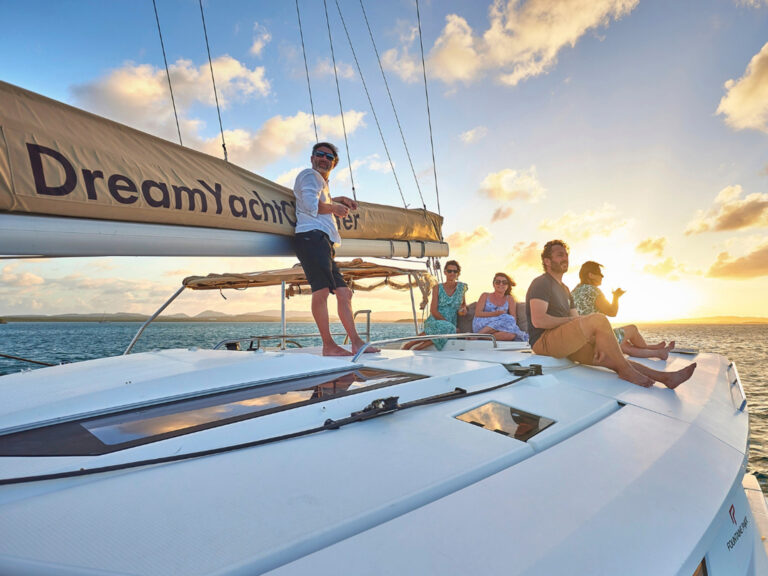
Options To Explore

For Sale: Little Harbor 63 Ketch

Cruising Tahiti: A Party in Paradise
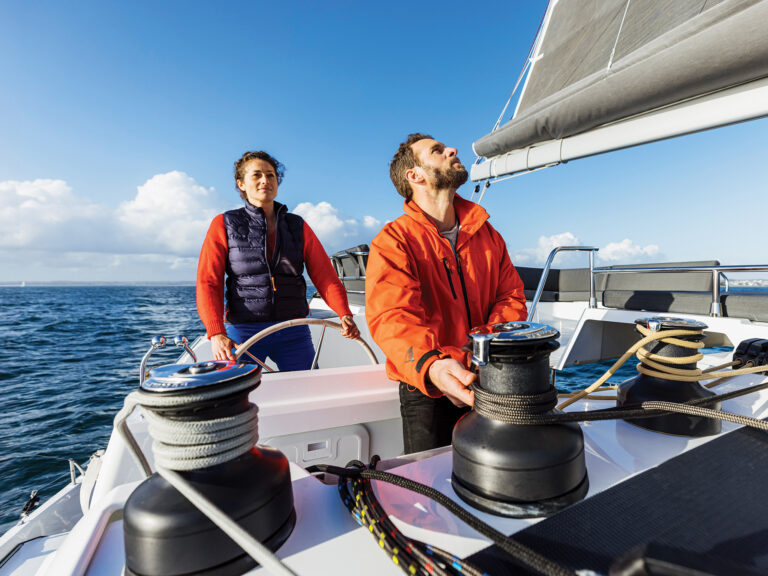
Sailboat Review: Fountaine Pajot Aura 51
- Digital Edition
- Customer Service
- Privacy Policy
- Terms of Use
- Email Newsletters
- Cruising World
- Sailing World
- Salt Water Sportsman
- Sport Fishing
- Wakeboarding
3 Best Watermakers for Sailboats (Reviews & Buying Guide)
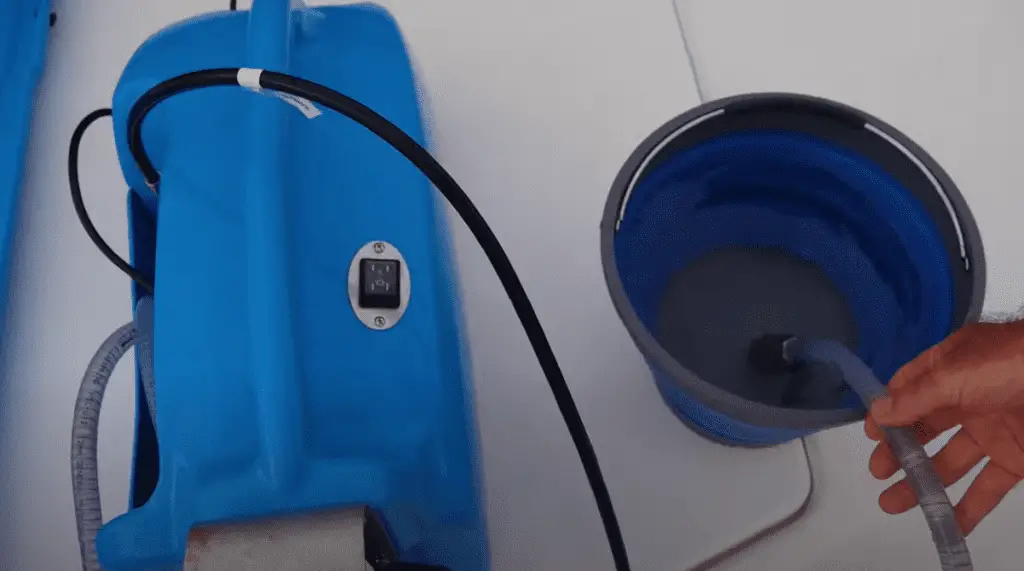
With a boat surrounded by water, there’s surely no such thing as dehydration out on the sea. Right? Well, not exactly. There’s way too much salt in seawater, and your kidneys would have to work overtime to filter it out. And to do that, they would need more water, which explains why copious amounts of seawater is toxic to humans.
So before you take a sip of that salty brine, why not pass it through a watermaker? The best watermakers for sailboats can take seawater and turn it into potable drinking water, giving you an infinite water supply to keep you hydrated and healthy on extended excursions.
What is a Watermaker?
Otherwise called a ‘desalinator’, a watermaker takes salty seawater and passes it through a process called reverse osmosis. This happens by pushing the water through a semi permeable membrane that allows the water molecules to pass through, but restricts salt, bacteria, and other organic material.
The clean, drinkable water is then passed into a water tank where you can then collect water for use. The remaining brine that was left during filtration is then tossed overboard and discarded. What’s nice is that these machines don’t use any chemicals, so there’s no risk of water contamination or pollution.
Some machines also use a pre or post treatment of the water using things like filters, sand, activated carbon, remineralization, or microfiltration to guarantee safe drinking water.
The Benefits of Watermakers

Modern-day technology has made it possible for manufacturers to develop more compact, efficient watermakers than ever before. This has also significantly driven down prices, making them far more accessible to sailors of all backgrounds.
Today, watermakers are recognized as a sailboat essential, especially for people who frequent the waves for long periods of time. Some of the benefits of these machines include:
Efficient Speed and Fuel Consumption
Yes, you read that right. Consider this - just 1 gallon of water weighs 8.3 pounds. If you’ve got 10 gallons on board, that’s equivalent to 83 pounds. A hundred gallons, and you’ve got an extra 830 pounds on board.
Watermakers allow boat owners to shave down their total weight. This lets you sail more efficiently, allowing faster speeds and lower fuel consumption which is important when you’re planning to sail long distances .
More Floor Area
Without a watermaker, you’d have to find room on board for the several tens or hundreds of gallons you need to bring with you. That also entails finding a place on your boat to store these water vats, which would obviously require significant room.
The watermakers of today are compact and lightweight. They can be either modular or self-contained, giving you different options to match your boat’s floor plan and use as little space as possible.
Safe Sailing
To ensure safe sailing, some studies have found that dehydration might actually be the reason for poor sailing performance. With dehydrated captains feeling lightheaded, achy, tired, and confused, it becomes increasingly likely to run into an accident that could endanger the lives of the people on board.
A watermaker guarantees that there will be fresh potable water at the ready any time you might need it. This doesn’t only curb the chances of dehydration, but also provides a solution for a variety of health conditions including diarrhea and various types of infections.
Extended Sailing Duration
You’ll only be able to sail for as long as your supplies on-board last. As your drinking water runs low, you’ll find yourself having to find the nearest dock to replenish supplies every so often. That’s if there are docks and shores you can access throughout your route. But what if there aren’t any?
Having the necessary equipment on board to extend your supply also means that you won’t have to rely on on-shore facilities to see you through your trip. This gives you more independence and flexibility as well as reducing the need to calculate complicated logistics.
Easier Boat Maintenance
Whether you’re underway or parked at the dock, your watermaker can help streamline boat maintenance by bringing freshwater straight to your vessel. With no need to collect buckets of water to lug back on board for a washdown, you can cut back the time and effort it usually takes to keep your boat clean.
Lots of boat owners even use their watermaker to give their boats a quick clean while they’re out at sea. This helps get rid of accumulated filth and dirt, reducing the need for a tedious deep clean once you get back to the dock.
The 3 Best Watermakers for Sailboats
Back in the day, watermakers were a luxury for the rich and the capable. But today, they’re incredibly affordable and easily accessible. Needless to say, manufacturers have also taken liberties with designing their own machines.
For you, that means an endless list of watermaker bets that could easily screw up your choice. So to help narrow down your options and lead you to the right one, here are our top 3 vetted picks:
1. Katadyn Power Survivor 40E Watermaker Desalinator

Small yet powerful, the Katadyn Power Survivor 40E is a reliable workhorse designed for boats with a small crew population of 2 to 3. This modular unit provides 1.5 gallons of water per hour, and draws only 4 amps from a 12-volt system, making it one of the most energy efficient desalinators out there.
This ‘Energy Recovery’ system works to desalinate seawater at just a fraction of the energy used by other watermakers in the same segment. Thus the device gets its name: Power Survivor.
Silent and lightweight, the machine lets you separate its primary system components so you can install the device seamlessly even in tight or awkward, irregular spaces. Most of its parts also come with a 3-year warranty, giving you that extra peace of mind versus damages and malfunctions.
2. AMPAC USA SeaPro Saltwater Desalination RO Watermaker

Able to produce 100 gallons per day, this watermaker was designed for use on small power boats or sailboats. Its super quiet automatic operation features intuitive controls that let you start and stop the desalination process with the push of a button.
Equipped with a noise pulsation dampener, the sounds produced during operation are negligible at best. This lets you run the machine in the evening to store up clean water for the next day without having to disturb your crew’s peace and quiet.
For boats with limited space, the SeaPro comes in a modular design that’s perfect for tight floor areas. It also comes in a partially mounted compact frame option that lets you fit the desalinator in place with little time and effort.
3. Rainman 12 Volt DC Watermaker
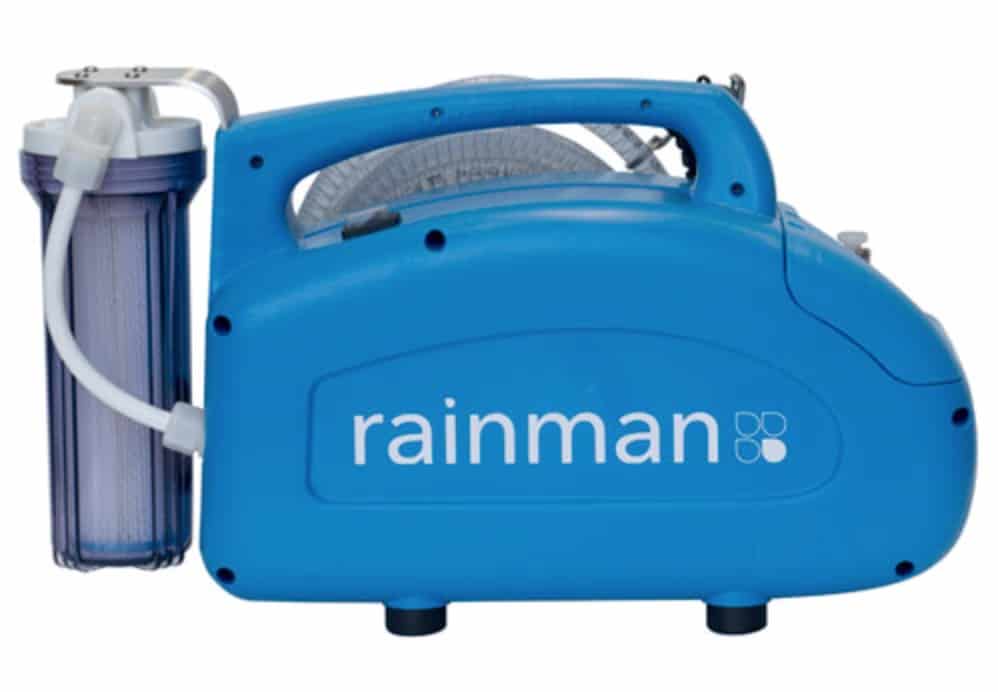
According to Rainman, their 12 Volt DC Watermaker consumes the least energy, able to filter 9 gallons of water per hour. The design touts a two-part system -- one pressure supply unit and another reverse osmosis unit. The former lifts the seawater from the source, while the other performs the desalination process.
What’s unique about Rainman’s watermaker is that the design gives you the option to install the unit directly to your boat, or to keep it handy as a portable watermaker system. This offers immense flexibility, allowing you to set up or take down your system as your situation calls for.
Aside from all of that, the Rainman Desalinator also features a streamlined control panel that makes everything easy to understand and operate at a glance. It also comes equipped with its own LED salinity sensor that tells you when water is good enough to store in your tank.
Choosing the Right Desalinator Watermaker
Not quite sure which one is right for you? Here are a few factors worth taking into consideration when buying a watermaker.
Size and Installation
There are two major options: modular and self-contained. The modular system lets you take the unit apart to install each part at a different part of your boat. This one’s ideal for boats with limited space. The self-contained system has the entire unit built together, which means it has to be installed as one piece.
Gallons Per Hour
How big is your crew? More people means you might need a watermaker with a higher GPH. Smaller machines capable of 1.5 to 2 GPH might be good for crews of 2-3 persons. But larger boats may need several hundreds of GPH to meet all of the crew’s needs.
* See: What size Yacht will Require a Crew?
Non-Proprietary Parts
You’re going to make part replacements one way or another. See to it that you’re buying a machine that uses non-proprietary parts so you can purchase the necessary replacements anywhere online.
Warranty and Services
In case anything happens to your watermaker, who will be there to help you fix it? Check the warranty coverage and see how long the manufacturer is willing to cover it for damages and malfunction. It’s also important to make sure there’s a nearby service center to cater to your needs in case of damage.
Water You Waiting For?
The best watermakers for sailboats offer to give you a virtually endless supply of clean drinking water when you need it. But there are a ton of choices on the market, so it pays to know what you’re getting before you shell out that cash. Consider our bets for the best desalinators for your sailboat, and keep your crew happy, healthy, and hydrated all along the way.
Related Posts
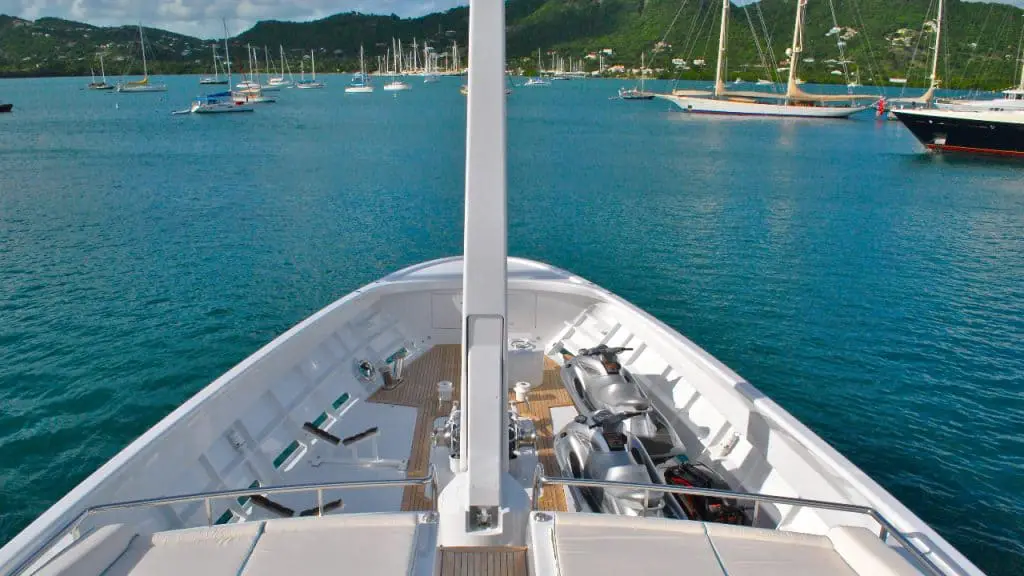
When Does a Boat Become a Yacht or Superyacht? (Sizes)

Fishing From a Yacht: Secrets of Sailboat Fishing
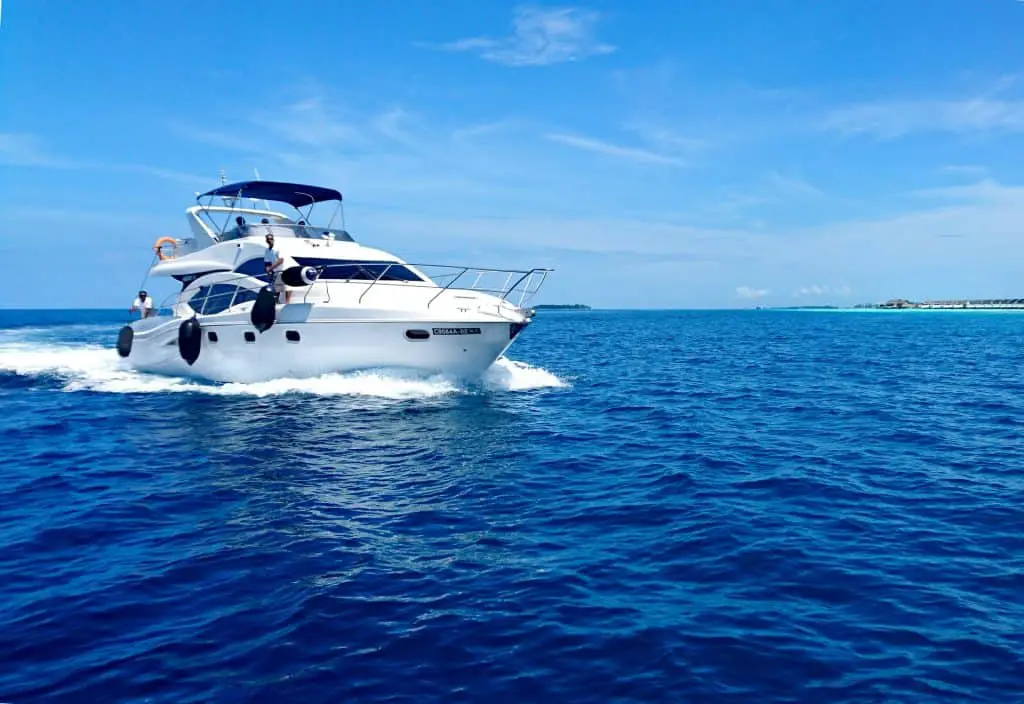
Can I Pilot My Own Yacht? Qualifications & Licenses
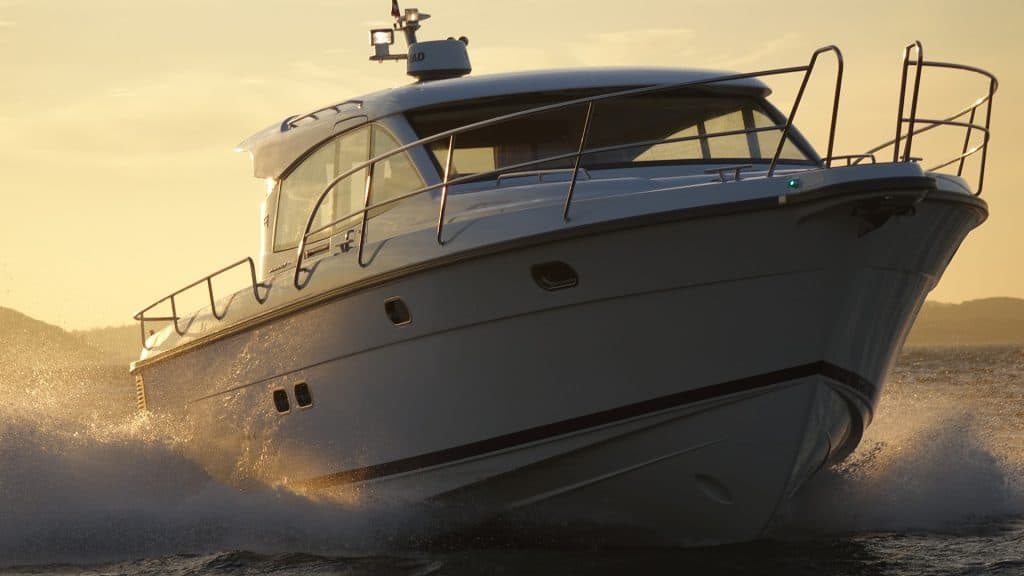
How Long Can a Yacht Stay at Sea? All You Need to Know
Yachting Monthly
- Digital edition

Everything you need to know about watermakers
- February 24, 2023
An onboard watermaker will free you from ever worrying again about where your next freshwater stop will be. Andy Pag looks at the latest models available for your yacht

The feeling of autonomy that a watermaker gives a yacht is unique. It transforms that weekend-only cruiser into a go-anywhere, life-on-the-hook, adventure craft, breaking the tether to marinas.
Filling your water tanks at the fuel jetty will always be a cheaper alternative to the eye-watering cost of buying and installing a watermaker, but there will be times when your plans are limited by having no access to a tap or if the only source available doesn’t look particularly appetising. And in the event of a burst pipe or accidentally draining your tank mid-passage, it means you’ll be able to keep sailing at the flick of a switch, rather than having to reroute to refill.
Watermaker desalination process
Watermakers – technically known as desalination units – use a process called reverse osmosis (RO) to make drinking water. By forcing salty water at a high pressure against one side of an RO membrane, fresh water will slowly seep through, leaving the salt and bacteria behind. The output is notably devoid of minerals, but the taste can be a little strange at first. Think of the membrane as a filter so fine that even bacteria and salt molecules can’t get through it.
But as well as the pressure, a membrane also needs to have the water flowing over it to flush away all the stuff that didn’t pass through as it would otherwise block the membrane’s pores. In this way it’s different to a filter because a membrane has a salty inlet, a freshwater output, and a saltier discharge outlet.

Much of the cooking done onboard needs fresh water. Photo: Tor Johnson
High pressure pumps
Creating high-pressure water, which is also flowing at speed, takes a lot of energy, and there are two methods watermakers use to achieve this. One is simple: a high-pressure pump. This can draw a lot of current but it creates the speed of flow needed, and the forceful pressure too. The saltwater is directed to the membranes and the pressure is created by closing down a tap, called a needle valve, at the discharge to build up pressure on the membrane while still allowing water to flow out through the needle valve at the required speed.
High-pressure pump watermakers are fast, but they aren’t the most energy- efficient way of creating clean water. They are usually tuned to produce 60 litres per hour or more but can draw upwards of 500W and while there are 12V versions, they typically use mains voltage pumps and are better suited to being run from a generator than a battery bank.
They’re designed to fill your tanks quickly so you don’t have to run the generator for long. Mechanically, they’re simple, and apart from the high-pressure pump there are no moving parts to go wrong.

A watermaker and its many parts.
Energy recovery
The alternative method is a Clark pump watermaker, also known as an energy recovery device (ERD). This uses a fast-running but much lower-pressure pump which needs less power. To obtain the high pressure required, the pressure in the discharge water is harnessed by a couple of reciprocating pistons and used to boost the inlet pressure. It takes a few minutes to build up pressure and during that time the output is slow and not very clean.
Watermaker running costs
An ERD unit will typically produce 20-60 litres per hour. The lower demand on the pump means it can be reasonably powered by 12V with as little as 9A, and can produce a litre of water with just 4-5Wh of energy. High-pressure units need between two and three times that energy per litre. If you run your boat from solar panels or don’t have a generator, this is the type of watermaker to go for.

Devoid of minerals, the taste can be a little strange at first
In fact, your boat’s power source is the first thing to look at when considering which type of watermaker to get. But it’s also worth remembering that the extra complexity of ERD units make them expensive to buy and more prone to breakdowns.
When choosing an ERD watermaker it’s therefore really important to consider the availability and costs of spare parts because sooner or later they will need servicing.
Most manufacturers have a dealer network that can provide advice, but don’t count on them stocking parts or offering servicing. These machines are notoriously fiddly to repair, and one dealer told me discreetly it’s not financially viable for him to offer a repair service as the time it takes can spiral into hours. That leaves you with the option to send the machine back to the manufacturer at great expense, or do it yourself.
Article continues below…
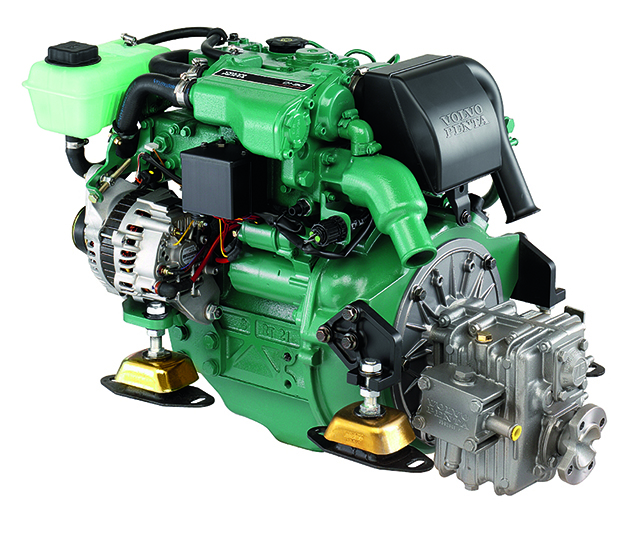
How it works: The diesel engine: The 4-stroke cycle
Understanding how your diesel engine works is key to knowing how to look after it, and fix it when it…

How it works: Looking after fuel: diesel, hoses and filters
Looking after fuel is essential for keeping your engine running smoothly. Callum Smedley shares his top tips
After-sales service
Spectra has one of the best reputations for after-sales service. In most places you’re more likely to find Spectra and Schenker dealers, but that doesn’t guarantee they’ll have parts in stock, and all manufacturers will ship parts to you. Spectra also offers rebuild kits which come with step-by-step instructions and special tools to get to those hard-to-reach O-rings. They feel like a lot of money for a bag of O-rings, but are a cheaper option than sending the unit back to the factory.
If you’re buying new, a warranty is highly valuable but once it runs out you’ll find out how pricey the parts really are. Some manufacturers give longer warranties if a certified technician installs the system.
Most ERD units are made out of engineering plastics such as Delrin which can split around fittings if over-tightened or if warm water is used during cleaning.
One leading UK dealer who sells all brands told me that since Spectra changed the type of plastic used a few years ago he’s had no returns, unlike rival brands. Spectra were tight-lipped on the material they use when Yachting Monthly asked them for details.

An average-sized watermaker will easily squeeze into the space under a bunk
Watermaker instillation tips
A bad installation can render a good machine useless, so there are a few key points to know. Use dedicated through-hulls for the saltwater intake and brine discharge. Make sure the intake is low enough that it won’t be exposed when heeling or in big waves to prevent air bubbles entering the system. Don’t install the intake where there will be turbulent flow, behind the keel, for example, or near the props and rudders. The discharge should be above the waterline.
To give the pump the best chance of producing the pressure needed, install it as low as possible in the boat. Follow the manufacturer’s recommendations on hose diameters and avoid long hose runs and tight turns that restrict flow.
Finally, use correctly sized wiring as the 12V pumps will underperform if there are voltage losses in the wiring.
Monitoring quality
A Total Dissolved Solids (TDS) meter measuring impurities in the output water coupled to a diverter valve can automatically protect the purity of your tank. Anything under 500ppm is fine to drink but a well-installed system should deliver 200-300ppm.
You can buy inline TDS meters, or stick meters that you dunk into a sample cup to monitor it manually. You’ll see it slipping over time if there’s a problem developing with the pump or membrane.

It’s important to flush or ‘pickle’ your watermaker if you decide to not use it for any period of time
Membrane care
The membranes will produce more output and cleaner output in warmer and less salty seas. For the best lifespan, use them every few days. Drying them out, or running chlorinated water through them will do irreparable damage.
According to Dupont, which makes the widely used Filmtec membranes, they should not be left unused for more than 24 hours, but in practice they can be left for around five days before organic growth risks building up on the membrane, which blocks it and reduces performance. This can sometimes be remedied with an alkaline flush if caught early.
The other thing that can block them is carbonate deposits. In this case, an acid flush will restore some of the membrane’s performance.
If idle for a few days, it’s worth flushing the membrane with fresh water. Some manufacturers recommend doing this after every use, but that’s to protect other components in their systems.
If the machine is going to go unused during the off-season, the membrane can be pickled in propylene glycol. Most manufacturers offer branded pickling solutions and restorative solutions which conform to their warranty and don’t react with other materials in the system.
Avoid using the watermaker in anchorages where other boats aren’t using holding tanks. Although the membrane will sift out e.coli, the pre-filters will become a nasty Petri dish of bacteria.

Pickling tablets will be less aggressive on internal metal components
Don’t leave me this way
Different manufacturers have different recommendations, but, as a general guide, here’s what to do if leaving your watermaker unused for any period of time.
1-5 days: In practice, leaving the membrane sitting in saltwater won’t do too much harm, even though the membrane manufacturer warns against more than 24 hours. Check your watermaker manufacturer’s recommendation though. For instance, Spectras suffer from dramatic internal electrolysis if left soaking in sea water.
1-2 weeks: Definitely flush it through with fresh unchlorinated water. Use a carbon filter to remove chlorine if you are flushing with tap water.
More than a month: Pickle it.
They used to recommend using acid (hence the term pickling) but now manufacturers recommend propylene glycol, which is less aggressive on O-rings and other metal components. Buying the branded solution for your machine will give you peace of mind.
If your boat lives in relatively clean water, think about setting a timer so the machine runs automatically every few days for 10-15 minutes. That’s long enough to flush the membrane and prevent organic build-up.
Enjoyed reading this?
A subscription to Yachting Monthly magazine costs around 40% less than the cover price .
Print and digital editions are available through Magazines Direct – where you can also find the latest deals .
YM is packed with information to help you get the most from your time on the water.
- Take your seamanship to the next level with tips, advice and skills from our experts
- Impartial in-depth reviews of the latest yachts and equipment
- Cruising guides to help you reach those dream destinations
Follow us on Facebook , Twitter and Instagram.

Home » Blog » Gear » Watermakers: a guide to marine desalinators and making water on a boat
Watermakers: a guide to marine desalinators and making water on a boat
By Author Fiona McGlynn
Posted on Last updated: March 23, 2022
There’s something magical about a watermaker—at least that’s how I felt after we installed one on our boat. That may sound overblown, but think about it: watermakers transform salt water into fresh water, providing a near-endless supply of potable water for drinking, bathing, and cleaning! THAT my friends is an amazing piece of technology!
(If you don’t share my enthusiasm, try going without a shower for a few days and you’ll begin to see my point).
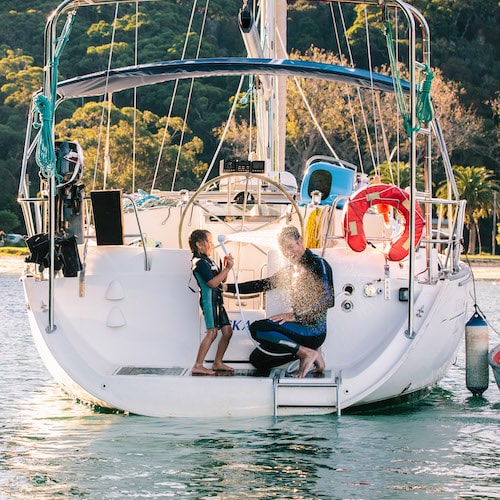
Having experienced living on a boat and cruising, both with and without a marine desalinator, I can attest that it’s a game-changing piece of gear. However, you definitely don’t need one to go cruising. There are plenty of low-tech ways to collect and make water on a boat.
Marine desalinators do offer some major benefits: there’s more water for showers, it’s easier to travel farther afield, you can spend more time in a remote location. However, these benefits have to be weighed against the drawbacks: namely a hefty price tag and ongoing maintenance.
Deciding whether a watermaker is right for you will come down to the type of cruising you’re doing, how much water you need, and your budget. Read on to learn about the pros and cons, costs, and key features of marine watermakers.
How does a watermaker work?
A watermaker on a yacht converts seawater into fresh water through a process known as reverse osmosis (RO). A high-pressure pump pushes seawater through a semi-permeable membrane that filters out salt, organics, and bacteria. The fresh water is pumped into your water tanks while the remaining brine bi-product is discharged over the side of the boat, back into the ocean.
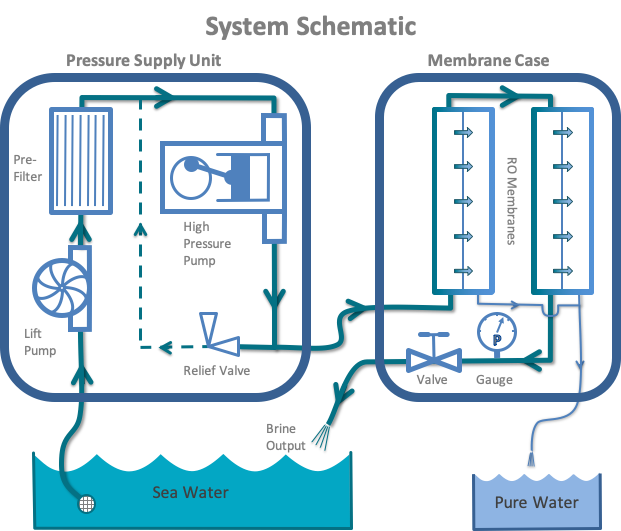
Marine watermakers: the benefits and drawbacks
Less water rationing.
When we started our 13,000 mile trip across the Pacific, we didn’t have a watermaker. We were on a tight budget and decided to prioritize other pieces of equipment like a life raft and wind vane.
As a result, we became experts in conserving water on a boat . We would carefully ration out water for washing dishes, taking showers, and even brushing our teeth!
After getting a watermaker we became far less meiserly because we knew we could always make more water if we needed to. It was a relief to not be constantly thinking about how much water we were using over the course of a day.
That being said, we couldn’t relax completely. We had to keep our tanks topped up, so as not to run the pump dry. We also always carried potable water in reserve, in case our watermaker broke in the middle of a long passage.
More luxuries
Can’t live without a proper shower? A boat water maker can make water-intensive luxuries like freshwater deck washdown, freshwater flushing heads, laundry, daily showers, and even baths, a possibility.
As great as this sounds in theory, we were surprised to find that we didn’t indulge in more showers after we got the watermaker.
We continued to use a hand pump pesticide sprayer to shower on deck despite having a watermaker and shower below. While some of this came down to habit, we also disliked running our engine (and consuming diesel) just to run the watermaker.
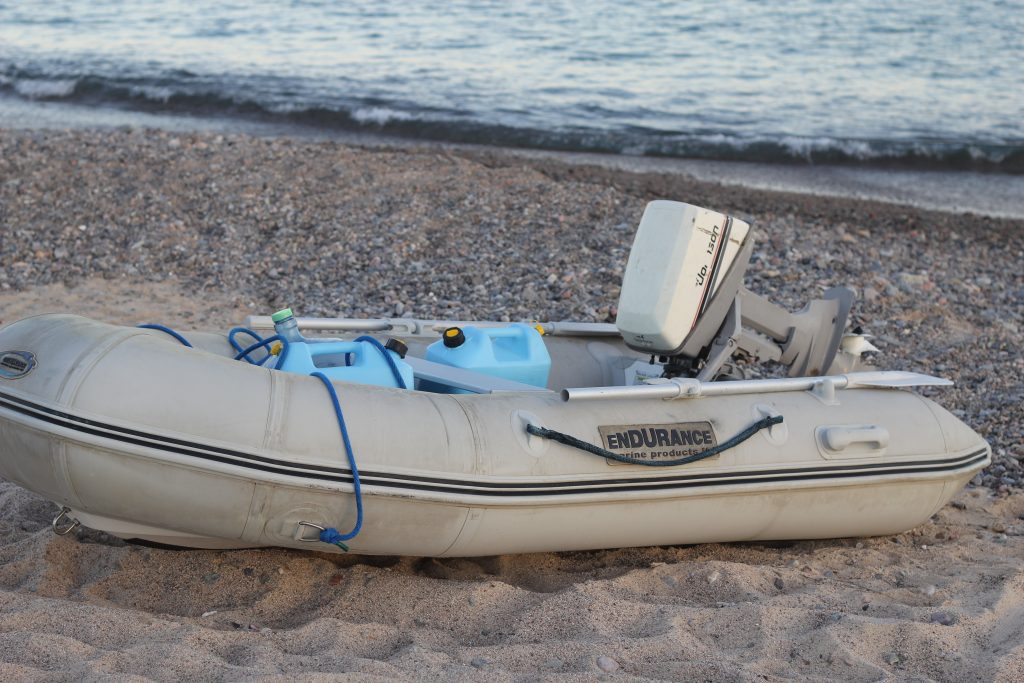
No hauling water
For us, this was by far the greatest benefit of having a watermaker!
While cruising in the US and Canada, we could refill our water tanks at a dock or marina. This was a minor hassle because it involved pulling up the anchor and docking the boat.
In Mexico, it was more challenging to get water. We would fill 5-gallon jugs at the local water purification plant in town and wheel them back to our boat on a collapsible dolly.
It often took a couple of trips with the dolly and dinghy to fill our water tanks. Oh, and we broke our dolly, twice!
We realized that if we wanted to spend more time exploring, and less time hauling water, we would have to invest in a watermaker. When we reached La Paz, Mexico we bought a refurbished watermaker, and we were so glad we did!
Our sailboat water maker gave us the gift of time, especially in places like Mexico and the South Pacific, where there were limited opportunities to fill water tanks up at the docks. It also saved us paying docking and water fees.
We estimate that our boat water maker saved us anywhere from four to six hours every week, time that we could spend exploring the wonderful places we were visiting.
A clean, safe water source
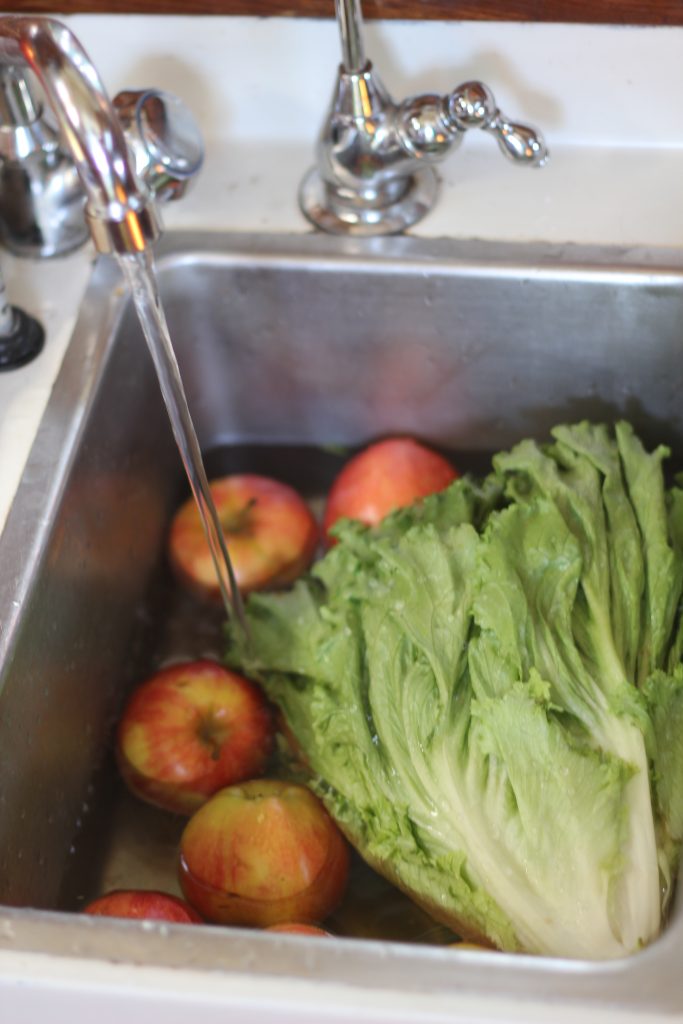
In places where the drinking water may be suspect, a boat water maker can be a reliable source of safe drinking water (assuming it’s in good working condition!).
More time in remote locations
A watermaker is a great tool if you’re drawn to remote locations where you might be the only boat in the anchorage.
It wasn’t until we reached Los Frailes, a secluded village on the Baja, that we really began to think about buying a watermaker.
There we were in an idyllic anchorage, surrounded by spectacular hiking and fishing. There was only one problem—every two days we had to walk 10 miles into town with our water jugs and hope that some kind samaritan would give us a lift back to our boat.
Before having a watermaker, we’d often leave a place we loved just because we needed to fill up our tanks. With a watermaker, we were more self-sufficient and could stay an extra few days, or as long as we wanted!
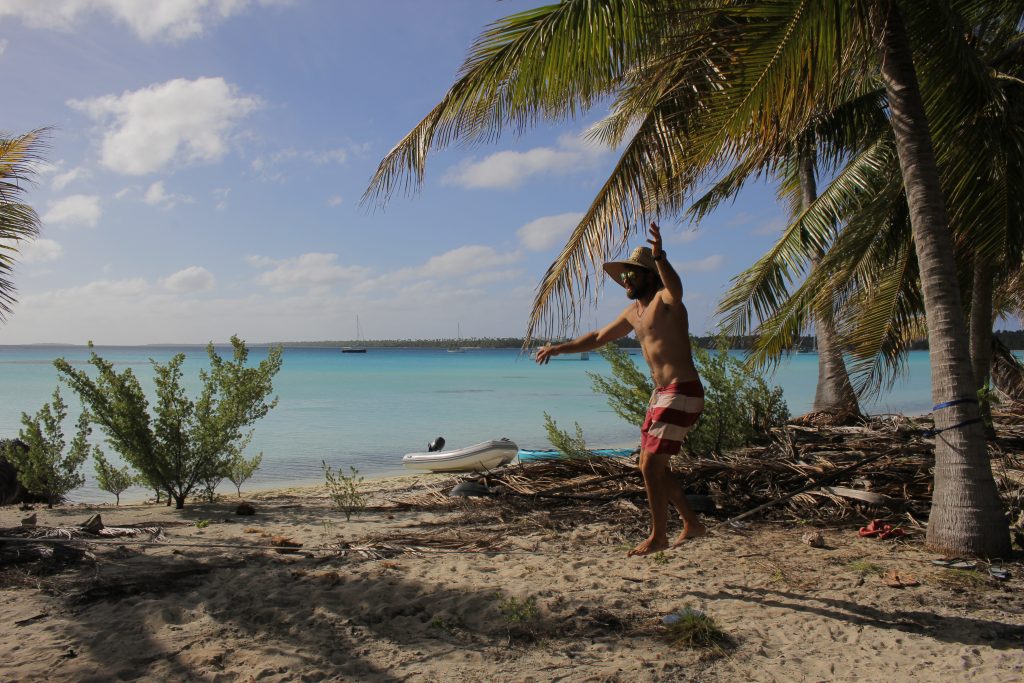
The number one drawback is the cost. We were able to find a refurbished water desalinator for $3,000, which was a great deal but also a considerable slice out of our cruising kitty.
How much does a watermaker cost?
Powered desalination systems for your average recreational cruising boat range from around 3,500 USD to 11,000 USD, with the more expensive options offering higher production (gallons of fresh water per hour).
Ongoing maintenance
Watermakers are yet another piece of boat equipment that needs to be maintained.
The majority of watermaker problems are caused by not using it enough or not using it properly.
If a watermaker is not used for a few weeks, the planktonic organisms in the seawater will die, rot, and clog the membrane and filters. This can eventually damage the reverse osmosis membrane in the watermaker.
For this reason, boat water makers should be used frequently and regularly flushed with fresh water.
Watermaker flushing
Check your manufacturer’s instructions on how to flush.
Rainman recommends flushing the seawater out of the system with fresh water if you are not using the system for more than a day or two. After another week, you need to freshwater flush the system again or pickle it for long-term storage.
Of course, it’s easy to forget, so we made it a rule to freshwater flush our watermaker after every use.
This is one good reason to choose a watermaker with an output that will meet your water consumption needs but not exceed them. If you’re using it every second day, you won’t have to try and remember whether you’ve flushed it or not.
Flushing a watermaker is relatively simple but it does involve a bit of work. We used a system with buckets of fresh water to flush our system and it generally took about 5 minutes.
You can also buy systems that automatically flush your watermaker at pre-determined times—even when you’re away from the boat (more on autoflush systems below).
Whatever you do, don’t use chlorinated water to flush as it will destroy reverse osmosis membranes. It’s possible to buy a carbon filter to remove chlorine from water sources at the dock.
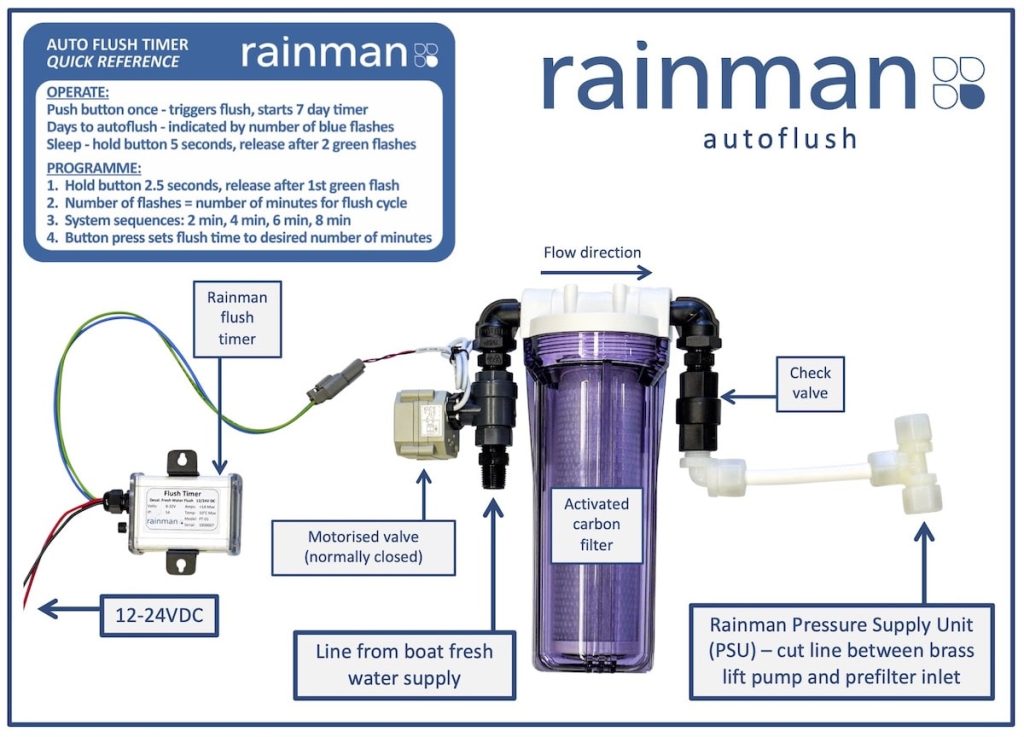
Pickling a watermaker
If you don’t plan on using your watermaker for a while it needs to be “pickled” with a special biocide to prevent growth and buildup which could render your reverse osmosis membrane totally useless.
A watermaker should also be pickled every so often to chemically cleanse the membrane.
In addition to flushing and pickling, you will also need to clean out and replace the raw water pre-filters.
Operating costs
When properly cared for, a membrane should last five to ten years. If you don’t properly flush or pickle your watermaker, it can be a lot sooner and membranes aren’t cheap, generally costing in the range of 200-700 USD.
You’ll also need to purchase pre-filters and pickling solution, which are generally quite affordable. It’s also a good idea to carry spare parts
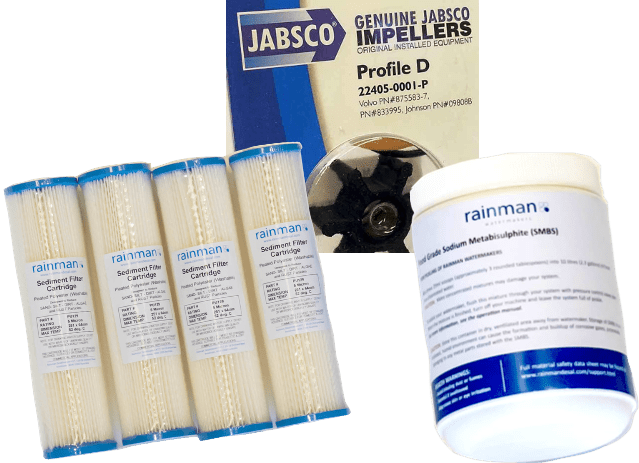
Power consumption
Watermakers can be real power hogs. When Practical Sailor tested a dozen DC watermakers they found they could draw anywhere from 12 to 48 watts per gallon, a huge range in efficiency!
According to Practical Sailor, “for maximum efficiency none of the systems drawing 15 amps or more should be operated without running the engine at the same time.”
We had to run our engine for hours to fill our tanks, which was annoying (and loud) when we were hanging out at anchor and also used up another finite resource—diesel fuel.
In our view, this was the single largest drawback to having a watermaker aboard.
Keep in mind that your power supply will determine what type of watermaker you buy. You may need to upgrade your electrical panels, get a generator or high-powered alternator, add solar panels, or increase battery capacity to supply the demand.
You can’t make water everywhere
While watermakers offer great flexibility and freedom, you can’t just make water in any old spot. If you make water in a polluted marina or anchorage, you’ll risk clogging up your filter. Most cruisers will head out to open water to ensure the saltwater they’re using is as clean as possible.
Key features to look for
Powered or handpump, handpump watermakers.
Handpump watermakers tend to be small and portable, the perfect thing to keep in your ditch bag in the event of an emergency. They’re less expensive than powered watermakers and produce far less water, usually around one gallon per hour.
Though I do know cruisers who have used a handpump watermaker for everyday use, they typically tend to be kept aboard for survival situations.
Powered watermakers
Powered watermakers run off your electrical supply or engine and can produce tens of gallons of water per hour. They tend to be a lot more expensive, but they’re productive enough to replenish your tanks.
Electric or engine drive
Powered watermakers can be electrically driven, by AC or DC, or run off the boat engine.
AC watermakers
AC models can produce in the range of 20-60 gph and are ideal for cruisers with an AC generator or alternator on board. They can also be used on boats with ample solar or wind sources and an inverter.
DC watermakers
DC watermaker systems typically produce in the range of 10-30 gph and are ideal for boats with solar power or 12V battery power.
Engine-driven watermakers
On an engine-driven watermaker, the high-pressure pump is belt-driven. These can produce a considerable amount of water, even on small engines. For instance, engine-driven units produce between 20-60gph, twice what a DC unit can produce.
Energy recovery watermaker
DC watermakers have become more efficient in recent years thanks to energy recovery systems (ERS). When the water leaves the watermaker it is still under pressure. ERS uses a set of valves to make use of this excess pressure to help drive the pump, which can reduce energy consumption by as much as 80 percent.
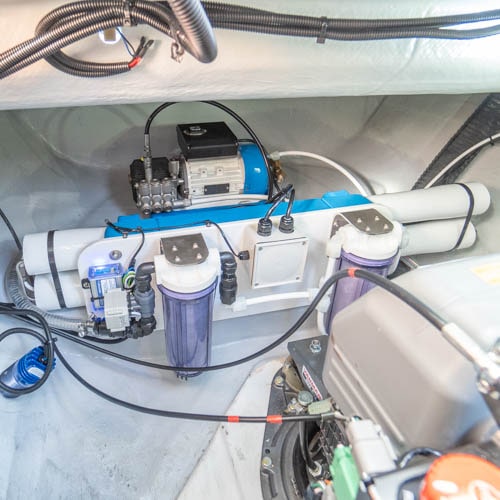
Modular, self-contained, and portable watermakers
Watermakers can be bought as modular, self-contained, and portable units. Choosing the right one may depend on your boat size and layout and whether you’re comfortable installing the watermaker yourself.
Modular units
Modular units come as several separate components that you can mount and connect yourself. This obviously offers a lot more flexibility and is particularly useful on smaller vessels where you may not have a lot of space. The downside is that these systems will take longer to install.
Self-contained units
Self-contained units arrive pre-assembled. While easier to install, they’re often bulkier and best suited to a bigger cruising sailboat with a large engine room.
Portable watermakers
Portable watermaker systems, like the Rainman watermakers, are entirely self-contained. Their compact design makes them easy to move and stow and you can completely avoid a permanent installation.
Simply put the intake and brine discharge hoses overboard, the freshwater hose in your water tank and you’ll be making water in no time.
If you race, have multiple boats, or plan on selling your boat, a portable watermaker is a great option because it can be easily moved from boat to boat.
If we were to buy another watermaker, we would probably opt for a portable one.
Automatic flushing systems
Automatic flushing systems use your boat’s freshwater supply to flush the watermaker for several minutes every few days. These systems require additional components (e.g., a timer, carbon filters, and a motorized valve) and installation but they take a lot of the maintenance out of having a watermaker onboard.
Automatic Pressure Regulation and adjustable pump speed
Your watermaker’s efficiency will be affected by the temperature and salinity of the water you’re cruising in. Cold and highly saline waters (e.g., in the high latitudes) will be more work for your watermaker, so it will take longer to purify.
Some units feature Automatic Pressure Regulation (APR) and adjustable pump speed which can help compensate for fluctuations in water temperature and salinity.
Remote control panels
Some watermakers have the option of a control panel which allows for easier access and remote control. Control panels tend to have a fairly simple interface with just a few gauges but may include a salinity sensor—so you can keep tabs on water quality—and auto-flush integration—so you can flush your watermaker with the flip of a switch.
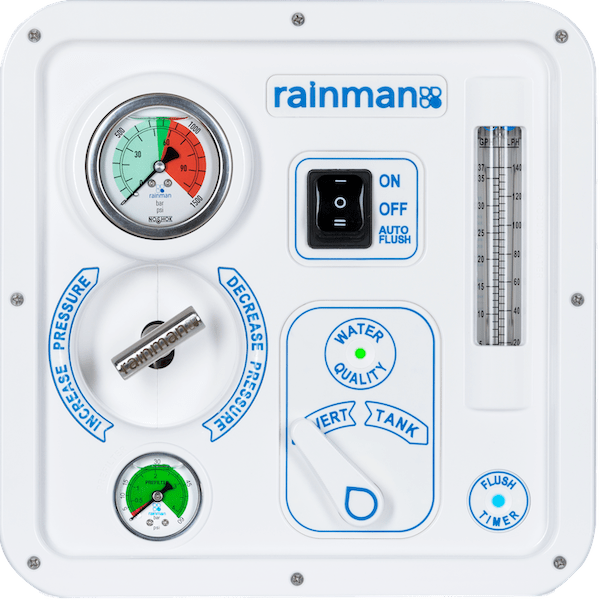

Top watermaker brands
If you’re considering buying a watermaker for a boat, here are some of the top brands to consider.
- Cruise RO Watermaker
- Echotec watermakers
- Horizon Reverse Osmosis (HRO)
- Sea Recovery watermakers
- Schenker watermakers
- Spectra watermakers
Fiona McGlynn is an award-winning boating writer who created Waterborne as a place to learn about living aboard and traveling the world by sailboat. She has written for boating magazines including BoatUS, SAIL, Cruising World, and Good Old Boat. She’s also a contributing editor at Good Old Boat and BoatUS Magazine. In 2017, Fiona and her husband completed a 3-year, 13,000-mile voyage from Vancouver to Mexico to Australia on their 35-foot sailboat.
Terms and Conditions - Privacy Policy

Rainman Watermaker Review: Best Sailboat Watermaker
Rainman watermaker review – Rainman naked 12V system (economy)
We’ve done a full review of the Rainman watermaker to help you make an informed decision before you purchase.
What is a watermaker, and why do you need one?
A watermaker is a piece of equipment you can install in your boat, or any off-grid situation, to make crystal-clear drinking water from undrinkable, salty sea water and electricity.
A lot of people want a sailboat so they can travel independently and visit remote locations. A watermaker essentially removes your reliance on shore support for fresh water; drastically increasing your range and independence while making life on board a lot more comfortable to boot.
Watermakers can seem complicated at first, but they’re actually remarkably easy to install and operate – although some more than others!

As an Amazon Associate, we earn from qualifying purchases. We also earn from other affiliate programs. This means we may receive a small commission on products purchased through our links at no extra cost to you.
In this article we’re going to explain why we decided to buy watermaker in the first place; how we went about choosing a make and model; how we installed it in our cruising sailboat, and why we ultimately decided on a Rainman watermaker as the best watermaker for full-time liveaboards on a sailboat.

How does a watermaker work?
How to choose the best sailboat watermaker
Rainman watermaker review
- Power options
- Size and quantity
- Portable or permanent
- Documentation review
- Installation
How does a Rainman watermaker work?
There are a lot of different watermakers to choose between, but they mostly work in a very similar way – they’re basically pressure-washers configured to force salt water through a very fine filter at high pressure.
The filter, or “membrane”, is specially designed to remove all of the things you don’t want in your drinking water – like bacteria, viruses and salt – and only allow clean water to pass. You can drink the resulting water (it’s usually cleaner than tap water on land!), and naturally you can also use it for all your other domestic needs like cooking and cleaning.

The watermaker needs two things to work: a raw water source, like the sea, and a power source, which on a sailboat is typically your batteries and solar panels. You can get watermakers that run directly off the 12VDC / 24VDC your batteries provide, or from your inverter at 120VAC or 240VAC depending on where you are in the world.
You can also run a watermaker from a generator if you have one, which is a popular approach for boats that consume a lot of water (e.g. charters). A select few manufacturers, Rainman being one of them, even offer units that run directly off petrol – a sort of generator-and-watermaker in one. But which is the best watermaker for a cruising sailboat, and how can you choose between them?

Like anything in sailing, the absolute best sailboat watermaker for your boat depends on your needs and intended cruising pattern – but we’re going to talk you through the criteria we decided were the most important, and how that process ultimately led us to buy a Rainman watermaker.
There are a few thought-exercises we ran through before committing, such as “how much water do we currently use”, but also “do we want to use more than that after we install the watermaker”?
We thought about what we really wanted to achieve by installing our Rainman (read more on this in the Rainman watermaker review section!) – were we looking to cover our existing needs and remove our reliance on shore support, or should this represent a significant quality-of-life upgrade at the same time? And having calculated all that, did we have enough power to back it up? Here’s the thought process we went through.
Step 1: calculate your water needs

Before our Rainman watermaker review – how much water do you actually need?
If you’re reading this article, it’s likely that you don’t currently have a watermaker… and if you don’t, it’s equally likely that you have learnt how to eke out the water in your tanks for weeks or even months at a time!
Prior to installing our Rainman, Emily had perfected the art of taking a full shower in less than one litre of water (0.2 gallons). She would draw it into an empty bottle and often come out with water left over! I however am not known for my restraint and delicacy, and as such was relegated to washing in the sea. As a result of her aqueous austerity, Emily also became the underwater ceramics technician onboard Hot Chocolate (i.e. she does all our washing up, because I waste too much water). All of the above came from our tanks, while water for drinking and cooking came from shop-bought bottles.

And for us, that was the #1 thing – we wanted to remove our reliance on bottled water, because it’s horrible for the environment. It’s also super inconvenient – water was the main thing limiting our range and tying us to shore support. Water weighs 1KG per litre (8.3lb / gallon for our friends across the pond). We drink about 3L each, per day, in the heat of the summer; so we’re looking at hauling 42KG of water per week (6.6 stone) from the supermarket just to cover our basic hydration.
We often cooked in bottled water, too, because a lot of countries have heavy metals like lead and mercury in the tap water and you don’t really want your pasta with a side of poison. We calculated that we were actually getting through about 8L per day combined in food and drink alone, which meant hauling 56KG of bottled water a week under the blistering Greek sun (nearly 9 stone)… and no doubt further inflating our water requirements as a result!!

Then there’s the cost of the bottled water, which is small but does add up, and the added inconvenience of having to make regular bin runs to deal with all that plastic (~38 bottles a week). Bear in mind we’re just two people – if you have a family or regular guests, you’ll need to increase those accordingly.
A close second was the ability to shower whenever we wanted (run away to sea, they said… it’ll be romantic, they said…) – so that’s an extra litre every day or two for Emily, and an extra 10 or 20 for me! Truth be told I was quite happy washing in the sea, but it’s very nice to be able to shower in fresh water for special occasions, or be able to rinse equipment in fresh water after it’s been in the sea (e.g. knives, spearguns…).
A stretch-goal was to have enough water on tap (pun intended!) for me to become assistant-second-in-command underwater ceramics technician, and take my fair share of the washing up. We also quite liked the idea of being able to soak lines, clean the salt out of deck hardware, etc. because that’s something we typically only get to do at the start and end of the season, but that was very much viewed as a bonus. Washing the salt off your gear extends its life dramatically which can be a good way to offset the cost of a watermaker if you’re on a budget.
So in summary, we didn’t just want to cover our existing needs – we wanted a little more to play with as well – but we didn’t go as far as treating it like water on land (showers every day, washing clothes, etc). If you have a washing machine, heads that flush with fresh water, teenagers that seem to be waging war on their microbiomes with endless soapy showers… you’ll need to account for those as well.
We estimated our water needs to be:
Drinking: 3L / person / day;
Cooking: 0.5L / person / day;
Personal hygiene: 5L / person / day (e.g. a 10L shower every other day);
General needs, e.g. cleaning: 1.5L / person / day;
Total: approx. 10L / 2.2 gallons per person, per day – meaning 20L total per day.
Step 2: Calculate your power needs (and how you’re going to meet them)
Some brands of watermakers are more efficient than others, but from our own experience and from talking to others, it seems like it takes around 10 Watt-hours to make a litre of water – i.e. about 0.8 Amp-hours from a 12 volt battery. Your mileage will vary based on things like the chemistry of your battery bank, the length of your cable runs, and even the temperature of the sea, but that seems to be a pretty usable yardstick.
Our Rainman watermaker draws about 28A when it’s running, and makes about 34 litres per hour.
Because we’re full-time liveaboards, and working remotely from the boat as well, we already have quite a lot of solar – for a monohull, at least – 360 Watts of mono panels. In theory they should push a good 30 Amps into the batteries in full sun, but in practice it peaks at more like 20A and we make a total of 2.2kWh (2200Wh) in an average day.
We need to make 20L of water per day to keep up; that means we need to allocate 200 Watt-hours from the 2200 we make in a day; i.e., installing our Rainman increased our overall power needs by about 10%.
For comparison, Emily’s laptop draws about 90W an hour and mine draws 120W, so running our Rainman watermaker for an hour a day is about the same as running both our laptops for the same period. A 12V fridge often draws about 3 amps, so about 36W – meaning keeping the fridge running consumes ~850Wh per day, about 4 times more than our watermaker.
Honestly, I imagined it would take a lot more!
Of course, our solar output drops drastically as the Autumn / Fall rolls in, but then so do our water needs… so it’ll be interesting to see how that pans out and whether we’ll need to augment it with fossils fuels, e.g. making water after motoring.
⚡ Note: We have recently upgraded our battery setup to lithium marine batteries from the wonderful BattleBorn. We highly recommend them. You can find out more here . ⚡
See the FAQs at the end for more information.
Step 3: Your cruising pattern
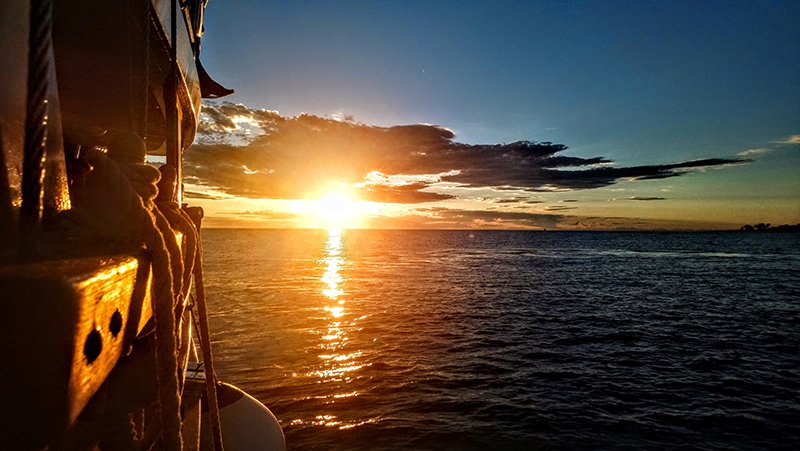
Everyone’s needs are different, and it’s important to factor them in when choosing a watermaker.
One of the main reasons we were drawn to Rainman watermakers is that they use all off-the-shelf, standardised parts. If your Rainman breaks down, it almost doesn’t matter where in the world you are – you’ll likely be able to get standardised spares in the nearest major city. We won’t name any names, but in our quest to identify the best watermaker for our sailboat we discovered that a lot of manufacturers use proprietary parts – ones you can only get from the manufacturer.
We considered this to be extremely undesirable, because
(i) as a cruising sailboat, we want to be able to service our watermaker anywhere in the world
(ii) it can lead to price-gouging, i.e. they can charge whatever they want for spares because you can’t get them anywhere else; and
(iii) – it demonstrates an astonishing lack of awareness on the part of the manufacturer.

Your mileage may vary, but we bought a watermaker for the independence. In fact, we more or less bought the whole boat for independence! Trading a reliance on bottled water for a reliance on obscure, single-source, non-standard parts completely defeats the object.
I have worked in technology all of my life, and for every instance where proprietary parts were truly necessary I could show you 20 more where it was simply an attempt to create a “walled garden” and force you to buy overpriced spares from the manufacturer themselves. In a further handful of cases, it’s to force planned obsolescence and make you throw away an old unit rather than repairing it – which again, is the opposite of how we try to live.
In a non-watermaker example, this is exactly the reason we were forced to replace our windlass in our first season. A simple, $5 helical gear stripped, but because it was proprietary and the manufacturer had long since gone bust, we had no option but to replace it in its entirety – at a cost of about $1500, and all the needless waste accompanying it. We found a machine shop who could copy the stripped gear, but it would have cost nearly $1000 anyway after set-up costs. Not everyone will agree with us but we found that a horrible waste and just an awful design philosophy, and we cursed that manufacturer in a way that would make Blackbeard blush as we hauled up 80M of muddy chain by hand…!

So try to think about your intended cruising patterns and how awkward it would be if you needed spares. If you typically cruise the same grounds, it’s unlikely to affect you that much. If you’re planning an expedition or a circumnavigation however, you’re likely to want to look for manufacturers with a practical design philosophy like Rainman.
Ask around in forums and social media groups and try to gauge what it’s like to deal with the manufacturer. How self-serviceable are the units? How reliable are they? Again, this is something that led us straight to Rainman watermakers. The units have a reputation for being absolutely bulletproof; the pre-sale communication was outstanding, you can get spares anywhere in the world and (nerd alert) the documentation is outstanding too.
Although we eventually went for a fully-installed unit, we also loved the fact you could get a portable version that stows away in a locker or can even been taken in a bail-out situation if you have a 12V source to run it from. You can use the same Rainman watermaker in salt water or brackish (mixed salt and fresh) just by adjusting the pressure level, where some manufacturers require you to purchase a specific unit for each. While we didn’t actually need a lot of these features we appreciated that Rainman was grounded in real-world use cases and had given us that flexibility.
You should also consider if you really need a watermaker. Yes, they are wonderful. Yes, they are basically magic. Yes, it would be nice to be able to stand downwind of your significant other without a peg on your nose. But they also cost about $5,000, and you do have to keep using them every 2-3 days or fill them with pickling solution, else they will foul up and ruin the membranes (Rainman has an “autoflush” unit that makes this a lot easier, see below). If you don’t live aboard full time, you might actually find it an inconvenience!
Rainman Watermaker Review: Rainman 12V Naked
Having considered all of this, let’s talk about the Rainman Naked 12V unit we eventually bought, and why – although the reasons should already be becoming apparent! Here is our honest Rainman watermaker review – warts and all.
Rainman Watermaker Review – The Parts

A Rainman system comes in a few separate parts, which you can configure to suit your needs.
The pressure supply unit, aka. PSU. This is the pump that draws water from the sea, and then pressurises it ready to be forced through the membrane.
The RO unit. RO stands for reverse osmosis, which is the process a watermaker uses to filter the water. The RO unit therefore is a long tube containing the specialist filters that let it separate clean drinking water from salty sea water. The PSU pressurises sea water and sends it into the RO unit. Out of the other end, you get a small amount of pure, clean, drinking water, and the waste product – brine.
Control panel. Rainman make an optional control panel that lets you start and control the unit remotely from somewhere else in the boat. We installed our Rainmain in a pretty awkward location (in a lazarette under the cockpit), so we were very grateful to be able to mount the control panel somewhere rather more accessible! The control panel has instruments that tell you the pressure the system is operating at, how much water you’re making, and even the quality of the water (via a traffic-light system). You can also use it to control the autoflush function (see below).

Autoflush. Another optional extra, but one we would highly recommend. As detailed earlier in the article, you have to run a watermaker very regularly else marine life will grow on the filters and ruin them. The best antidote is regular, even daily, use, but you can also fill the unit with “pickling” solution that stops the fouling from growing. Generally speaking, that means you run the watermaker 2 – 3 times a week while living aboard, and then pickle it in the off-season when the boat is on the hard standing or home berth. It’s a bit of a pain, but not nearly as annoying as lugging 50KG of water from the nearest supermarket and / or chronic dehydration.
Enter the autoflush. Once a week, or at another interval of your choosing, the autoflush will open a valve and take fresh water from your tanks to flush the membrane and prevent fouling. This extends the life of the membranes significantly and removes human error from the equation. Considering an average sailboat has north of 10,000 moving parts to worry about, we’re big fans of anything that essentially maintains itself! You’ll still need to pickle if you don’t run the unit for 30 days, but if you’re like us and can stretch a tank of water to 14 days or more it’s really convenient.
Rainman Watermaker Review – Your Power Options

When specifying a Rainman system, you have three basic choices to make :
- Power source
- Portable (cased) or permanently installed (naked!)
Power source. When buying a Rainman, you can choose between three different power sources:
- AC electric . An AC electric unit runs off mains power, i.e. 120VAC or 240VAC depending on where you are in the world. That mains power in turn can come from a few sources: if you have an inverter, like many cruising sailboats, you’re already making mains power from the 12VDC / 24VDC supplied by your battery bank. You’ll need an inverter that can supply 1250W, although 1500W is recommended. You can also get mains power from the shore, via your shore power connector – although if you spend a lot of time on shore power you might not need a watermaker at all! If you have a generator on board, there’s a high probability your generator is also outputting mains power as well. AC electric units are much faster than DC, and can produce about 4X as much water per hour – while consuming about 3X the power, so they’re more efficient as well. The best option for boats that meet the power requirements, particularly larger boats, boats with power to spare, boats with high water consumption (e.g. charters).
- DC electric . This is the option we chose, for reasons we’ll explain. DC electric means the unit runs directly off your 12VDC batteries. At the time of writing, I don’t believe Rainman make a 24VDC unit, but 24VDC boats can just use the AC version above via an inverter.
The DC version makes a lot less water per hour than the AC version, because of nerdy reasons related to DC and current. A DC system tops out at 34 litres per hour, where an AC can make up to 140. They’re also somewhat less efficient, although if you’re using an inverter to make AC you should bear in mind your inverter is typically wasting 10 – 20% in the process so the numbers aren’t quite as clear-cut as they seem.
It’s marginally quieter than the AC system, but you need to be able to position it fairly close to your battery bank because again, nerdy reasons to do with DC.
We chose the DC unit because:
- Our inverter is only 1200W, and we didn’t want to have to upgrade it to meet the requirement.
- Our generator is also only 1000W, and we prefer not to use it unless we have to.
- Our water needs are only ~20L a day, so we didn’t really care about making water slowly. One hour a day would easily cover out needs.
- We could easily install the Rainman 3ft from the battery bank, so the cable run wasn’t an issue.
- Petrol. Rainman also make a unit that runs directly off dead dinosaurs. Essentially, it’s a suitcase generator like the popular Honda EU-series with a pressure supply unit bolted on (the genset inside is actually a Honda GXH50 4 stroke). It’s a great idea, particularly if you’re using a Rainman in a non-boat scenario (bugout cabin, disaster relief, etc). You can burn fossil fuels directly to make water without the need for a separate generator. I can definitely see the applications, and although it wasn’t relevant for us, it’s another example of how Rainman’s design philosophy seems firmly grounded in the real world. If you liked the sound of the control panel or the autoflush unit, bear in mind you can’t use them with a petrol unit. Rainman says the unit burns about 600ml of petrol per hour, which at today’s gas prices is about EUR 0.70 per hour, or one Euro of fuel for 200L of water.
Rainman Watermaker Review – Size and Quantity Options

Once you’ve decided on a power source, you can then choose the size and quantity of RO membranes to go with it:
- The AC and petrol units can both take two full-size membranes for maximum output – and you’re encouraged to go down that route, because the increase in water output far outstrips the increase in power consumption. Alternatively, you can fit one full-size membrane if you’re really on a budget, or there’s a cute compact unit with two half-size membranes if you’re seriously short on space and/or weight! For 90+% of boats the first option is the best and there isn’t much reason to consider the others. With two full-size membranes you can expect to make 100 – 140 litres of water per hour. With a single membrane, or the two half-size units, you’ll make 50 – 70.
- The DC unit only supports a single full-size membrane – there are no other options. You’ll also make less water than an AC or petrol unit using the same membrane – about 30 litres per hour. If you’re a family, or you have high water needs for some other reason, you’ll likely want to try to get up to an AC unit with two membranes as you’ll make up to 5X as much water per hour. For us, that wasn’t really relevant – it was the difference between making water for 20-30 minutes a day, or an hour. It didn’t seem worth upgrading our inverter or buying a larger genset.
Rainman Watermaker Review – Portable or Permanently Installed

And finally, decide whether you prefer a portable (cased) or permanently-installed (naked!) system:
- If you want petrol, it only comes in the portable, cased form factor. Note that you can’t use the control panel or the autoflush with portable form factors.
- AC or DC electric units can either be portable or permanently installed. The same caveats apply regarding the autoflush and control panel. The cased form-factors come in a rugged, blue plastic case that seems like it will stand up to a lot of abuse.
Portable systems are good if you simply don’t have space to permanently install the unit, and they offer the flexibility of being able to stow your Rainman in a locker when not in use. The PSU needs to stay quite cool while in use, and operating the unit in the open air is a pretty solid guarantee that it will. They’re also great if you don’t have a spare through-hull and you don’t fancy cutting a hole in your boat – you just dangle the hose over the side, making sure it’s good and deep but not amongst any fouling. However, you add a lot of man-hours to your watermaking operation (setting up, packing down, manually flushing…), which should definitely be factored in. You can’t autoflush, and you’re more likely to make a mistake – sucking up air or fouling can damage the unit, and the more times you manually dangle a hose over the side the greater your chances of doing so.
On Hot Chocolate, we already had two perfect, spare through-hulls from where the engine-driven fridge compressor used to be. One of them is deep down in the keel, allowing for a clean bite of water with near-zero chance of fouling or air bubbles. We can make water while underway without needing to watch the hose. The latter was perfectly positioned above the waterline so we can observe the brine output and check it for bubbles (part of the procedure for making water). This made choosing a naked system a no-brainer for us, but I think even if we didn’t have the spare holes in the boat we would probably have made the same decision.
And that’s it – that’s your three basic choices . If you went for a naked system you have a further two optional extras in the form of the control panel and autoflush, both of which represent pretty significant quality-of-life upgrades if you can afford them – but it’s still a fantastic piece of kit if you can’t!
Rainman watermaker review of the installation documentation
I know we’ve already mentioned this, but the documentation is really excellent and it’s clear there has been a lot of thought put into the product. It’s evident Rainman expect people to self-install, whereas when we spoke to one of their competitors (who we won’t name!) they stated “if you need to ask us any questions you shouldn’t be installing it”! Again, this shows a level of pragmatism, forward thinking and just common sense on Rainman’s part that we sometimes found lacking in competitors.
If you’re a manufacturer reading this, please understand that cruising yachts absolutely are going to install and maintain their own electronics, and we’ll desert you in droves if you try to lock us out!
Reviewing the Rainman watermaker installation process

We were pleasantly surprised to find that the unit came with almost everything we needed to install it. We were expecting to supply our own hoses, sundries, etc. but Rainman supplies everything you need – hoses, jubilee clips, hose splitters, T-valves… while we were installing it our local chandlery told us a horror story about a boat who had been waiting eight weeks for a replacement hose for their non-Rainman watermaker, so we greatly appreciated the completeness of the kit! I believe the only items we had to add was a splitter to tee the fresh water output into our tank, because we have the flexible plastic variety and the supplied fittings assumed a conventional solid tank. We happened to have one on board, so our additional material overheads were exactly $0.
Installation was really very straightforward. End-to-end it took me two days to install and test the unit, plus an extra day to get the autoflush set up.
We had a tiny teething problem in that one of the hoses was supplied with an adaptor, and we needed to remove it to screw it in correctly. We raised a ticket with Rainman, they replied in about 2 hours, and had already followed up to see if we were sorted by the time we read their first email!
Only basic hand tools were required to complete the installation, and in fact most of the connections are toolless (e.g. push-fit connectors). We’re now about three weeks into our ownership, and so far, I can honestly say we don’t have a bad word to say about either the company or the unit itself. Our intention is to update this in 6 – 12 months once we’ve had our Rainman for a season and let you know how it shapes up!
Our Rainman arrived from Australia to Greece in a little under 3 weeks, although Greek customs took a further 3 weeks to clear! We ended up having to pay a total of EUR 1100 in VAT and import duties, which was about what we expected. We’ve heard of people not getting charged anything, so it seems to be a bit of a lottery. The biggest hurdle we faced importing it was getting an EORI number (a Greek tax code for imports worth more than EUR 1000). We ended up using our boatyard’s EORI number, meaning they paid customs and we paid them back.

If you have any questions about Rainman or watermakers in general, feel free to use the comments section below and we’ll do our best to help. We’ve also tried to compile some answers to the questions we had when we started this journey and some of the most common ones you see online ( find this section below ). If this review was useful to you, please consider sharing it or joining our newsletter for more quality content and awful puns!
Check out Rainman products here.
Can I run a watermaker off an alternator?
Yes, you can use the power from your alternator while motoring to run your watermaker. Just be aware that if you’re underway, you might be creating bubbles… and if you suck up a bubble it can damage your membranes. Make sure the intake hose is good and deep and your wake is free of bubbles, or just bank the power and make water when you get to the other end.
Can you drink water from a watermaker? Is it good / bad for you?
Absolutely. When your watermaker is functioning correctly it should make water with around 300PPM (parts per million) of contaminants. Safe drinking water is usually 500 – 800, so in most cases, it’s actually cleaner than the water you usually drink!
How to take care of a sailboat watermaker
The number one enemy of watermakers is fouling. When you suck up sea water, it contains billions of microorganisms like plants and algae. Your watermaker filters them out, but some of them get caught in the membrane and can start to grow. The best way to take care of a watermaker is to run it very regularly to flush the microorganisms out before they get a chance to take hold. Run your watermaker every 2 – 3 days minimum, pickle it when not in use, and strongly consider getting a system with an autoflush function like a Rainman – it will make your life a lot easier.
How much water does a Rainman watermaker produce?
It varies, but between 30 litres an hour for a smaller unit or up to 140 litres an hour for a larger unit.
How much electricity does a sailboat watermaker need?
It depends on the size of the watermaker, but basic units consume around 400W, and bigger units around 1.2kW.
Can I run a watermaker off solar power? Do I need a generator if I have a watermaker?
Absolutely, you can run a watermaker off solar power. We have a 400W unit that we run from our 360W panels, via our 12V battery bank. We rarely need to generate in order to make water.
12V vs mains-powered watermakers
Mains-powered watermakers are generally more efficient, producing more water both per Watt and per hour. However, you need a fairly large inverter or generator to use a mains-powered unit. We opted for a 12V system because we didn’t need the speed of a mains-powered system, and we didn’t want to have to upgrade our inverter to accommodate one. You can find more information about why we chose a DC system in the body of this review.
Can you use a watermaker to make water from a river?
Some watermakers can make water from brackish water as well as salt. Some manufacturers require you to specify at the point of purchase, whereas others (like the Rainman) can handle it with a simple pressure adjustment. Just be sure to read and follow the manual carefully or you can damage your membrane.
Solar still vs boat watermaker?
A solar still is a device that makes clean water by evaporating sea water. It’s a great piece of kit to have in a grab-bag, particularly if you’re attempting a longer passage. You can get inflatable solar stills that fold down to the size of a pack of cards. Solar stills are excellent emergency gear but not a replacement for a watermaker, because they typically only make 1-2 litres per 24 hours – vs 2,000+ litres per 24 hours for a watermaker. Their principal advantages are portability and the fact they don’t need any electricity to operate. Both have a home on an ocean-going sailboat!
DIY watermakers
A number of plans circulate online for DIY watermakers. Watermakers are essentially pressure washers that force sea water through a membrane or filter to produce clean drinking water. It’s reportedly possible to build your own using off-the-shelf components (like pressure washers!), and save perhaps $1000 vs buying a pre-configured watermaker. While we’ve heard a lot about the concept over the years, we’re yet to meet a sailor who has built one themselves. Let us know in the comments if you’ve built one and how it’s working out for you!
Watermakers VS Brita filters, filter jugs, lifestraw, etc.
What’s the difference between a water filter jug and a watermaker, and why does one cost $10 while the other costs ~$5000?
Filter jugs use filtration and something called “ion exchange”, meaning the water trickles through a pad made of something like cotton to remove large particles, and activated charcoal or ion exchange resin which reacts with and “grabs” semi-volatile organic compounds out of the water. Sometimes they also use silver, which is antimicrobial, or UV light to kill out bugs. Filter jugs typically can’t remove heavy metals like lead and mercury, and they certainly can’t desalinate water (remove the salt and make it safe to drink). For that level of filtration you need to pressurise the water and use a much more sophisticated filter called a “reverse osmosis” membrane, hence the cost and complexity of a watermaker. The closest cheap equivalent is a solar still (see above).
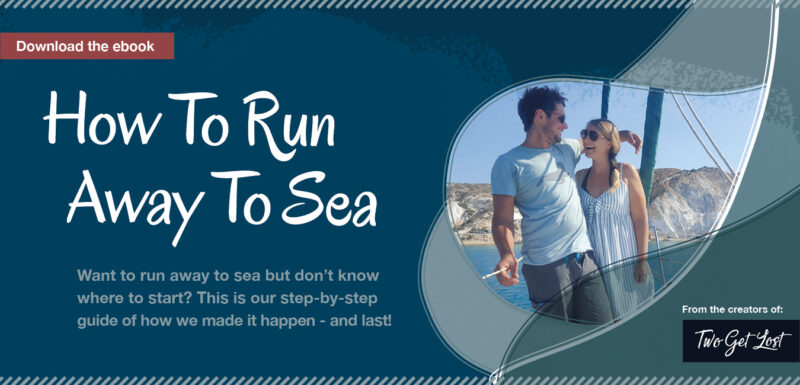
Similar Posts

Sailing Close To The Wind: How And Why You Should

How To Learn To Sail For Free

Sailboat Provisioning: How To Provision For A Sailing Trip

The 13 Best Sailing Watches For Serious Sailors 2024

14 Best Sailing Gloves 2024: Gill, Helly Hansen & More

How to Heave To On A Sailboat
13 comments.
Thanks for the detailed review and analysis of the various pros and cons. I plan to get a Rainman for my boat – also in Greece and am weighing up the options. Good practical advice about the autoflush option! Also, I notice you didn’t buy it from the Greek distributor – is there a reason?
Hello, thanks for the comment, and glad it was useful. We have to admit that out of all the upgrades we’ve made to the boat, this is the one that has run the smoothest – the whole process. We’re very, very happy! The reason we didn’t buy from Greece was as simple as price. Adam actually emailed Rainman with a whole bunch of questions (he likes to do his research!) and they cut us a very good deal that made it cheaper to buy from them. It was marginal though so if we hadn’t been out of the water all winter and had been in a rush to get our hands on it we would have bought from Greece. Hope that helps!
This is the best watermaker review I’ve read, haha! I was going to buy Spectra but now I’m seriously considering Rainman.
Thanks! Honestly would recommend it. Let us know which you go for and how you get on!
A very comprehensive and informative review, I’ve been researching these products for some time and can find very little to help me make a decision, can you also let me know how long you’ve had yours and if this has been reliable? I really want to make the right decision when I get one.
Hello, thanks for the comment. Glad we could help! We’ve had ours for a year now and it’s one of those bits of boat equipment that we just don’t think about because it works so seamlessly. Probably the best thing we’ve invested in for the boat (it was expensive but worth every penny!) Let us know if you go for the Rainman and how you get on.
Will do. I follow your blog closely, I’m a big fan of your lifestyle and your honest writing style.
what a great article, I love how honest and balanced this is. 5 stars
Thanks Rachel, really glad you found this useful and hope you do go for a Rainman watermaker. It’s one of the best purchases we’ve made for the boat!
So, you don’t g the specifications for the 12 volt model, what is the AMP versus gallon output ?.
was sent this article by a friend and it did not dissapoint. very thorough and clear explanation. can you review spectra next? ty
Thanks for your feedback and so pleased you found the watermaker review useful. If we ever go a different route in the future we will definitely give some honest feedback on whatever watermaker we opt for!
Comments are closed.
- Marine Electronics
A Guide to Marine Watermakers for Your Boat
- By Marlin Staff
- Updated: March 4, 2015
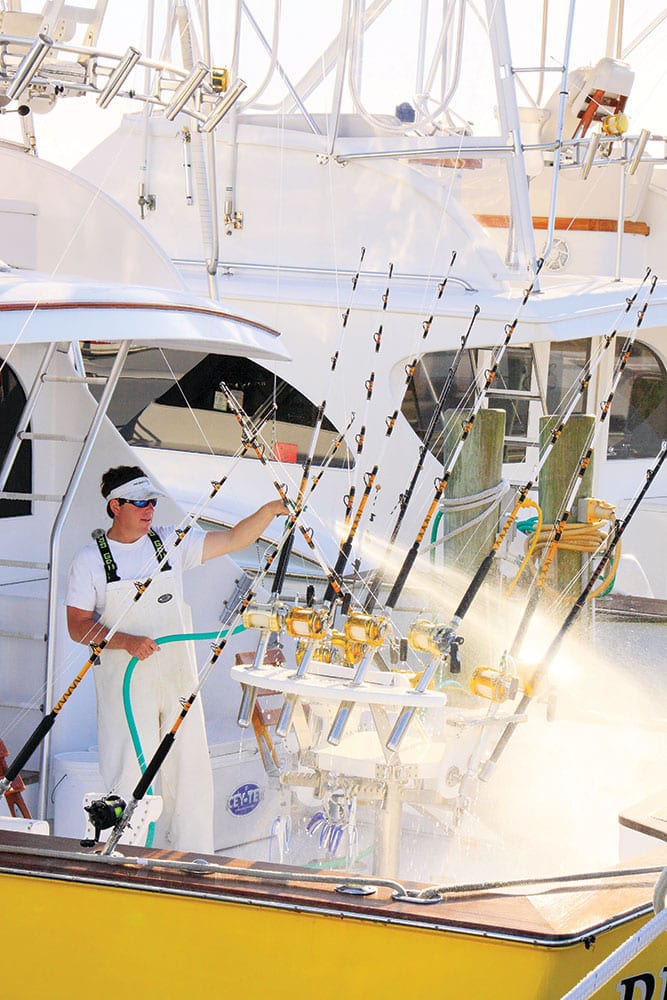
The World’s Largest Watering Hole
Once considered an extravagant option aboard a sport-fishing boat, watermakers are pretty much standard equipment today, with many boats even utilizing two units. Having a steady supply of potable water to shower, cook, live aboard and wash the boat with at the end of the day is a huge benefit. Converting salt water to fresh via the reverse-osmosis process gives you virtually mineral-free water, so it is far less damaging to topcoat finishes and Isinglass curtains than city or dock water. It’s also better for ice machines and the entire freshwater system.
Similar Operation
Boatbuilders who frequently install units have their favorite vendors for a host of reasons, and captains do as well, typically familiarity and service. The basic operation of any unit is very similar, so adapting to different manufacturers isn’t really a big deal as you move from boat to boat. Having the ability to get parts and reliable service should you have a breakdown wherever you fish or travel is always a top consideration.
The integration of automated switching and the ability to start and stop the water-making process without entering the engine room are major conveniences. One of the more recent trends has been the integration of wireless remote control of the units through the use of apps on smartphones and tablets. Not only will these tools start, stop and freshwater flush the units, but they can also be set to run for a specific time or maximum gallon production needed. They can conveniently monitor intake flow, product flow and total gallons, depending on the settings in the app. Several manufacturers also have the ability via a NMEA 2000 backbone to display and operate the units on shipboard monitors.
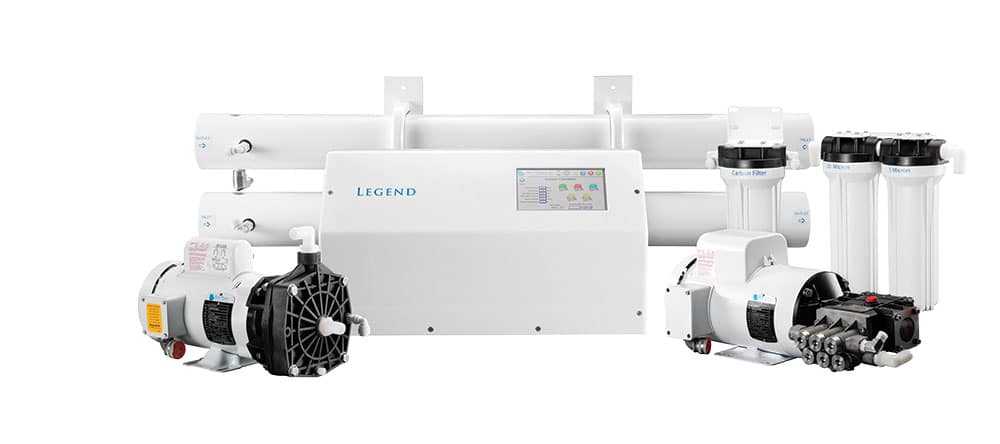
Blue Water Desalination is a relative newcomer to the marketplace with their Legend series of reverse-osmosis marine watermakers. The Legend series offers units with capacities from 475 to 1,850 gallons per day. Available in modular (shown) or container configuration, Blue Water units include a full-color 7-inch touch-screen display for simple operation. The large user interface with easily recognizable icons takes a lot of the worry out of operating the unit. Blue Water’s proprietary software continually monitors operation, helping to maximize production and quality. Featuring remote operation with NMEA 2000 or optional 3- or 7-inch color screens, the Legend series also features high-rejection membranes, freshwater flush and long-life Monel transducers, making it a full-strength competitor in the market.
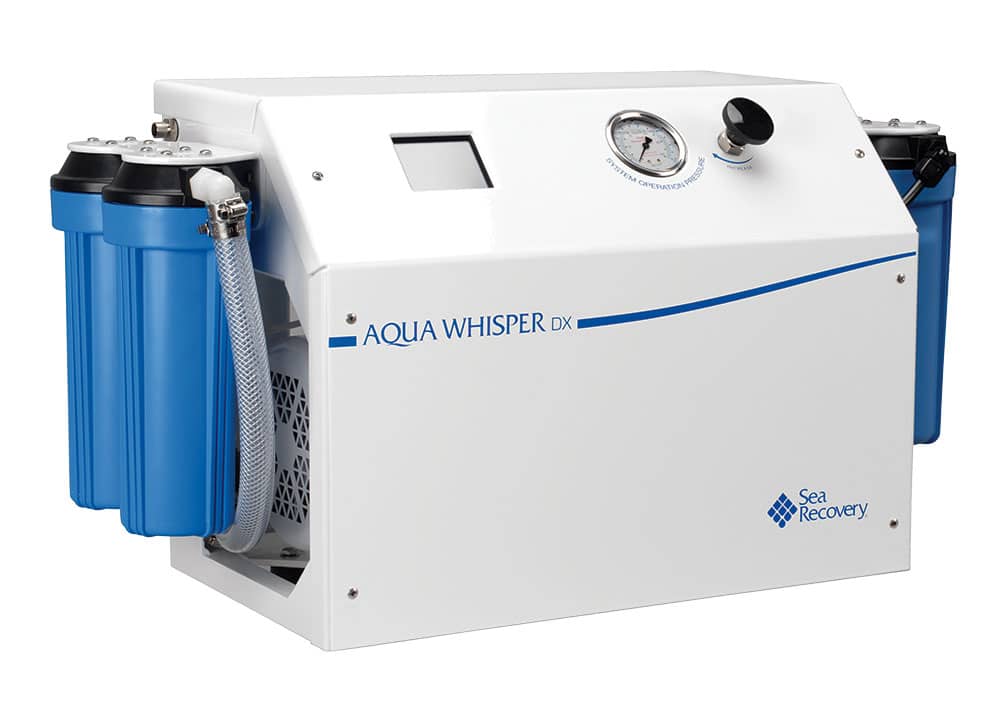
The Aqua Whisper DX series from Sea Recovery has the NMEA 2000 remote-compatibility feature that allows monitoring of all functions on any NMEA-compatible display. These units also have a full-color digital touch-screen display that reads in metric or U.S. standard units for managing all critical functions. They also offer an optional remote screen that allows for the same control mounted on the bridge or in the salon. Made with special attention to noise reduction, the Aqua Whisper units feature a low-noise manifold system and a unique high-pressure plunger pump that has been designed specifically for reverse-osmosis applications. Sea Recovery also offers an optional upgraded pump that is water lubricated, eliminating oil and oil changes, and it can operate up to 8,000 hours between maintenance requirements.
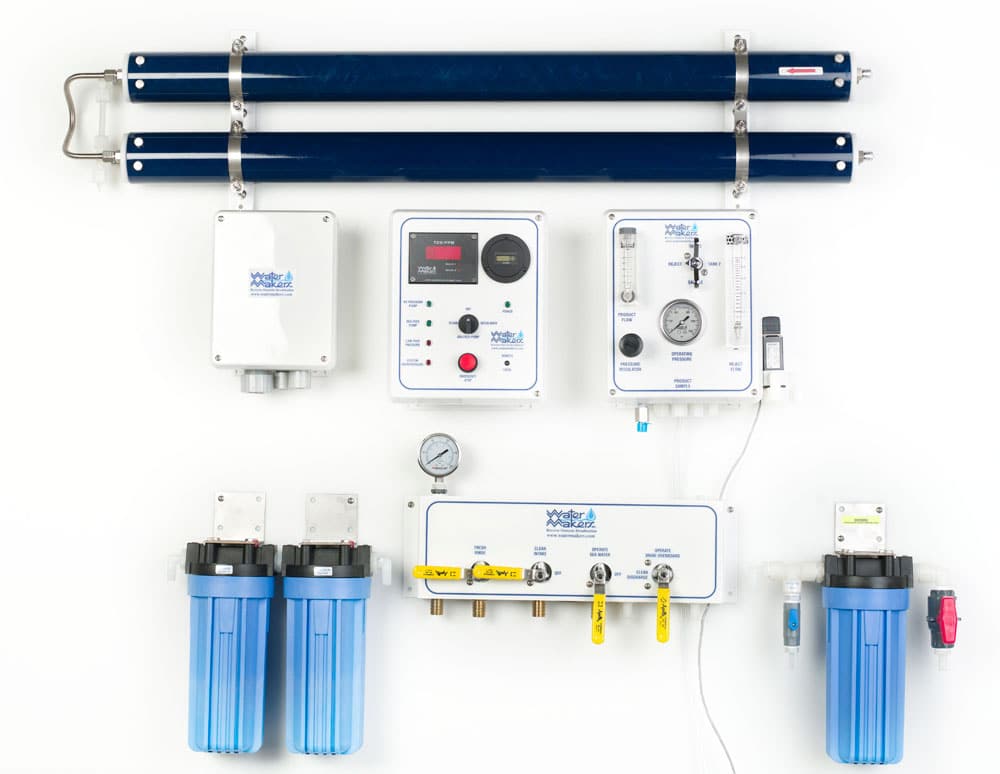
Watermakers, Inc. has been supplying reverse-osmosis units to boats and remote locations for many years, and their WMS-1000 is a workhorse unit that can be set up in a container or modular configuration. It features a heavy-duty 316 stainless-steel direct-drive high-pressure pump and plumbing, high- and low-pressure shut-offs, multitank control, an LED salinity monitor and auto diverter, as well as freshwater rinse and clean for maintaining membranes. Optional upgrade features include automatic start/stop with a manual override, and unattended rinse and remote operation via separate control panels. The WMS series is widely accepted and commonly found on today’s finer custom boats, offering units with daily capacities of 550, 1,000, 1,400, 1,700 and 2,200 gallons per day.
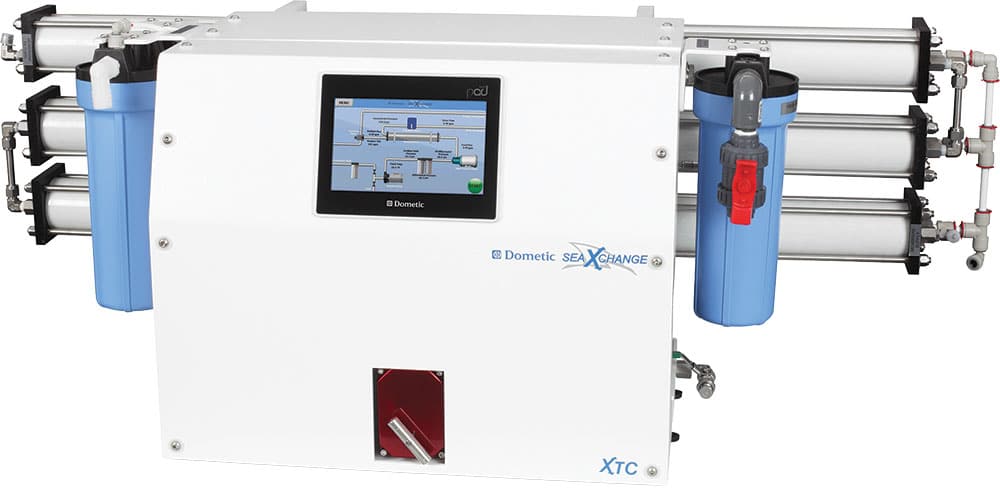
Industry behemoth Dometic offers the XTC series of watermakers with comprehensive manual control as well as total automatic operation. The XTC series offers a unique and functional platform with the addition of Dometic’s Smart Touch Integrated Intelligence Control (STIIC) software that allows users to remotely access the watermaker from anywhere in the world via smartphone, tablet or computer. There is also a mechanical override in the event of a computerized failure of some sort. Available from 600 to 2,200 gallons per day, the XTC Series also features a built-in 7-inch color touch screen with easy-to-see color icons and graphics. With automatic freshwater flush, a 316 stainless-steel high-pressure pump, high-rejection membranes, 316 stainless-steel flow and pressure components and a totally fan-cooled motor with thermal protection, the XTC series offers everything needed for making fresh water aboard.
With the technological advances, computerized controlling, remote access and dramatically improved components, it is hard to argue against having a watermaker aboard. If you travel, cruise or fish daily, having a watermaker increases your travel range and makes living aboard far more comfortable. It certainly helps with boat maintenance by offering virtually mineral-free water to prolong topcoat life. With a good membrane-maintenance program and annual service, your watermaker will give you years of good operation. Having the ability to easily use and maintain these systems will no doubt make your decision to purchase and utilize the full benefits of having a watermaker aboard an easier one.
- More: Boat Maintenance , Boats , Marine Electronics , Sport Fishing Boats
Free Email Newsletters
Sign up for free Marlin Group emails to receive expert big-game content along with key tournament updates and to get advanced notice of new expeditions as they’re introduced.
This site is protected by reCAPTCHA and the Google Privacy Policy and Terms of Service apply.
By signing up you agree to receive communications from Marlin and select partners in accordance with our Privacy Policy . You may opt out of email messages/withdraw consent at any time.
- More Marine Electronics

The Innovators
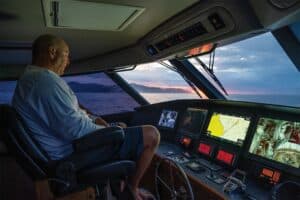
New Onboard Marine Electronics for 2024

Top New Marine Industry Technology for 2024

New Options for Onboard Internet

The 2024 White Marlin Open Lives Up to the Hype
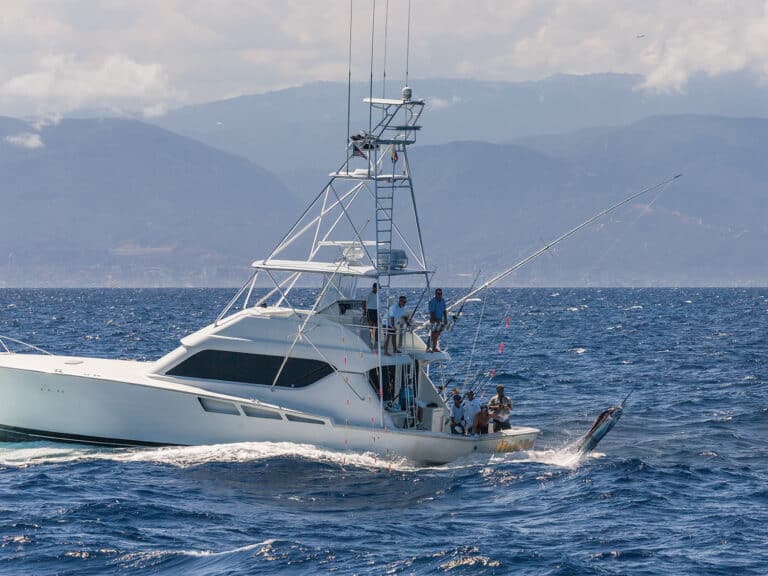
Viva Venezuela: The Legacy of a Once-Thriving Fishery

F&S 68 Preview on the Drawing Board
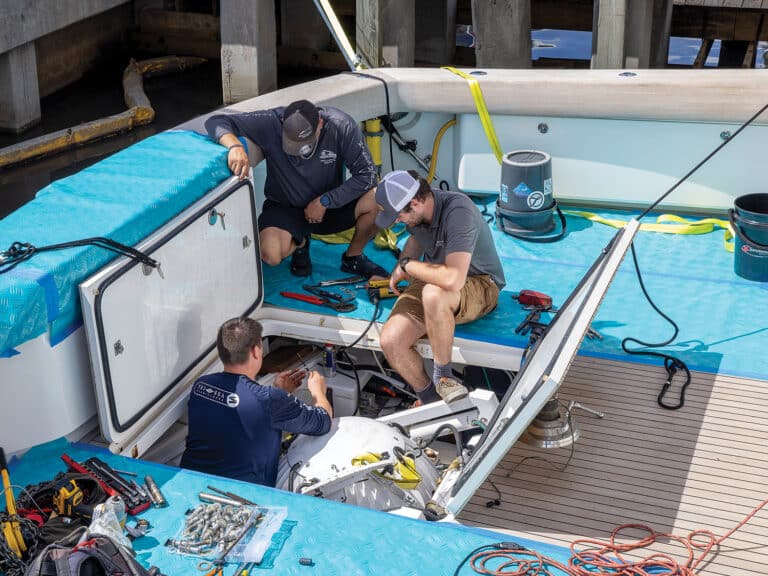
Boat Buying Tip: Prepare for Survey Deficiencies
- Digital Edition
- Customer Service
- Privacy Policy
- Terms of Use
- Email Newsletters
- Tournaments
- Expeditions
Many products featured on this site were editorially chosen. Marlin may receive financial compensation for products purchased through this site.
Copyright © 2024 Marlin. A Bonnier LLC Company . All rights reserved. Reproduction in whole or in part without permission is prohibited.
Sign up for free Marlin Group emails to receive expert big-game content along with key tournament updates and to get advanced notice of new expeditions as they’re introduced.
Subscribe to Marlin
Subscribe now to get seven keepsake print editions of Marlin per year, along with instant access to a digital archive of past issues, all for only $29 per year.
- Bermuda Triple Crown
- Los Cabos Billfish Tournament
- Offshore World Championship
- Scrub Island Billfish Series
- Marlin Expeditions
- Guatemala – Ladies Only
- Nova Scotia
- Dominican Republic
- Galápagos Islands
- Expert Instructors
- Corporate Retreats
- Our Sponsors
- Newsletters

- Center Consoles
- Dual Consoles
- Motoryachts
- Sport Cruisers
- Tenders & Ribs
- U.S. Atlantic
- Engine Buyers Guide
- Electronics
- Digital Edition
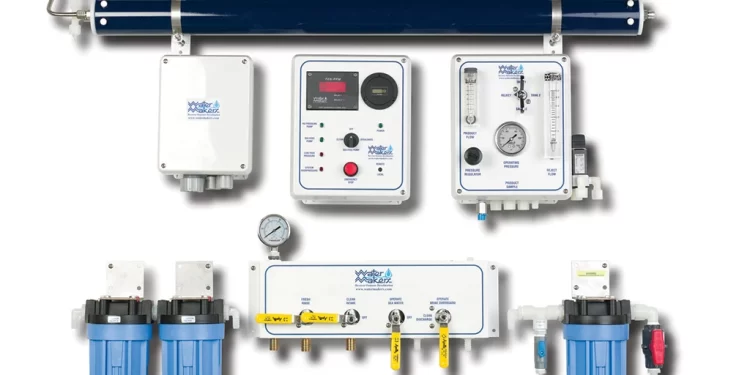
Watermakers' WMS-1000
Watermakers for Boats: The Right One Is Pure Bliss
Fill ’er up, watermakers for boats turn seawater fresh., how watermakers for boats work: the science of seawater conversion, compact and efficient.
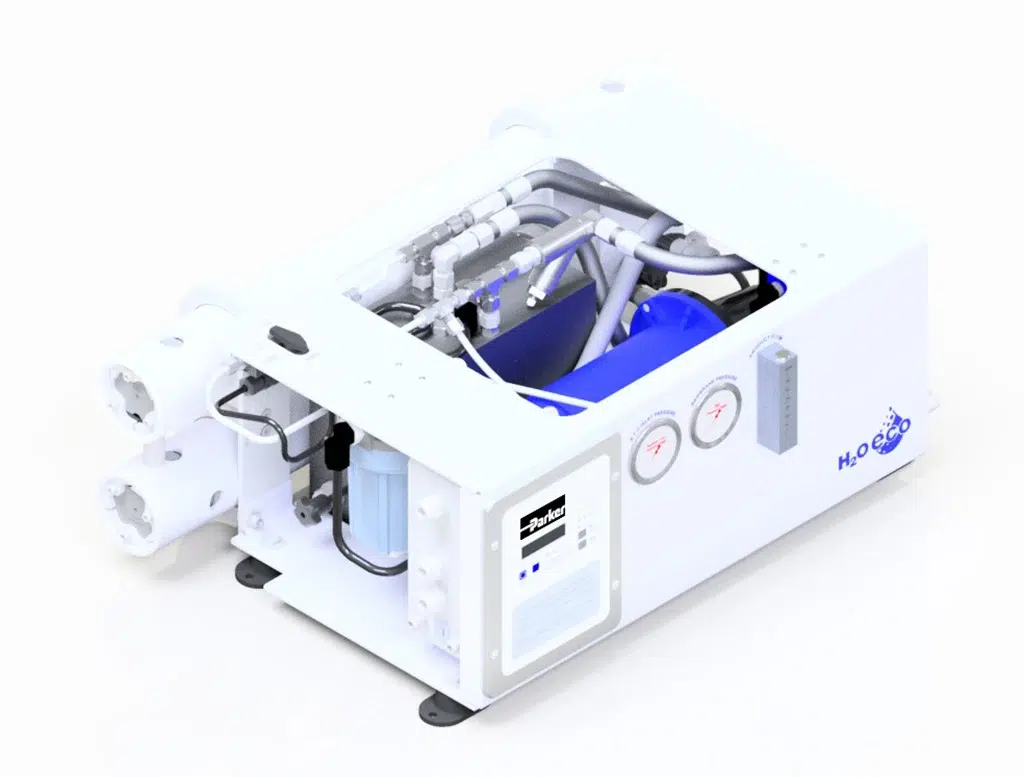
You Get What You Pay For
Choosing the right watermaker for your vessel: what you need to know.
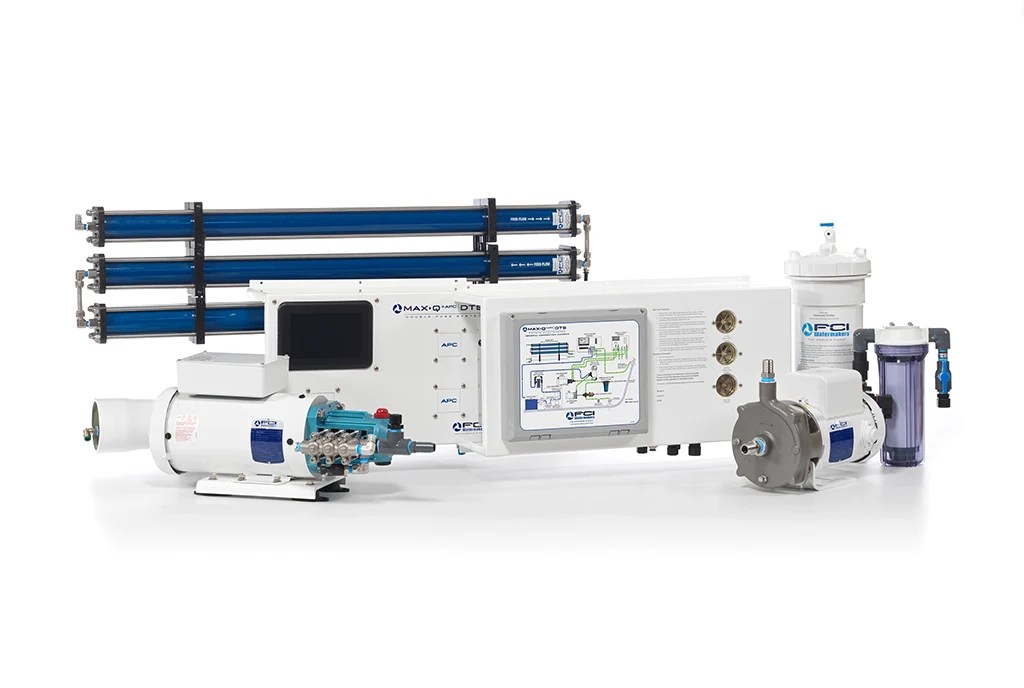
How Do Watermakers Work?
Boxed or Modular
Investors were thankful last week after cooling inflation data, large center console boats are redefining the luxury experience.

Leave a Reply Cancel reply
Your email address will not be published. Required fields are marked *
Save my name, email, and website in this browser for the next time I comment.
Receive our Newsletter
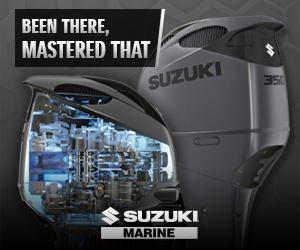
Recommended
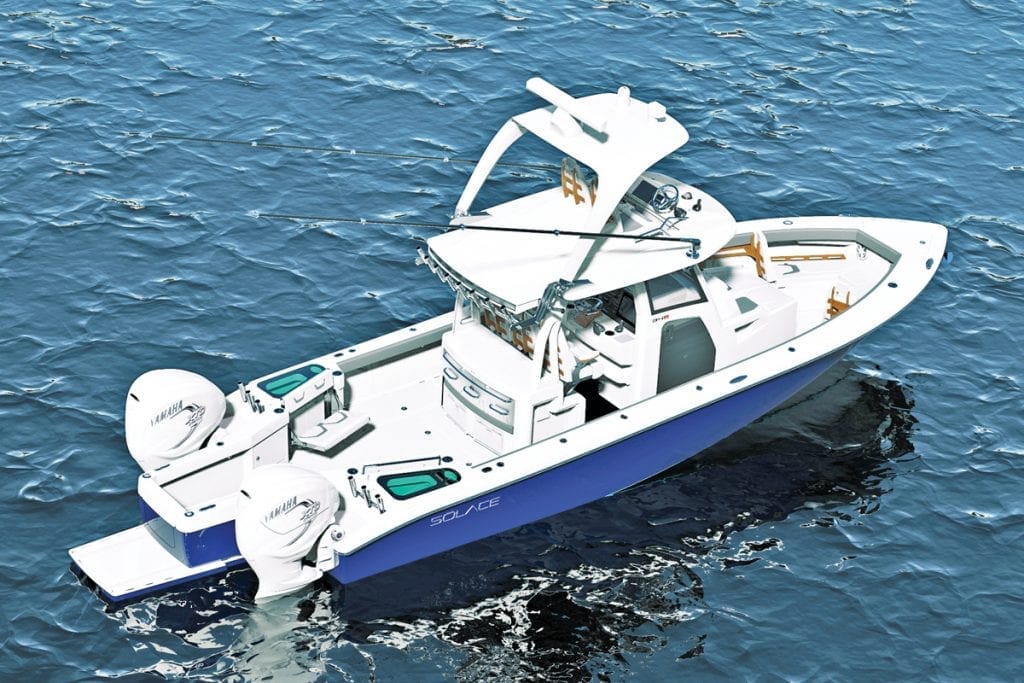
Azimut Grande Trideck: This Is Redefining The Luxury Yachting Experience
Don't miss it.

Experience Power and Efficiency with the Honda BF350 Outboard Engine

See Rossinavi’s New Achievement: An Attractive Hybrid-Electric Catamaran Yacht

Markets Take Off On Another Win Streak – What You May Be Missing!

Your Boat’s Full Potential is Here: The Astonishing Volvo Penta Sterndrive Power

Cruising the Northern Great Loop: Quality Adventures Through New York

Experience the Best of Boating at the 2024 Annapolis Powerboat Show
- Terms Of Service
- Privacy Policy

1591 E. Atlantic Blvd, 2nd Floor Pompano Beach, FL 33060 Office: +1 (954) 522-5515 Fax: +1 (954) 522-2260 Contact us: [email protected]
© 2024 Southern Boating Media
RetireFearless
Best Watermakers for Sailboats
Having the best watermaker for sailboats on board is one of the first and most important stages toward being sustainable and self-sufficient.

October 17, 2023
This article may contain affiliate links where we earn a commission from qualifying purchases.
With a watermaker, you'll always have access to fresh drinking water while sailing, even in remote locations. The majority of the models are well-built and have cutting-edge technology that make them efficient, dependable, and simple to install, use, and maintain.
We have shortlisted some of the best watermakers for sailboats. These include, The Ultra Whisper, EchotecWatermaker, Spectra KatadynPowerSurvivor, Village Marine - Little Wonder Series, and Ventura 150 Watermaker.
So, when it comes to selecting the best watermaker for your yacht, it may all boil down to what works best for you in terms of power consumption, efficiency, and the amount of water generated, among other factors.You may stay off the radar for as long as you like with the right watermaker, and you'll never run out of water, which is crucial for enjoying your sailing excursions.
After conducting our research and speaking with some experts in the industry, we have put together this guide to help you learn more about the best watermakers for sailboats.
Table of Contents
Best Watermakers for Sailboats – A Complete Guide
Trawlers, long-range boats, and yachts have seen a recent spike in interest in the marine business. It's reasonable that an off-grid,long-range, on-the-water life would be more enticing now than ever before. When preparing your boat for the long term, it's crucial to think about the most sustainable solutions, and having an appropriate supply of freshwater is sometimes disregarded. While most boats in this group have built-in freshwater tanks, the tank's capacity is often severely limited.
Let's have a look at some of the top watermakers now on the market.
The Whisper Ultra

Sea Recovery’s Ultra Whisper is by far one of the greatest watermakers currently available on the market, with limited electrical options that can work on either DC or AC. This watermaker is not only silent, but it also has an autonomous functioning that requires very little user intervention.
Since it can serve as an effective water supply, this watermaker is suitable for small powerboats and sailboats.When compared to other models, this model promises a 75 percent reduction in power use.
- Water output that is smooth and quiet
- Ideal for small vessels, it can produce up to 2,280 liters per day
- It conserves energy
- It might not be ideal for huge vessels
Watermaker by Echotec

Look no further than the Echotec if you want a watermaker that can create 60 liters per hour with no care other than changing the filters. This type is built for high reliability and simple customer installation.
This watermaker is constructed of high-quality components that can endure the severe sea environment, making it one of the most robust watermakers available. This is essentially a line of modular watermakers that range in power from 12-volt to 24-volt DC. They provide an energy economy, a computerized energy recovery system, and unwavering dependability to guarantee that you never go out of drinkable water while at sea.
- Low energy consumption
- Cost-effective
- It has a very slow speed
- Not recommended for large vessels
PowerSurvivor Spectra Katadyn

The Spectra Katadyn PowerSurvivor is likely the cheapest watermaker on the market as a compact and energy-efficient watermaker. We're talking about a desalination system for your sailboat that only uses 4 amps. It can create 1.5 gallons of clean drinking water each hour, which is a good yield for a small watermaker.
It's also one of the most mobile watermakers on the market. You have the option of installing it temporarily or permanently in case you need to move it. This portability is especially important if you're searching for a model that can fit into even the tiniest of spaces.
Its simple but tough design ensures that it can work well even in the harshest sea environments. When it comes to power, this is the only type on the market that can switch to a hand-operated mechanism or manual energy if there is a power outage.
- Lightweight and portable
- Rugged construction for use in hostile marine settings
- Effective and dependable
- If there is a power outage, you can switch to manual power
- Ideal for off-grid sailing
- The semipermeable membrane is quickly damaged by gasoline or diesel
Little Wonder Series by Village Marine

The Village Marine Little Wonder Series has everything you need, whether you're searching for a watermaker for your little sailboat or a watermaker that can effectively serve those large boats. This type is designed for seasoned sailors seeking a variety of capacity options. This watermaker is only 69 pounds in weight, but it can produce approximately 180 gallons of fresh drinking water every day.
This type is one of the most efficient and cost-effective watermakers on the market, thanks to its high-pressure pump with low RPM. Not only that, but this watermaker has corrosion-resistant characteristics and is one of the most serviceable watermakers on the marketplace. It's dependable, quiet, and portable, which are all fantastic qualities in a watermaker.
- Simple to operate
- Corrosion-resistant
- Simple to maintain
- Quiet and adaptable
- There are no automatic adjustment controls
Watermaker Ventura 150

This watermaker is one of the most multifunctional on the market. It has the ability to run on both electrical and renewable energy. This model is lightweight and energy-efficient, and its small and modular design makes it a fantastic choice if you need a watermaker that's simple to operate and install in tight areas.
The Ventura 150 watermaker is extremely efficient, producing over 6 gallons of water per hour, making it ideal for tiny boats. The controller on this yacht watermaker allows you to control and monitor the unit from afar. It also includes an auto-store feature that will flash the system every five days.
Despite its potential to create around 150 gallons of water each day, this watermaker is silent and surprisingly compact. It also allows you to choose between an automated manual and a manual model.
- Extremely adaptable
- It is possible to employ both electrical and renewable energy sources
- It is silent and smooth
- It is both small and light
- Analog controls are available on the manual model
Marine Watermakers: The Fundamentals
Reverse osmosis is used in marine watermakers to take in seawater and produce clean, drinkable water suited for any of your live-aboard demands. The newly created freshwater is then poured into your vessel's existing water tank, while the remaining "brine" is dumped overboard. The manner in which the water is pushed varies among most maritime watermakers. Typically, the water is either electrically propelled (AC or DC) or powered by the motor of your boat. The filtration procedure will be slower and the incoming seawater will be saltier and colder, so sailors may need a more powerful system than those fishing down in the Caribbean.Watermakers are available in a variety of shapes and sizes, with modular models best suited for smaller vessels because the sections may be "stashed" in any available extra cargo space.
With the appropriate Watermaker, the ocean may provide an almost limitless supply of fresh, clean drinking water to keep you hydrated on your offshore sailing adventures.When preparing for long-distance journeys, many sailors invest a lot of time and money on various aspects of the sailboat, including as the generators, electronics, engine, and sails.
While there's nothing wrong with that, they frequently forget one critical aspect of human survival: having enough fresh drinking water.Whether you have fresh water to drink in tanks on your yacht or plan to cruise in regions where clean drinking water is readily available, the annoyance of having to return to the dock to fill the water tanks might be overwhelming, which is exactly why you should look for the best watermakers for sailboats.
Watermakers, like many other navigational technologies, have progressed greatly in recent decades to become more efficient and reliable. Thus, they are no longer a luxury, but a necessity on the sailboat. Even better, watermakers have become reasonably priced and are designed to keep you hydrated when exploring locations without access to clean, fresh drinking water.
In this post, we'll look at how watermaker systems function, the benefits they provide, and the best sailboat watermakers currently available. You should be able to select the best watermaker for your yacht after reading this article.
To be honest, many sailors do not require the use of a watermaker. If you plan to sail near the coast, there's a good chance you'll be able to get fresh, clean water right off the dock. However, if you've always wanted to go off the grid and sail to far-flung corners of the globe, this can be a constraint.
A watermaker makes great sense to most seafarers with that in mind. During your cruise, you won't have to be worried about transporting tons of water for heating and drinking. You won't have to think of freshwater as a limited resource that must be conserved till the next port.You can easily cross the ocean without worrying about running out of water with a good watermaker.
A watermaker ensures a constant supply of fresh, clean water, keeping everyone hydrated and healthy. You may clean the water whenever you want, and all you have to do is remove the filter once in a while to keep it running smoothly. In essence, a watermaker is one of the most crucial pieces of sailboat equipment, thus having one installed is critical if you're a serious sailor.
Modern Marine Watermakers
To create pure, drinkable water from seawater, modern marine watermakers rely on the reverse-osmosis concept.Seawater is driven through a semi - permeable barrier that only permits freshwater molecules to flow through it, but not salt, germs, or any other organic substance, throughout this process. The newly purified fresh water is then piped into the sailboat's water tanks, with the remainder (brine) being thrown overboard.
Even though the sort of pump used and how it is powered varies amongst maritime watermakers, this is one of the most crucial aspects in any watermaker. Water can be pumped electrically or straight from the boat's motor in most circumstances. If your yacht has an AC generator or alternator, using the AC output to run the watermaker directly makes a lot of sense.
If you use renewable energy sources such as solar or wind, you can opt for DC-powered devices. You can also use AC-powered watermakers, but you'll need to purchase an inverter.
Overall, DC-powered watermakers are more effective than AC-powered watermakers because they have a power-saving energy recovery technology (ERS). However, keep in mind that if you're sailing in colder and saltier places, your energy usage may be fairly significant. This is because the water filtration procedure in certain places may be a little slower. As a result, if you expect to sail in colder, saltier places, you should make investments in a higher-powered watermaker system than if you plan to sail in warmer, less salty areas.
In case of a motor-driven watermaker, the high-pressure pump should be mounted on the motor so that it can be belt-driven with an automated clutch. If you need a significant amount of drinkable fresh water, a motor-driven watermaker should be your primary choice. This is more efficient than watermakers that are powered by AC or DC. This arrangement has an automatic controller that continuously pumps the water, despite the little engine. Engine-driven watermakers are great for reducing your energy consumption in this regard. When compared to traditional AC or DC-powered watermaker systems, an engine-driven watermaker can save up to 80% on energy consumption.
How to Select the Best Watermaker for Sailboats
When looking for the best watermakers for your yacht, there are numerous aspects to consider. The following are the most crucial factors to consider.
Your Freshwater Requirements
One of the most crucial factors to consider when purchasing a watermaker is your freshwater requirements. How much would be sufficient to keep you going on your sailing adventure? While the amount may vary from one sailor to the next or from one boat to the next, you should think about how many gallons a specific watermaker can create every day. This will assist you in selecting the best watermaker for you; one that will ensure you never run out of water.
Do not misjudge your water requirements, particularly if you plan to sail with children or stay on the boat for an incredibly long time.
Is there enough room on your boat to lodge the sort of watermaker you want to buy? While most watermakers are designed to fit into the tiniest of spaces, you need to evaluate the authentic size of the watermaker to see if you have enough space on your vessel to install it.
Watermakers can be powered by electricity, renewable energy sources like wind and solar (if available), or a combination of the two. When searching for the ideal watermaker, think about how it will be powered and whether or not it will consume little energy, which is a terrific feature. Again, there are engine-driven watermakers, so it's crucial to know exactly what you want.
Maintenance
Watermakers have a bad record for being tough to keep up with. Since components and equipment have improved in recent years, you should choose a model that is simple to maintain. You should utilize the watermaker in attractive water bodies.You should resist using the watermaker in polluted harbors because you may have to replace the filters frequently or perhaps damage the watermaker.
Recent Articles

What Size Sailboat Can One Person Handle?

How To Tie A Sailboat To A Mooring Ball Ring

What Is The Ideal Wind Speed When Sailing?

How To Use a Sailboat Winch

Things You Need To Liveaboard a Sailboat

Types of Sailboat Keels
I'm Michael Moris. I've been sailing my whole life, and it has taken me to places I never imagined. From the Caribbean to Europe, from New Zealand to South America - there's nowhere that hasn't felt like home when you're on a boat!

Trending Articles

How Far Is Havana From Miami By Boat?

Yachting Vs Sailing

Who Is Sailing Doodles?
Subscribe To Our Newsletter
Thank you! You're signed up for our free newsletter!
Oops! Something went wrong while submitting the form
About Our Team
We are a publishing team of licensed Nursing Home Administrators, Nurses, Assisted Living Directors, Health Professionals, Gardeners, and individuals with vast experience with senior living and activities.

©2024 Retire Fearless. All rights reserved.
We can be reached via email at [email protected]
Retirefearless.com is a participant in the Amazon Services LLC Associates Program, an affiliate advertising program designed to provide a means for sites to earn advertising fees by advertising and linking to Amazon. This site also participates in other affiliate programs such as CJ, ClickBank and more, and is compensated for referring traffic and business to these companies.
Facebook Pinterest

Marine and portable watermakers

Our Company
Innovative watermakers since 1998.
Established in 1998 Schenker is a leading manufacturer of high quality watermakers based on an energy recovery system . Our company owns 4 patents for unique small scale energy efficient solutions.
Schenker Benefits
Why choose us.

80% less power consumption
Energy consumption can be reduced up to 80% compared to conventional systems.

Maximum space saving
An ultra thin design is ideal for space restrictions and provides easy access for maintenance.

Battery power supply
Our watermakers are powered directly from batteries without the need of a generator, our products, marine watermakers.
Schenker watermakers are simple, quiet, compact, efficient and fully automatic. A Schenker watermaker will allow you – whether you own a yacht, a sail boat or any vessel – to extend your cruising duration and increase your independency from marinas, thus enjoying more time at sea. Schenker’s three-years warranty is backed up by our international network of sales and service representatives.
Wiki RANGE: GAL/H 7.9"> RANGE: 30 LIT/H
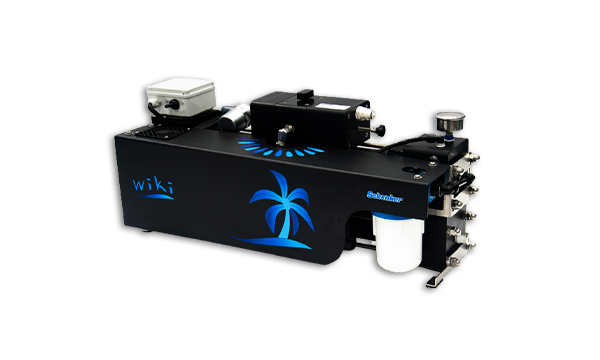
Portable marine watermaker
Zen RANGE: GAL/H 7.9-13.2-26.4-39.6-53-79"> RANGE: 30-50-100-200-300 LIT/H
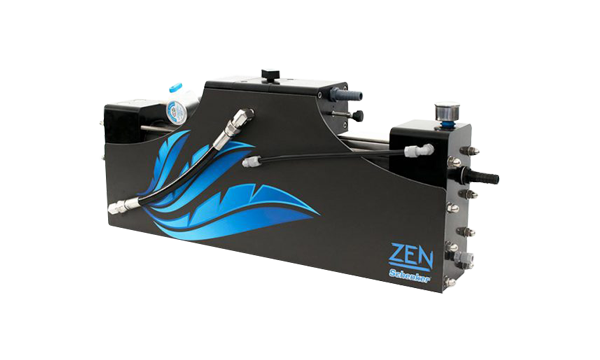
Quiet, small, efficient, inexpensive
Smart RANGE: GAL/H 7.9-15.8-21-26.4"> RANGE: 30-60-80-100 LIT/H
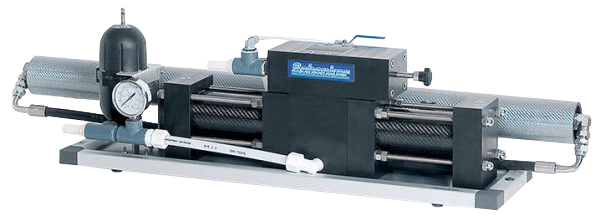
Smart, light and affordable
Modular RANGE: GAL/H 9-15.8-26.4-39.6-61-79-132"> RANGE: 35-60-100-150-230-300-500 LIT/H
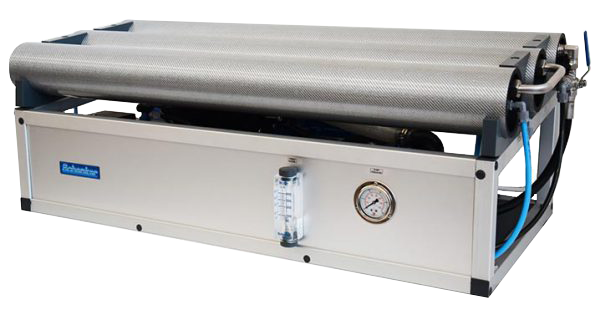
A very compact units for all needs
Our products
Emergency portable solutions.
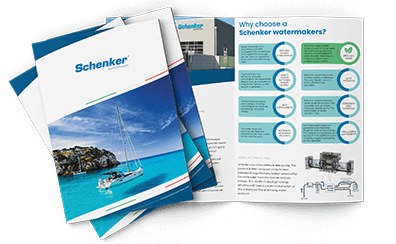
View our products range brochure
Download / View PDF
News & Articles
Share Share Tweet
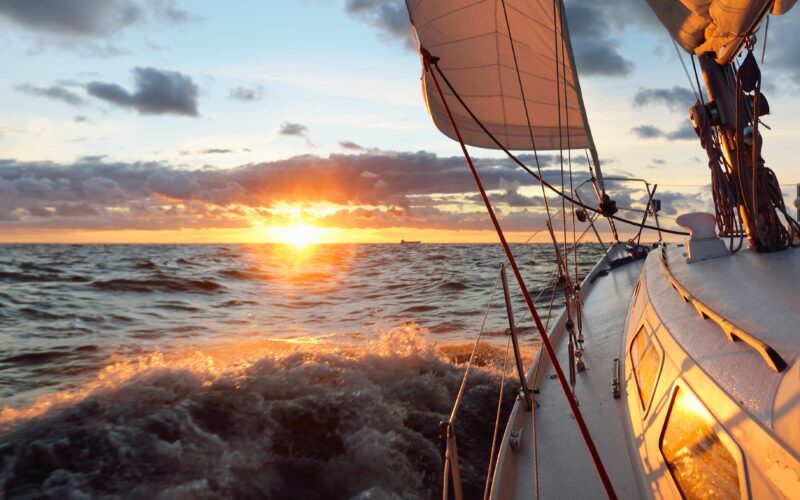
5 reasons why you should buy a nautical watermaker
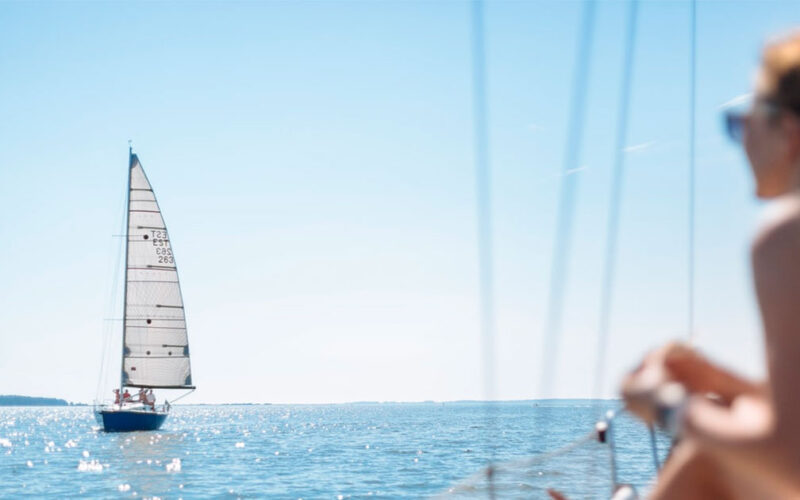
Schenker watermaker benefits: everything you should know
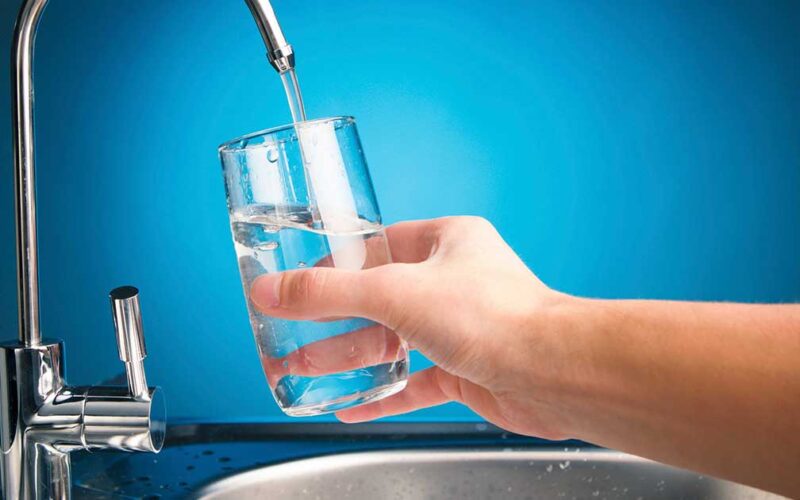
Water purification system: a new eco-product by Schenker Watermakers
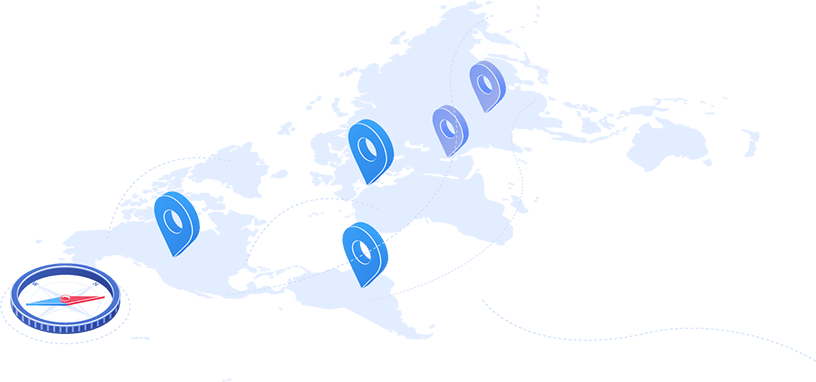
Worldwide dealers
Find schenker dealers near you, send us a message.
Name (required)
Email (required)
Select Your Country (required)
Message (required)
Security check (required)
Dimostra di essere umano selezionando bandiera .
Pursuant to and for the purposes of articles art. 7, 13 and 15 of EU Regulation 2016/679 I declare that I have read the privacy policy of this site and consent to the processing of personal data to receive the answer to my request.*
Main Office

What Are the Best Watermakers for Sailboats?
Navigating the diverse landscape of watermakers for sailboats can be a complex undertaking, given the variety of technologies available. Prospective buyers encounter a range of options, from compact manual systems to advanced automated units, each tailored to address specific water purification needs. Desalination methods, such as reverse osmosis, contribute to the diversity of available choices. Factors such as boat size, power requirements, maintenance, and freshwater output demand careful consideration to determine the most suitable watermaker for a given sailing scenario. Recognizing the challenges faced by sailing enthusiasts, EchoTec Watermakers aims to streamline the selection process by providing comprehensive information and tailored solutions. What are the best watermakers for sailboats ? Continue reading below to learn more.
Can You Run a Watermaker While Sailing?
Running a watermaker while sailing is indeed a viable option, and many modern sailboats are equipped with systems designed for precisely this purpose. The feasibility of operating a watermaker during sailing largely depends on the specific technology employed and the boat’s power capabilities. Commonly, sailboats utilize energy-efficient desalination systems for boats, particularly those based on reverse osmosis, which can be powered by the boat’s existing electrical system or alternative energy sources such as solar panels or wind turbines.
What Are the Smallest Watermakers for Sailboats?
Many sailboats can be cramped. This is when having a small watermaker can be advantageous. Some of the smallest watermakers that we offer include:
- 12/24v DC Economy Watermakers
- 12 – 180v DC Watermakers
- Belt-Driven DC Watermakers (Modular)
- 115/230v AC Economy Watermakers
What Are the Best Watermakers in the USA?
If you are asking yourself: “what are the best watermakers for sailboats?,” you are going to want to know what makes ECHOTec the best manufacturer in the United States. As a top manufacturer, EchoTec Watermakers excels in harnessing cutting-edge desalination methods like solar desalination , with a particular focus on reverse osmosis technology. The company’s systems boast unparalleled efficiency, ensuring optimal freshwater production while minimizing energy consumption. EchoTec’s commitment to sustainability is evident in its integration of eco-friendly features, such as energy recovery systems and robust materials with minimal environmental impact. Additionally, the company’s dedication to user-friendly design and robust customer support positions EchoTec Watermakers as a reliable partner for sailors and off-grid enthusiasts.
More About ECHOTec Watermakers
We are proud to offer much more than desalinators for sailboats. Our full selection of products includes home desalination systems and systems meant for off-the-grid living. Contact us today to learn more.
You May Also Like

How Does Desalination Work with Watermakers?
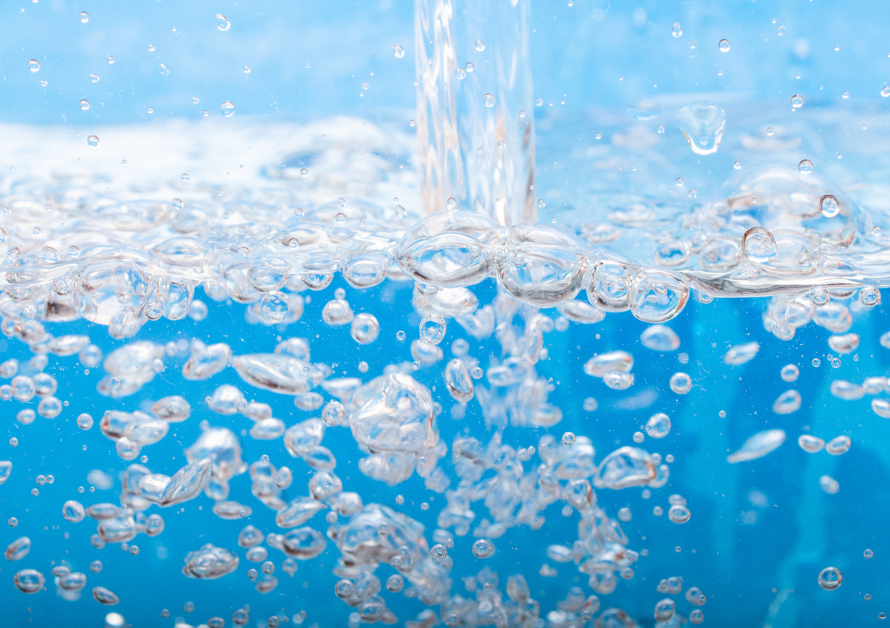
About Compact Desalination Kits
- All Wellness
- All Skin Care
- Moisturizers
- Mineral Sunscreens
- Sunscreens for Kids
- Sunscreens for Dark Skin
- SPF Lip Balms
- Under Eye Patches
- All Hair Care
- Purple Shampoos
- Thinning Hair
- Head Shavers
- Hair Dryers
- All Oral Care
- Electric Toothbrushes
- Toothpastes
- Mouthwashes
- Water Flossers
- Meal Kit Delivery
- Gluten-Free Meal Kit Delivery
- Disposable Face Masks
- Air Purifiers
- Eco-Friendly Laundry Detergents
- Natural Deodorants
- Period Underwear
- All Fitness
- Exercise Bikes
- Walking Shoes
- Fitness Trackers
- Reusable Water Bottles
- Blackout Curtains
- Sound Machines
- Home & Kitchen
- All Home & Kitchen
- Kitchen Appliances & Tools
- All Kitchen Appliances & Tools
- Coffee Makers
- Kitchen Gadgets
- Small Home Appliances
- All Small Home Appliances
- Air Conditioners
- Space Heaters
- Humidifiers
- Bedding & Bath
- All Bedding & Bath
- Bath Towels
- Silk Pillowcases
- Duvet Inserts
- Office Chairs
- Standing Desks
- Desk Organizers
- Seat Cushions
- Under Desk Ellipticals
- All Outdoor
- Raised Garden Boxes
- Garden Hoses
- Beach Towels
- Solar Pool Covers
- Grilling Accessories
- Electronics
- All Electronics
- Wifi Routers
- Gaming Consoles
- Streaming Devices
- Instant Cameras
- Handheld Gaming Consoles
- 3D Printers
- All Headphones
- Noise Canceling
- Wireless Earbuds
- Smart Gadgets
- All Smart Gadgets
- Smart Watches
- Smart Bulbs
- Garage Door Openers
- All Computers
- Gaming Laptops
- Laptops for College Students
- Computer Monitors
- Ergonomic Keyboards
- Dog Carriers
- Litter Boxes
- Scratching Posts
- Cat Carriers
- All Pet Care
- Nail Clippers
- Flea & Tick
- All Luggage
- Lightweight
- Weekender Bags
- Accessories
- All Accessories
- Luggage Tags
- Travel Pillows
- Tech Gadgets
- Packing & Organization
- All Packing & Organization
- Packing Cubes
- Toiletry Bags
- Gift Guides
- All Gift Guides
- Valentine's Day
- All Valentine's Day
- For Any Loved Ones
- Mother's Day
- All Mother's Day
- Last Minute Gifts
- Best Mother's Day Gifts
- For Moms Who Have Everything
- Best from Amazon
- All Graduation
- For College Grads
- For High School Grads
- For Teachers
- Father's Day
- All Father's Day
- Best Father's Day Gifts
- For Dads Who Love Fishing
- Holiday Season & Christmas
- All Holiday Season & Christmas
- Gifts Under $25
- Practical Gifts
- Other occasions & loved ones
- All Other occasions & loved ones
- For Grandparents
- For Bridal Shower
- For New Parents
- For Any Occasion
- Deals & Sales
- All Deals & Sales
- Most Popular This Month
- Sales This Week
- New & Notable
- What to Buy This Month
- CNBC Select
- All CNBC Select
- Credit Cards
- Small Business
- Personal Finance
- Credit Monitoring
- Help for Low Credit Scores
- Sign up for the Select Newsletter
- Check out Shop TODAY
- Privacy Policy
- Do Not Sell My Personal Information
- Terms Of Service
- NBC News Sitemap
Follow Select
The best motion sickness remedies, according to doctors and NBC Select editors

If you’re prone to motion sickness, you know the feeling of panic that comes with the onset of symptoms like nausea, dizziness and an upset stomach. Motion sickness manifests in different ways and affects many people differently — for me, it hits me almost every time I’m in the passenger seat of a car , on a boat or a bumpy airplane ride ; for others, it can be on a train or in certain areas of a vehicle.
I spoke with four medical experts about how to treat symptoms and prevent them in the first place. I also rounded up my favorite products, as well as those of other NBC Select editors, to deal with motion sickness.
SKIP AHEAD What causes motion sickness? | Who is more prone to motion sickness? | What are the best ways to prevent motion sickness? | Do medications work for motion sickness? | Are there any alternative remedies for motion sickness? | Why trust NBC Select?
Our top picks for treating motion sickness
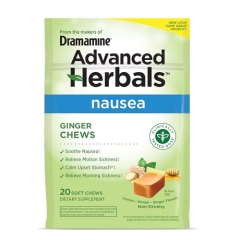
Dramamine Ginger Chews

Gin Gins Original Ginger Chews

Sea-Band Anti-Nausea Acupressure Wristband
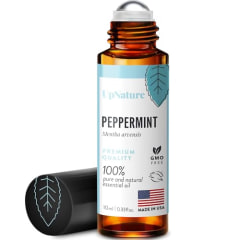
UpNature Peppermint Essential Oil Roll On
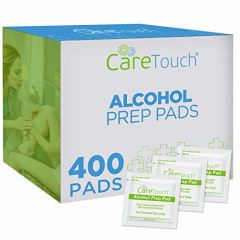
Care Touch Alcohol Wipes
What exactly causes motion sickness.
Our body is made up of several sensory systems that work together to help us experience the world: The vestibular system, located in our inner ear, gives us balance; the visual system gives us sight and perspective; and the somatosensory system helps us understand where our body is, says Dr. Danielle Qing , internal medicine physician and assistant professor in the department of medicine at Mount Sinai Hospital. But sometimes, the sensory inputs our brain receives don’t quite add up, and motion sickness usually occurs when the input from these systems is mixed or in conflict, experts say.
“For example, imagine you’re on a boat. The visual system is telling you that the room is still, while the vestibular system is telling you that you’re off balance, given the motion of the waves,” says Qing. “It works the other way too, such as feeling the balance of sitting still in a car but seeing the landscape pass you by quickly. This sensory conflict is where motion sickness develops.”
Other factors that tend to lead to motion sickness include a history of migraines, hormonal changes (for example, pregnant women) and genetics. Allergies and congestion, for example, affect your inner ear due to mucus and pressure buildup, which can throw off sensory signals, says Dr. Barbara Bawer , primary care physician and clinical assistant professor at the Ohio State University Wexner Medical Center. Also, being dehydrated, hungover or sleep-deprived can all increase feelings of nausea or dizziness, says Dr. Terez Malka , a travel medicine physician at Duration Health, a telehealth urgent care platform.
Even mindset can play a big role, and stress and anxiety about travel or motion sickness can make symptoms even worse. “Often, those who expect to get sick are the ones who do,” says Dr. Natascha Tuznik , infectious disease specialist and associate clinical professor of medicine at UC Davis Medical Center. (More on anxiety-related motion sickness below.)
Who is more prone to motion sickness?
Some people are more prone to motion sickness than others due to various factors. For example, women are more susceptible to motion sickness than men, and people experiencing hormonal changes (during pregnancy, for example) may also be more prone to motion sickness, says Tuznik. Children under 2 years old and adults over the age of 50 are usually the least susceptible to motion sickness, while it is most common in kids between the ages of 2 and 12, says Tuznik.
People with a history of migraines or those with certain medical conditions that impact the inner ear or balance center in the brain, including hearing damage and tumors or masses, can experience motion sickness symptoms at a higher rate, experts say.
There is also a genetic component: If your parents get motion sick, you are more likely to experience motion sickness, too, says Malka.
What are the best ways to prevent motion sickness?
The most effective way to avoid motion sickness symptoms is to prevent it altogether. That means avoiding situations that can trigger nausea and dizziness, such as reading in a moving vehicle or sitting in the backseat of a car, according to my experts. However, if that’s unavoidable, here are some expert-recommended tips for preventing motion sickness in any situation:
- Use your environment: If you’re at sea, try looking at the horizon, or another stationary object or fixture if you’re in a moving vehicle, says Tuznik.
- Take any medications in advance: Malka says all motion sickness medications work best if taken 20-40 minutes before you start traveling.
- Avoid reading or staring at a stationary object: This includes putting down your phone or tablet, experts say. “Your eyes are looking at one thing, which is your screen or your phone or your book, but your ears are hearing things going past or your eyes are also moving,” says Bawer. “Let’s say you look up really quickly, and you see things whizzing by you. But when you look back down at the page, it sends mixed signals, and there’s a disconnect.”
- Where you sit matters. “If you’re on a boat, avoid the upper levels. If you’re in a car, try to sit in the front. If you’re on a plane, look for a seat over the front edge of the wing,” says Tuznik.
- Stay hydrated and eat light: Make sure you drink water as you travel and avoid alcohol before and during traveling because a hangover or dehydration will make your symptoms much worse, says Malka. “Eating a light meal or frequent, easy-to-digest snacks like crackers so you are not too full or empty is typically best,” she says.
- Be prepared: “ Getting adequate sleep and making sure you are dressed comfortably for the weather and not too warm, can also help keep your stomach settled,” says Malka.
Do medications work for motion sickness?
Several over-the-counter and prescription medications can help relieve or prevent motion sickness. All of the experts I spoke to say that OTC and prescription medications are some of the most effective treatments for motion sickness, with the latter being the best way to relieve severe nausea, dizziness and other typical symptoms.
Keep in mind that most of the following medications are antihistamines, which means they can make you feel drowsy. They may also come with certain side effects. Our experts generally recommend avoiding medications if you have mild symptoms because the side effects tend to outweigh the benefits.
OTC medications
- Dimenhydrinate , also known by the brand name Dramamine , is a popular option to help reduce motion sickness symptoms like nausea. However, it is an antihistamine, which means it may cause drowsiness, dizziness and decreased mental alertness, says Tuznik. “Unfortunately, not much can be done to mitigate the side effects,” says Tuznik. “If you’ve taken it before, you should expect similar side effects each time.” You should avoid taking Dramamine while driving, according to experts.
- Meclizine , also known by the brand name Bonine , is similar to Dramamine, but is less likely to cause drowsiness since you take it once a day (while you should take Dramamine every four to six hours as needed), says Tuznik.
Remember that non-sedative OTC antihistamines like Zyrtec, Claritin and Allegra won’t be effective for treating or preventing motion sickness, says Tuznik.
Prescription medications
- Scopolamine patches: A prescription-only transdermal patch you can wear behind your ear at least four hours before travel and use for up to 72 hours to prevent or treat motion sickness, experts say. This is the most effective treatment for motion sickness, according to experts.
- Ondansetron, promethazine and cyclizine are oral medications and sedatives that treat nausea and vomiting. Like other anti-nausea medications I mention above, these are drowsy (sedating) antihistamines. They come with potential side effects, so talk to your primary care doctor or travel clinic about whether these medications are right for you.
Are there any alternative remedies for motion sickness?
If you have mild motion sickness or aren’t looking to endure the side effects of anti-nausea medication, there are several natural remedies to try. Keep in mind that these remedies, like aromatherapy and acupressure, have limited research showing effectiveness and whether they actually work usually varies from person to person.
Aromatherapy
Research shows that bad smells, like car fumes or cigarette smoke, can worsen motion sickness, while pleasant smells, like peppermint essential oils, may help reduce nausea. No major studies prove essential oils are safe or effective at treating motion sickness; however, ginger and peppermint essential oils or extracts have shown some promise in small studies , says Malka.
Zoe Malin , NBC Select associate updates editor, uses the UpNature Peppermint Essential Oil Roll-On to reduce her car sickness. “I keep a little roller ball of peppermint essential oil in my bathroom and apply it to my wrists before I go on a car ride, which is when I tend to experience the most motion sickness,” says Malin. “If I start getting nauseous, I’ll smell the essential oil — after a few deep breaths, the scent starts to dull the nausea.”
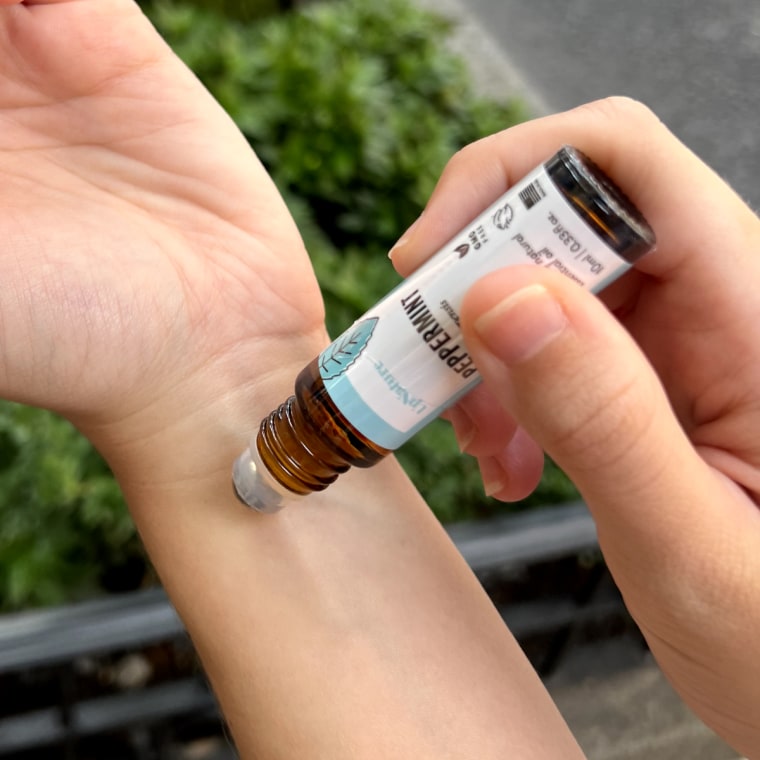
It is important to remember not to ingest essential oils or apply them directly to your skin, and to keep them away from children or pets, says Malka.
Ginger extract
Ginger can be an effective and natural way of preventing and treating nausea, according to several studies . Smaller studies have also shown that ginger spice is effective at reducing motion-related nausea .
Ginger comes in several forms, including chews, candies, supplement capsules, teas and tablets. Though there is no ideal dose for motion sickness, ginger generally helps your digestive system and supports the release of blood pressure-regulating hormones to calm the body, which ultimately reduces nausea, says Tuznik.
For my motion sickness, I’m a fan of the Dramamine Ginger Chews because they have a subtle ginger taste compared to others I’ve tried (ginger can be intense, in my experience), are fast-acting and have a chewy texture that makes it feel like I’m eating regular candy. Despite the brand name, these chews do not actually have the dimenhydrinate medicine that we commonly associate with Dramamine, so it does not leave you feeling drowsy.
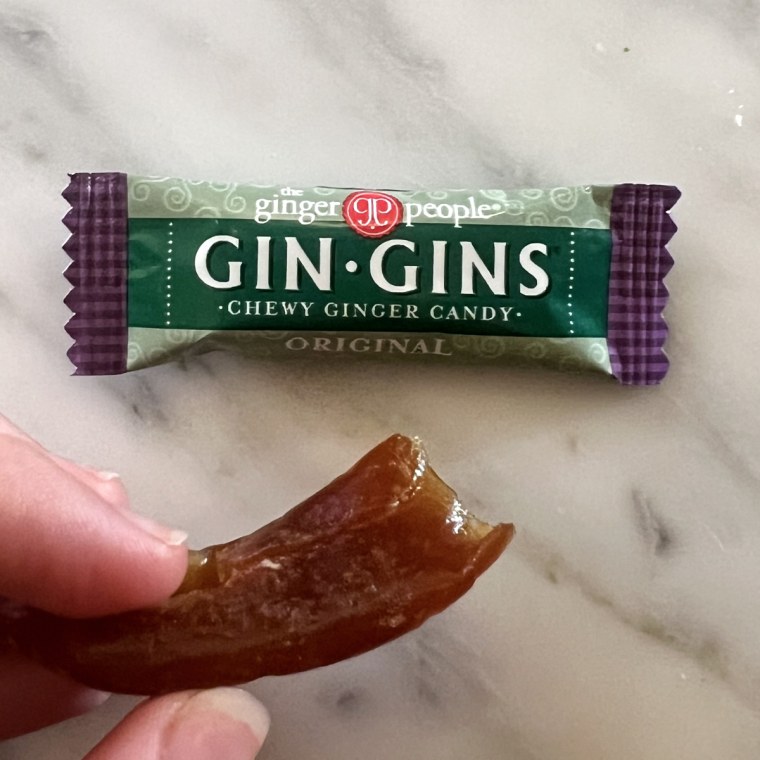
If you want a harder candy with a stronger taste, both Malin and I love the Gin Gins Original Ginger Chews . The strong ginger flavor stops motion sickness in the first place, in both my and Malin's experience. “Not only does the ginger taste of these candies make me feel less nauseous, but chewing them also gives me something to focus on other than how sick I feel in the car,” says Malin. “I’ve tried other ginger candies, but these are the only ones that have an intense enough flavor to dull my nausea.”
Acupressure
Some studies show that applying pressure on a certain point of the inner wrist may help prevent and treat nausea and vomiting, specifically at the pericardium 6 (P-6) acupressure point, which is three finger-widths away from the wrist, experts say.
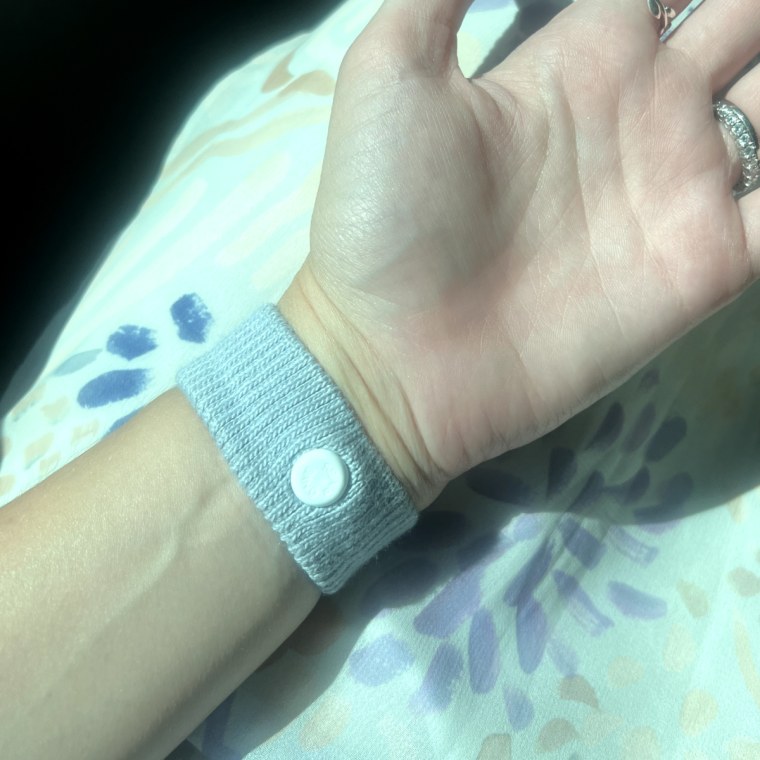
Since I have severe motion sickness when I’m on a boat or in a moving car, I used the Sea-Band Anti-Nausea Acupressure Wristbands on each wrist during a vacation to Italy. Each band has a small plastic circle that presses on the P-6 pressure point, and they helped me avoid nausea and dizziness when on a tour boat in the Mediterranean ocean, on a ferry on the Amalfi Coast and in a small van riding through the hilly Tuscan vineyards.
While many people, including me, swear that pressing on an acupressure point at the base of the wrist or wearing bands that press on this area reduces motion sickness, research has not shown them to have much impact on symptoms. “But there is no harm in using them, either,” says Qing. They are also safe and relatively inexpensive to try, says Tuznik.
Isopropyl (rubbing) alcohol
Smelling rubbing alcohol can be a safe way to relieve nausea symptoms, and it’s sometimes as effective as some medications, says Malka. “Packaged single-use alcohol swabs are a safe, portable measure that you can bring with you to use as needed,” she says.
Frequently asked questions
Most motion sickness medications work best when you take them 20-40 minutes before you start traveling, so make sure to plan ahead, says Malka.
Avoid taking motion sickness medicines after the onset of symptoms. “Once you have the symptoms already, a lot of the anti-motion sickness medicines are not going to work as well because your stomach processing slows down, so the absorption of the medication you're taking at that moment is going to be decreased,” says Bawer. “It’s still going to work, but it just won’t be as effective.”
For people with a history of mild motion sickness (which means that it does not interfere with your ability to function), experts recommend environmental modifications and natural remedies. Medications are usually not recommended because the side effects may outweigh the benefits, says Tuznik.
Though motion sickness is most common in children between the ages of 2 and 12, some motion sickness medicines are not recommended for children. Talk to your child’s doctor about medicines and correct dosing for motion sickness, and only give the recommended dosage, according to the Centers for Disease Control and Prevention .
One of the most common motion sickness triggers is stress and anxiety, specifically anxiety before you even start your travels. “If you know that anxiety or nerves cause a lot of motion sickness for you, talk with your doctor or a therapist before you leave about some options to reduce anxiety like meditation, breathwork, journaling or, in some cases, medication,” says Malka.
Meet our experts
At NBC Select, we work with experts with specialized knowledge and authority based on relevant training and/or experience. We also take steps to ensure all expert advice and recommendations are made independently and without undisclosed financial conflicts of interest.
- Dr. Danielle Qing is an internal medicine physician and assistant professor in the Department of Medicine, division of General Internal Medicine at Mount Sinai Hospital.
- Dr. Barbara Bawer is a primary care physician and clinical assistant professor of family and community medicine at the Ohio State University Wexner Medical Center.
- Dr. Terez Malka is a travel medicine physician at Duration Health, a telehealth urgent care platform.
- Dr. Natascha Tuznik is an infectious disease specialist and an associate clinical professor of medicine and associate program director of the Infectious Diseases Fellowship at UC Davis Medical Center.
Why trust NBC Select?
I am an updates editor at NBC Select covering a wide range of wellness topics, including sunscreen for kids , deodorants and antiperspirants , and rosacea treatments . For this article, I spoke to four physicians about the best ways to treat and prevent motion sickness, including OTC remedies and prescription medications. I also rounded up some NBC Select editor-favorite treatments for motion sickness.
Catch up on NBC Select’s in-depth coverage of personal finance , tech and tools , wellness and more, and follow us on Facebook , Instagram , Twitter and TikTok to stay up to date.
Mili Godio is an updates editor for Select on NBC News.
- sunwatermarine
- Dec 8, 2021
5 Best Watermakers for Sailboats
Last Updated by Daniel Wade, October 1, 2021

With the right Watermaker, the ocean becomes an almost immeasurable supply of fresh and clean drinking water to keep you hydrated during your offshore sailing adventures.
Many sailors do spend a lot of their time and money on various parts of the sailboat including the sails, engine, electronics, and generators especially when preparing for long-distance voyages.
While there's absolutely nothing wrong with this, they often overlook one crucial part of general human survival: having an ample supply of fresh drinking water.
Whether you have freshwater drinking tanks on your sailboat or planning to cruise in areas where you can easily access clean drinking water, the hassle involved in having to come to the dock to fill the water tanks can be quite overwhelming.
This is exactly why you need to find the best watermakers for sailboats.
Like many other nautical technologies, watermakers have significantly advanced in the last few decades to become very efficient and more reliable. They're no longer a luxury on your sailboat but a necessity. Better still, watermakers have become relatively affordable and are meant to keep you hydrated as you explore areas that do not have clean and fresh drinking water.
In this article, we'll take a look at how watermaker systems work, highlight their benefits, and highlight the best sailboat watermakers on the market right now. At the end of this read, you should be able to choose the best watermaker for your sailboat.
Benefits of Having a Watermaker on Your Sailboat
The freedom and security that come with having full water tanks on your sailboat are of immense importance, especially if you're cruising in an area where fresh drinking water is hard to come by and quite expensive when you do. As such, having a watermaker aboard your sailboat is no longer a luxury like it used to be in the past. With a steady supply of fresh and clean water, your life on the sailboat will be a lot better. This is because you'll have enough clean water to drink, cook, wash, and shower, which is beneficial if you want to enjoy your sailing adventures.
Honestly speaking, many sailors do not actually need a watermaker. Well, if you're planning to sail just near the shores, then there's a chance that you can easily access fresh and clean water by the dock. But this can be limiting if you've been dreaming of going off the grid and sailing to some exotic and unknown places in the world.
With that in mind, a watermaker makes a lot of sense to most sailors. You won't have to worry about having to carry aboard gallons of freshwater for cooking and drinking during your voyage. You won't have to treat freshwater as a precious commodity that must last until you can refill at the next port. With a watermaker, you can simply go ocean crossing without worrying about running out of water.
A watermaker allows you to have a steady supply of fresh and clean water to keep everybody well-hydrated and healthy. You can clean the water anytime you feel like and all you have to do is replace the filter once in a while and you'll be good to go. In essence, a watermaker is probably one of the most important equipment to have aboard your sailboat, so installing it is of great importance if you're a serious sailor.
The Basics of Modern Marine Watermakers
Modern marine watermakers essentially follow the principle of reverse-osmosis to produce pure, drinking water from seawater. During this process and through very high pressure, seawater is forced through a semipermeable membrane that only allows freshwater molecules to pass through it but not salt, bacteria, or any other organic material. The newly made pure, drinking water is then piped to the sailboat's water tanks while the leftover (brine) is discharged overboard.
Even though marine watermakers may differ in the type of pump that's employed and how it is driven, this is one of the most important features in every watermaker. In most cases, water can be electrically pumped or powered directly off the boat's engine. If you have an AC generator or alternator on your boat, it would make much sense to use the AC output to drive the watermaker directly. You can also choose the DC-powered models if you rely on renewable energy from solar or wind. Alternatively, you can still go for AC-powered watermakers but you'll have to buy an inverter.
All in all, DC-powered watermakers are more efficient since they integrate a power-saving energy recovery system (ERS). You must, however, keep in mind that your energy consumption levels might be quite high if you're sailing in colder and saltier areas. This is because the water purification process might be a bit slower in such areas. As such, you should consider investing in a more high-powered watermaker system if you will be sailing in colder and saltier areas than if you're planning to sail more in warm and less salty areas.
As far as an engine-driven watermaker is concerned, you should mount the high-pressure pump on the engine so that it can be belt-driven using an automatic clutch. An engine-driven watermaker should be your first option if you want large quantities of fresh drinking water. This is more productive than AC or DC-powered watermakers. Even with a relatively small engine, this setup has an automatic regulator that constantly pumps the water. With that in mind, engine-driven watermakers are ideal if you want to reduce your energy consumption. To put it into perspective, an engine-driven watermaker can lower energy consumption by an enormous 80%, especially when compared with conventional AC or DC-powered watermaker systems.
How to Choose the Best Watermaker for Your Sailboat
There are many factors to consider when looking for the best watermakers for your sailboat. Here are the most important things to consider.
Your Freshwater Needs
One of the most important things to consider before spending your money on a watermaker is your freshwater needs. What quantity would be enough to keep you going on your sailing adventure? While the quantity might differ from one sailor to the other or from one boat to the other, you should consider the number of gallons that a particular watermaker can produce per day. This will help you in choosing the ideal watermaker; a model that will ensure that you never run out of water. Do not underestimate your water needs, especially if you're planning to sail with your children or if you're planning to stay on the boat for an extended period of time.
Do you have enough space on your vessel to accommodate the type of watermaker you're looking to buy? While most watermakers are designed to fit in the smallest of space, you should consider the actual size of the watermaker and find out whether you have enough space on your vessel to fix it.
Watermakers can run on electricity, renewable energy such as wind and solar (if you have them on your vessel), or both. When looking for the perfect watermaker, you should consider how to power it and whether or not the watermaker has low-energy consumption, which is definitely a great feature. Again, there are also engine-driven watermakers, so it's important to know exactly what you're going for.
Maintenance
Watermakers have a reputation for being difficult to maintain. Fortunately, the equipment and components have improved in the last few years so you should go for a model that's easy to maintain. You should use the watermaker in water bodies that look good, You should avoid using the watermaker in dirty harbors as you may have to change the filters every so often or even damage your watermaker altogether.
Best Watermakers for Sailboats
Let's take a look at the best watermakers available on the market right now.
The Ultra Whisper

Engineered by limited electrical options that can run on either DC or AC, THE Ultra Whisper by Sea Recovery is one of the best watermakers currently available on the market. In addition to being very quiet, this watermaker features an automatic operation that requires very minimal operator adjustment.
This watermaker is ideal for small powerboats and sailboats since it can serve as an efficient water supply. This model boasts about a 75% reduction in power consumption, especially when compared to other models.
Smooth and quiet water production
Can produce up to 2,280 liters per day
Ideal for small boats
It is energy efficient
It might not be perfect for large boats
Echotec Watermaker

If you want a watermaker model that can produce 60 liters per hour flawlessly and with no maintenance apart from changing the filters, look no further than the Echotec Watermaker. This model is designed for ultra-reliable performance and easy customer installation.
This watermaker is made from high-quality components that can withstand the continuous harsh marine environment, making it one of the most durable watermakers on the market. This is essentially a series of modular watermakers ranging from 12-volt to 24-volt DC-powered models. They bring forth energy efficiency, a computerized energy recovery system, and ultimate reliability to ensure that you never run out of fresh drinking water while out there on the sea.
Energy efficient
Cost-effective
Comes with a very low speed
Not ideal for large boats
Spectra Katadyn PowerSurvivor

As a compact and energy-efficient watermaker, the Spectra Katadyn PowerSurvivor is arguably the most affordable watermaker currently available on the market. We are talking about a model that only requires 4 amps to desalinate water for your sailboat. It can produce 1.5 gallons of fresh drinking water per hour, which is an excellent return for a watermaker of its size.
It is also one of the most portable watermakers around. You can choose to either install it permanently or temporarily in case you want to take it somewhere else. This portability is also essential if you're looking for a space-saving model that can fit in the smallest of compartments. Its simple but rugged design is essential in ensuring that it can perform at its best even in harsh marine conditions. In terms of its power capabilities, this is the only model on the market that will convert to a hand-operated system or manual power if there's a power shortage.
Portable and lightweight
Rugged design to withstand harsh marine environments
Efficient and reliable
Can revert to manual power if there's a power shortage
Perfect for off-grid sailing
Gasoline or diesel can easily damage the semi-permeable membrane
Village Marine - Little Wonder Series

Whether you're looking for a watermaker for your small sailboat or looking for a watermaker that can efficiently serve those huge yachts, the Village Marine Little Wonder Series provides everything. This model is meant for experienced sailors who are looking for various capacity options. This watermaker weighs just about 69 pounds but can produce nearly 180 gallons of fresh drinking water each day.
Designed with a low RPM high-pressure pump, this model remains one of the most efficient and economical watermakers on the market. That's not all; this watermaker is designed with corrosion-resistant features and is one of the most serviceable watermakers in the game. It is reliable, quiet, and portable; all factors that make a watermaker great.
Easy to operate
Corrosion-resistant
Easy to maintain
Quiet and versatile
It doesn't have automatic adjustment controls
Ventura 150 Watermaker

This is one of the most versatile watermakers on the market. It can use both electricity and renewable energy. This model is engineered to be lightweight and energy-efficient and its compact and modular design makes it a great option if you're looking for a watermaker that's easy to use and install in confined spaces.
The Ventura 150 watermaker is highly efficient as it can produce over 6 gallons of water an hour, which makes it quite perfect for small vessels. This sailboat watermaker features a controller that allows you to operate and monitor the device remotely. It also has the auto store button that will automatically flash the system after every five days.
This watermaker is quiet and surprisingly compact despite its ability to produce about 150 gallons of water per day. It also gives you the option of going for the automated manual or manual model.
Very versatile
Can use both electricity and renewable energy power
It is smooth and quiet
It is compact and lightweight
The manual model has analog controls
To this end, it's easy to see that having an ideal watermaker aboard your vessel is one of the first crucial steps towards being self-sufficient and sustainable. With a watermaker, you'll be able to access fresh drinking water at all times when sailing even in far-flung places. Most of these models are well-constructed and incorporate some of the best technologies that make them efficient, reliable, and easy to install, use, and maintain.
So when it comes to choosing the best watermaker for your sailboat, it may all come down to what is ideal for you in terms of energy consumption, efficiency, the quantity of water produced, among many other things. With an ideal watermaker, you can remain off the grid for as long as you want without ever worrying about running out of water and this is of great importance in enjoying your sailing adventures.
Recent Posts
James Richmond on bluedotliving.com
Flanigan's Eco-Logic Convo Featuring James Richmond
Horsepower VS. Torque
Recommended
Robert de niro’s daughter drena shares video of actor leaping off a yacht for 81st birthday: ‘he’s so crazy’.
He’s a daredevil.
Robert De Niro’s oldest daughter, Drena De Niro, shared a video of her father leaping off a yacht in honor of his 81st birthday.
“Happy 81st Bday to my Dad and #1 ride or die,” she captioned the Instagram post . “Love you with all my ♥️♥️♥️ #BobbyD forever ✨👑.”
In the video, the shirtless “Goodfellas” actor jumped off a yacht into the ocean, wearing only a pair of red-and-blue striped Vilebrequin swim shorts .

Want more celebrity and pop culture news?
Start your day with Page Six Daily.
Thanks for signing up!
Please provide a valid email address.
By clicking above you agree to the Terms of Use and Privacy Policy .
Want celebrity news as it breaks? Hooked on Housewives?
Though Robert dived head first, he ended up hitting the water on his back.
“He’s so crazy. Oh my God. Oh my God. Are you alright?” Drena, 56, asked her father once he resurfaced in the water.
The dad of seven replied, “I’m OK.”
Drena then told Robert he was “sick” and “crazy” for the epic leap.

The actress asked a yacht employee how many feet her father jumped from, to which they responded, “36 feet.”
Drena’s comments section was flooded with birthday wishes for the legendary actor.
“HBD to 1 of 1, New York’s finest.🏛️🥂,” wrote one user.
“Happy Birthday To The Best Actor In The World❤️,” added another.

“A Happy Birthday to the best actor of all Time, for his 81st Birthday. And many more. From a very big fan ❤️❤️❤️❤️,” said as third person.
“Happy birthday to the OG!!!!! May we all look this good at this age! Godless,” said a fourth fan.
In the Instagram carousel, Drena, whom Robert adopted during his marriage to Diahnne Abbott, shared a throwback photo of her late son, Leandro, and the “Irishman” star.

In July 2023, Drena announced that her son, whom she shared with graffiti artist Carlos Rodriguez, had died at age 19.
Leandro passed away from a “toxic” combination of illicit drugs , the New York City Medical Examiner told Page Six last August.
Following the news of his grandson’s death, Robert released a statement , saying he was “deeply distressed.”

Advertisement
- Weird But True
- Sex & Relationships
- Viral Trends
- Human Interest
- Fashion & Beauty
- Food & Drink
trending now in Lifestyle

Burger King cook who received mediocre gift after never missing a...

Northeastern towns issue voluntary lockdown to prevent spread of...

Gen Z is bringing back another millennial fashion trend —...

I'm a pharmacist — beware the potentially dangerous effects of...

What is the smartest state? And no, it isn't NY

2 foods could be fueling cancer epidemic in young people: docs

Inside 'dark tourism' — the new trend for wealthy boomers...

Inside the KKK plot to kill Barack Obama — and the FBI...
Breaking news, this beloved taco bell boasts beachfront real estate, beer and whale watching from the patio: ‘an honor just to stop by’.

Take a boat, hop a train, catch a plane.
America’s “most loved” Taco Bell has some of the most valuable real estate in the state of California — a prime oceanfront location in suburban San Francisco , so close to the beach that some customers even walk in barefoot after a morning of surfing.
Located in the town of Pacifica, the restaurant boasts a smart, nautical theme — think white walls, vaulted ceilings, walls of windows to take in the stunning view and a fireplace for chilly days.

There’s also a popular, beach-facing patio — the perfect spot for an affordable beer , which the restaurant, a “Cantina” location of the chain, serves, along with a range of boozy treats.
The otherwise business-as-usual location of the franchise has won over so many fans, it’s earned the title of best in the country, according to Fast Company , which crunch-wrapped review scores nationwide to determine the finest (and the most fearful) five branches of the chain.
Using Google Maps, researchers ranked thousands of locations, taking their average score and then weighting them to level the playing field, as some of the restaurants boast far more reviews than others.
The Pacifica ‘Bell came in caliente with an average score of 4.42 out of 5 and 3,400 Google reviews to take the ultimate prize.
“Officially the worlds most beautiful Taco Bell! A wonderful place to stop for people passing through,” one happy customer wrote on the site.

“I couldn’t believe the surrounding view. We sat on the balcony and were able to watch the surfers. Coolest Taco Bell ever,” another gushed.
Yelp ranks the restaurant much lower — 3.5 out of 5, with 690 reviews — but many of them are raves as well.
“It’s an honor just to stop by the world’s most beautiful Taco Bell…you really can’t beat this prime beach location nor its scenic views — especially with a taco and beer in hand,” said one local customer.

Out of the top five, three locations were located in the Rio Grande Valley of Texas — literally requiring fans to “Make a Run For The Border.” Minutes from Mexico, Taco Bells in Harlingen, Brownsville and McAllen earned some of the highest scores in the land.
And finally, the last to be admitted to the top five? A Taco Bell just over the Hudson River from NYC in Union City, NJ, according to Fast Company.
“It’s very nice to go to a place where you are treated with respect and the person shows hospitality towards others,” one burrito lover said of the service of the J.F.K. Boulevard store.

The article also called out the five worst Taco Bell locations in the country, according to the same metrics.
Hanover Park, IL, Cincinnati, OH and Deltona, Fla. were shamed, along with two Upstate New York branches; one in Buffalo and the other in Queensbury, just outside of Glens Falls.
Taco Bell was founded in 1962 in Downey, Calif. by Glen Bell, who found prior success selling his version of the crunchy tacos he enjoyed at a restaurant called Mitla Cafe in San Bernardino, Calif., which still exists.
The restaurant has recently been in the news for relaunching nostalgic menu items such as Meximelts from the ’80s, Gorditas from the ’90s and the Caramel Apple Empanada, an aughts-era favorite.

Advertisement

IMAGES
COMMENTS
Best Marine Watermakers Let's take a look at a roundup of some of the best boat watermakers on the market right now for your vessel. The Ultra Whisper The Ultra Whisper by Sea Recovery is best for small boats and sailboats, this super low power machine is specifically engineered for boaters with limited electrical options and can run on either AC or DC power, boasting a 75% reduction in ...
In this article, we'll take a look at how watermaker systems work, highlight its benefits, and highlight the best sailboat watermakers on the market right now. At the end of this read, you should be able to choose the best watermaker for your sailboat.
7 Best Sailboat Watermakers For Liveaboards 2024 If you're a liveaboard sailor looking for the best sailboat watermaker then you've come to the right place. In this blog post, we'll take a look at some of the best watermakers on the market and show you how they can help make your sailing experience more enjoyable.
The alternative method is a Clark pump watermaker, also known as an energy recovery device (ERD). This uses a fast-running but much lower-pressure pump which needs less power. To obtain the high pressure required, the pressure in the discharge water is harnessed by a couple of reciprocating pistons and used to boost the inlet pressure.
Bottom Line: The best application for this system is a larger boat with existing electrical capacity, and lacks a genset or a means of installing an engine-driven watermaker.
Katadyn-owned Spectra produces a wide range of watermakers, from the hand-operated Survivor 06 to a commercial AC model capable of producing 10,000 gallons per day. The most suitable units for cruising yachts are its DC/AC-powered Ventura, Catalina and Newport models, offering production rates of between 6.3 and 41gph.
In terms of installation, the kinds of watermakers that work best with the typical small or mid-size cruising sailboat are those that are fully modular—i.e., in which the filters, strainers, pumps and semi-permeable membrane are all installed separately in whatever kind of an arrangement suits your boat best.
The wastewater, or brine, is released overboard and the product water goes into your water tanks. Since all of the watermakers that are currently available for cruising sailboats use this process for desalination, the major differences between the systems are how you power the high-pressure pump and the user interface.
The best watermakers for sailboats can take seawater and turn it into potable drinking water, giving you infinite supply. Our top 3 picks!
Choosing the Best Watermaker for Your Boat, Part 1 Oct 04, 2022
Everything you need to know about watermakers. An onboard watermaker will free you from ever worrying again about where your next freshwater stop will be. Andy Pag looks at the latest models available for your yacht. The feeling of autonomy that a watermaker gives a yacht is unique. It transforms that weekend-only cruiser into a go-anywhere ...
A watermaker on a yacht converts seawater into fresh water through a process known as reverse osmosis (RO). A high-pressure pump pushes seawater through a semi-permeable membrane that filters out salt, organics, and bacteria. The fresh water is pumped into your water tanks while the remaining brine bi-product is discharged over the side of the ...
An honest Rainman Watermaker review to help you decide whether it's right for you! Is the Rainman Watermaker really the best out there?
Katadyn also markets the Spectra brand, with prices from as low as $1,200 for a basic emergency watermaker to $6,995 for systems capable of supplying the needs of a large yacht; https://www.katadyngroup.com . Open Ocean Water-Makers, a New Zealand company, builds a variety of complete systems, including engine-driven units like the one shown here.
It certainly helps with boat maintenance by offering virtually mineral-free water to prolong topcoat life. With a good membrane-maintenance program and annual service, your watermaker will give you years of good operation.
Small DC watermakers for yachts represent the epitome of convenience and efficiency in on-the-go desalination solutions. Their compact design is a game-changer for yacht owners, allowing for seamless integration into limited onboard spaces.
Yacht Watermakers Blue Water Desalination provides a comprehensive range of watermakers tailored to meet the exacting demands of mariners at every level, catering from day fisherman to long-range sailors and transoceanic yachtsmen. Across our extensive product lines, spanning both frame and modular styles, we offer a diverse array of models designed to accommodate various capacities. This ...
How Watermakers for Boats Work: The Science of Seawater Conversion Watermakers use pumps, filters, and membranes to purify raw seawater into freshwater. The process, reverse osmosis, is the same desalination plants use on a large scale. At the heart of the process is the membrane, a filter with pores the size of a red blood cell. After the larger particles in seawater are filtered out, the ...
Having the best watermaker for sailboats on board is one of the first and most important stages toward being sustainable and self-sufficient.
Schenker marine watermakers range, ideal for any size and power vessel. Available in 12 or 24V, AC/DC , for little and big boats.
Marine Watermakers Schenker watermakers are simple, quiet, compact, efficient and fully automatic. A Schenker watermaker will allow you - whether you own a yacht, a sail boat or any vessel - to extend your cruising duration and increase your independency from marinas, thus enjoying more time at sea.
The feasibility of operating a watermaker during sailing largely depends on the specific technology employed and the boat's power capabilities. Commonly, sailboats utilize energy-efficient desalination systems for boats, particularly those based on reverse osmosis, which can be powered by the boat's existing electrical system or alternative ...
Most motion sickness medications work best when you take them 20-40 minutes before you start traveling, so make sure to plan ahead, says Malka. Avoid taking motion sickness medicines after the ...
Bayesian was a flybridge sloop designed by Ron Holland and built with a 56 m (184 ft) aluminium hull and a single-masted cutter rig.The 75 m (246 ft) aluminium mast was especially designed for the yacht and at the time of construction was the world's tallest. The yacht had a lifting keel, allowing its draft to be reduced from 10 m to 4 m. [6] It was one of a number of similar vessels from the ...
Lynch, 59, was one of the UK's best-known tech entrepreneurs and had invited friends to join him on the yacht to celebrate his acquittal in June in a U.S. fraud trial.
In this article, we'll take a look at how watermaker systems work, highlight their benefits, and highlight the best sailboat watermakers on the market right now. At the end of this read, you should be able to choose the best watermaker for your sailboat.
Robert De Niro's oldest daughter, Drena De Niro, shared a video of her father leaping off a yacht in honor of his 81st birthday. "Happy 81st Bday to my Dad and #1 ride or die," she captioned ...
Rescue personnel work at the scene where a luxury yacht sank, off the coast of Porticello, near the Sicilian city of Palermo, Italy, August 22, 2024. ... The Best Cartoons on Donald Trump. Aug. 16 ...
A Taco Bell with valuable beach frontage just outside of San Francisco is being called the best in the nation. Google Maps Take a boat, hop a train, catch a plane. Located in the town of Pacifica ...
The Daily Express has a still of CCTV footage, captured from a nearby villa, showing the moments before the yacht capsized. The Guardian says the Chancellor, Rachel Reeves, is planning to raise ...